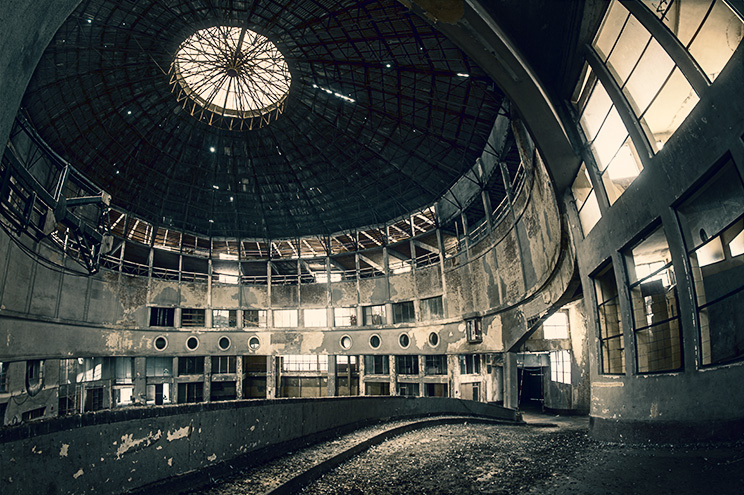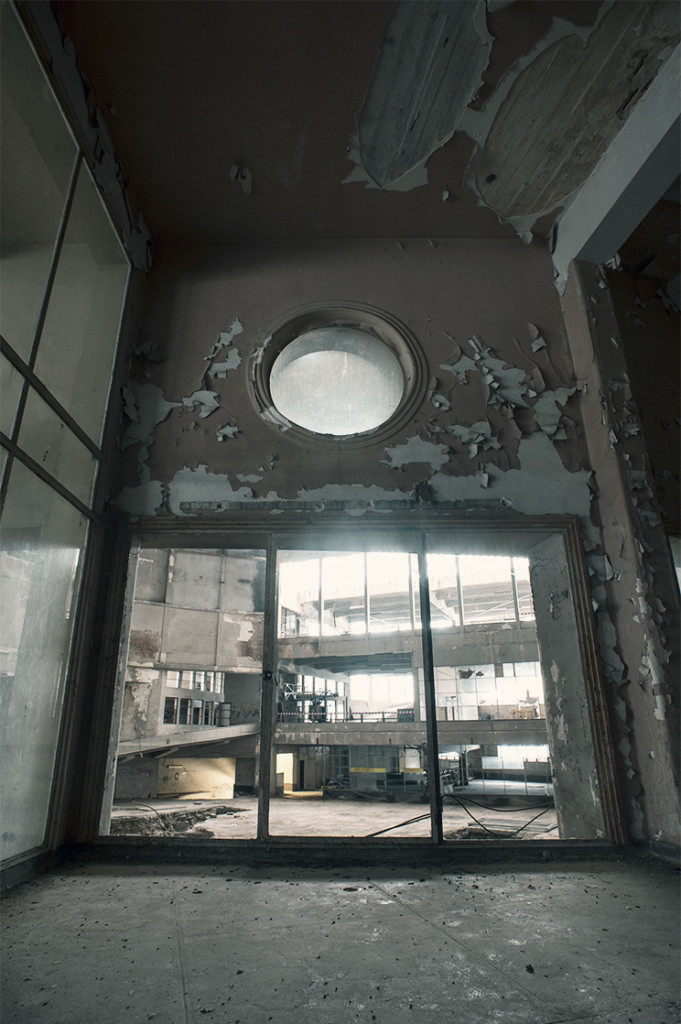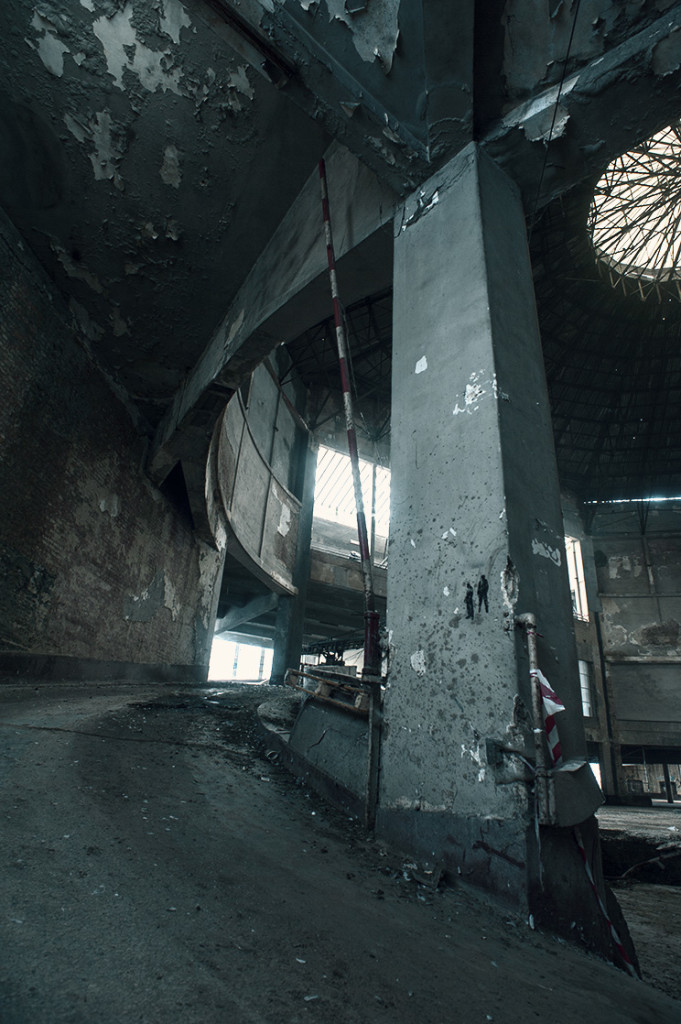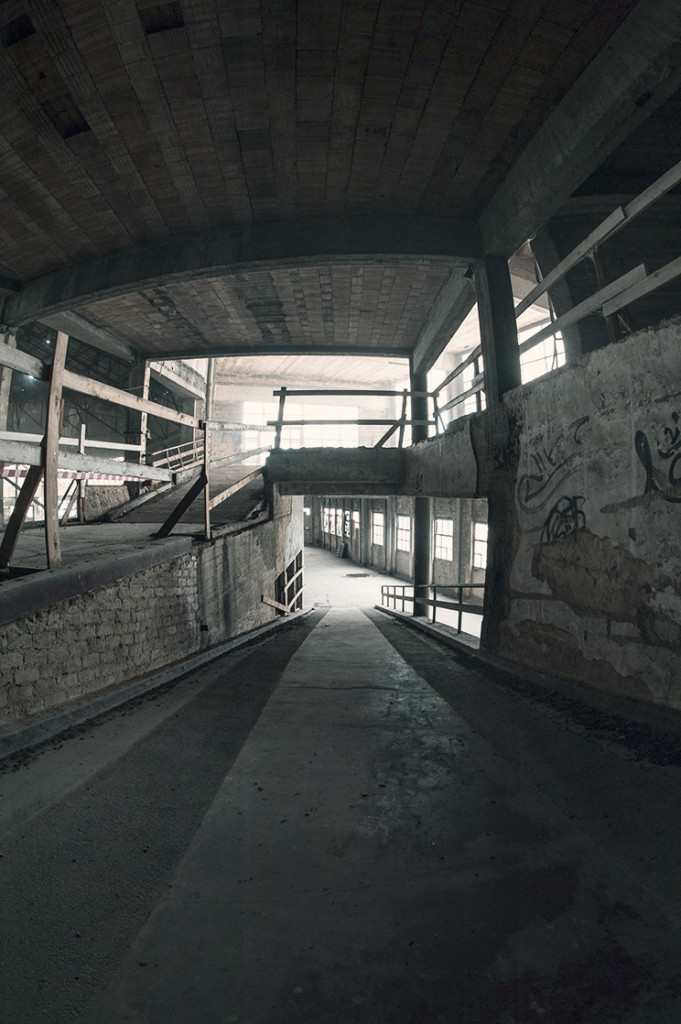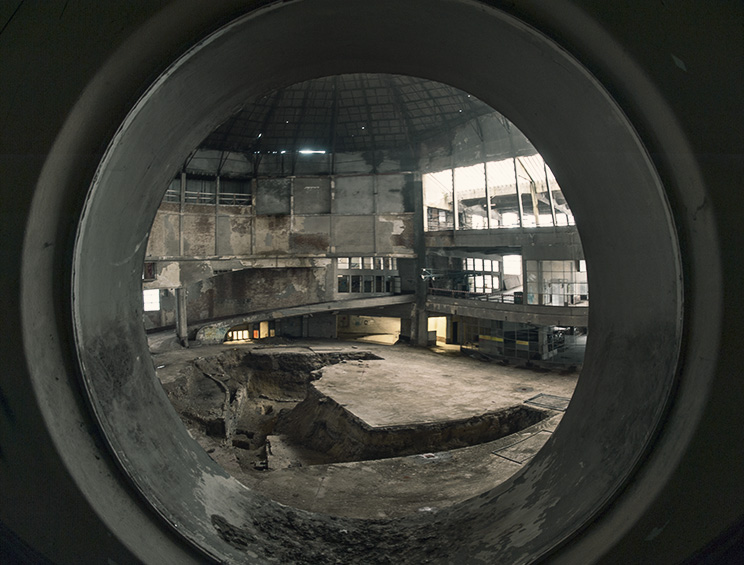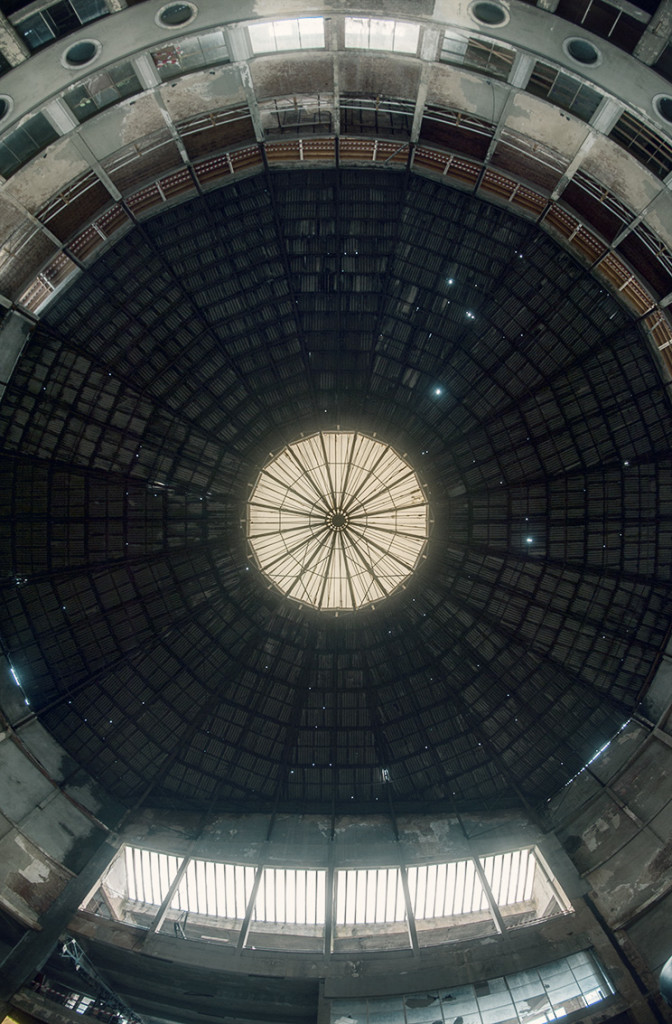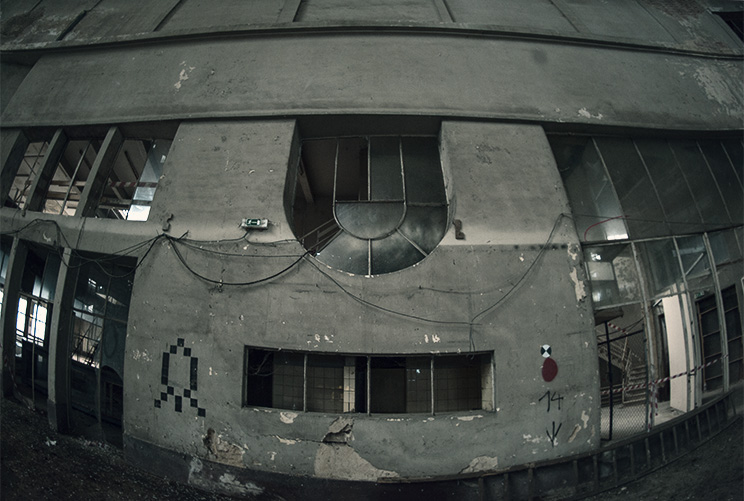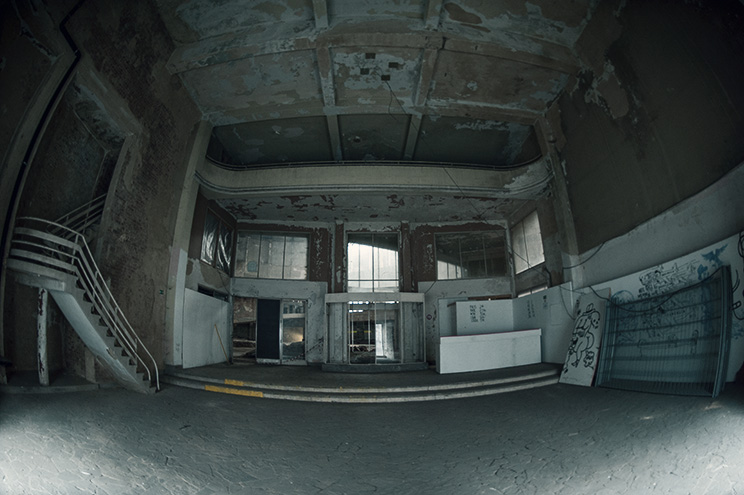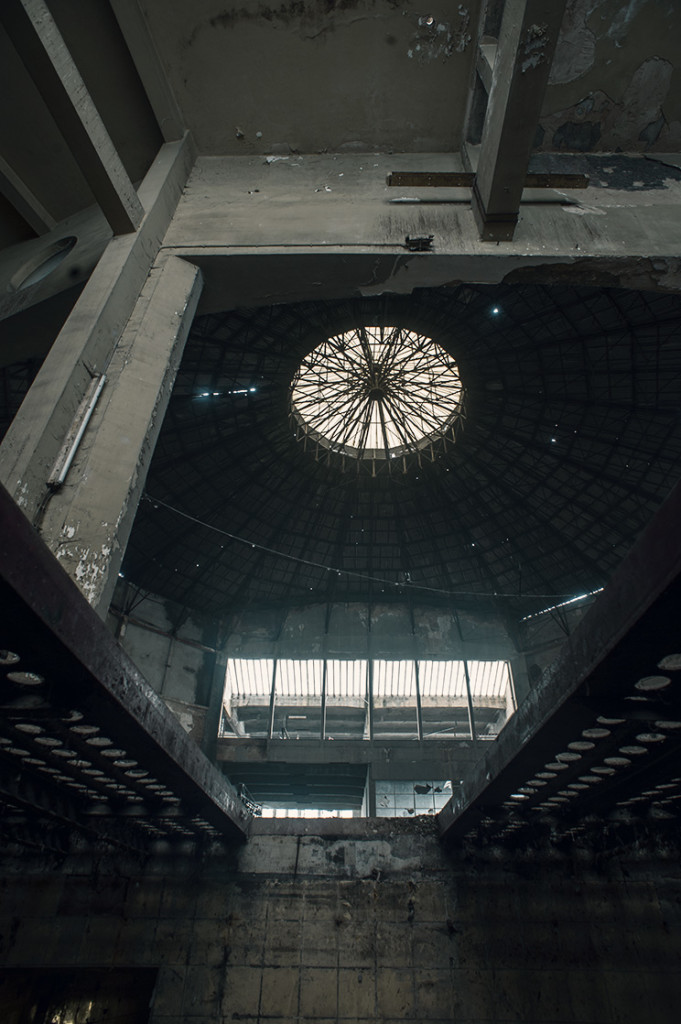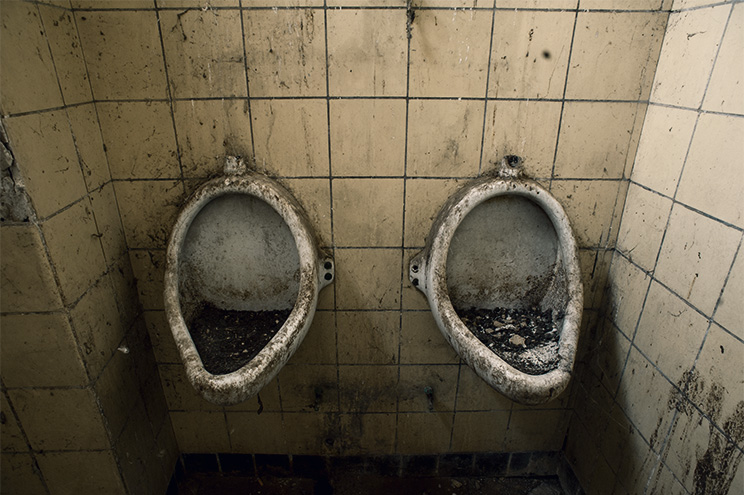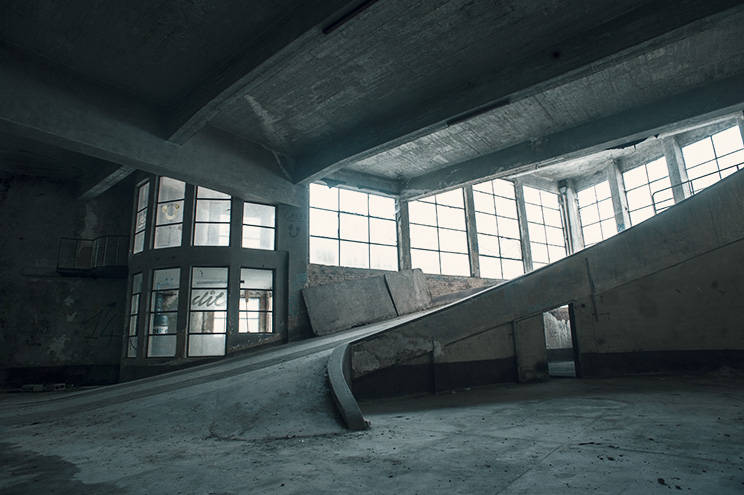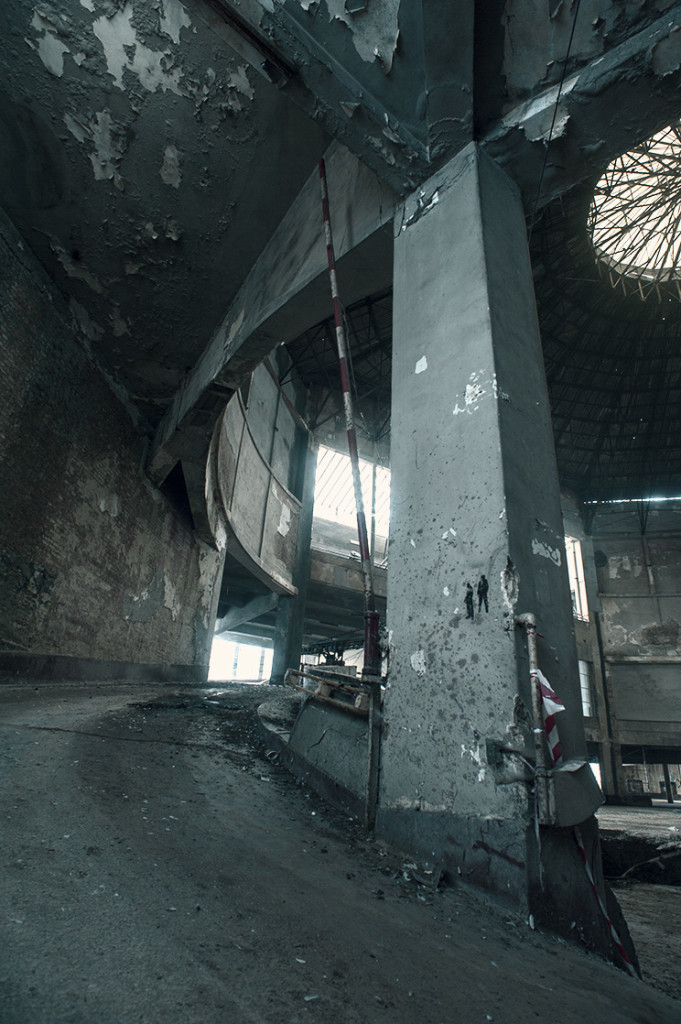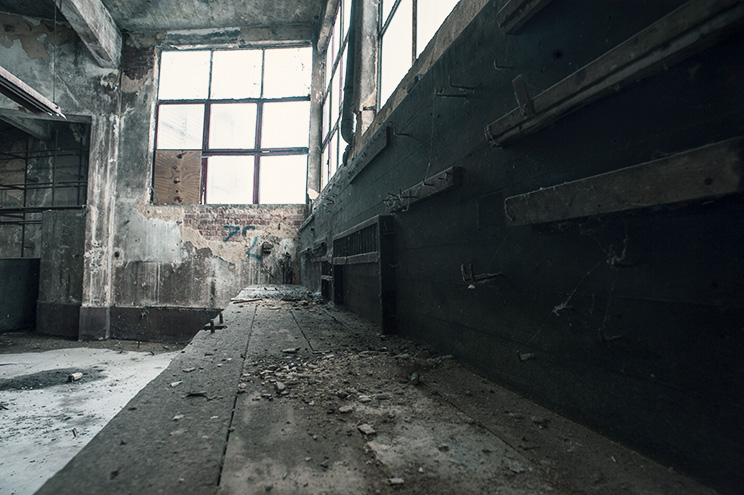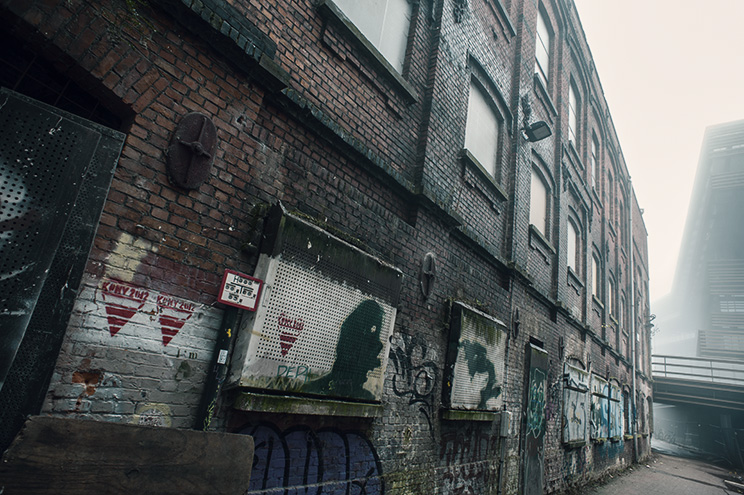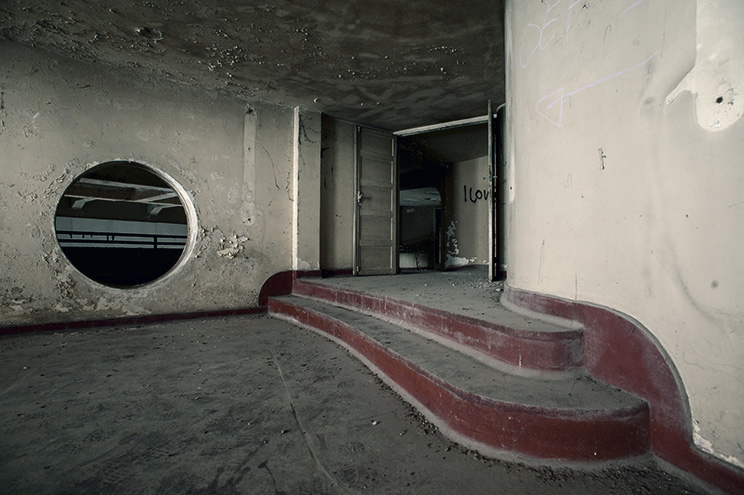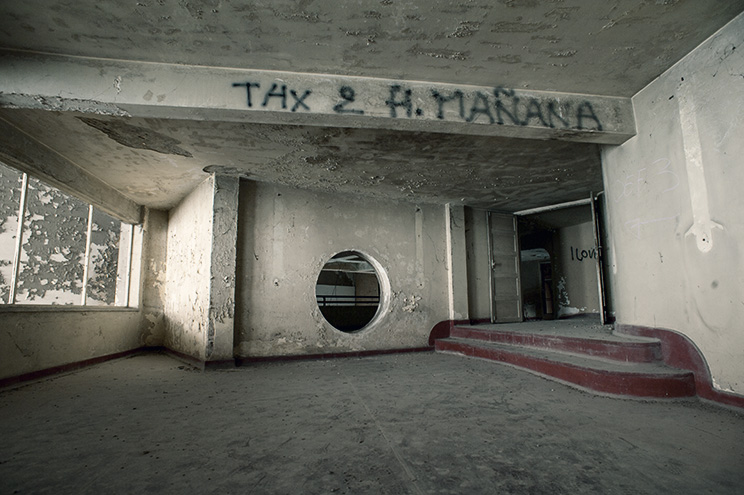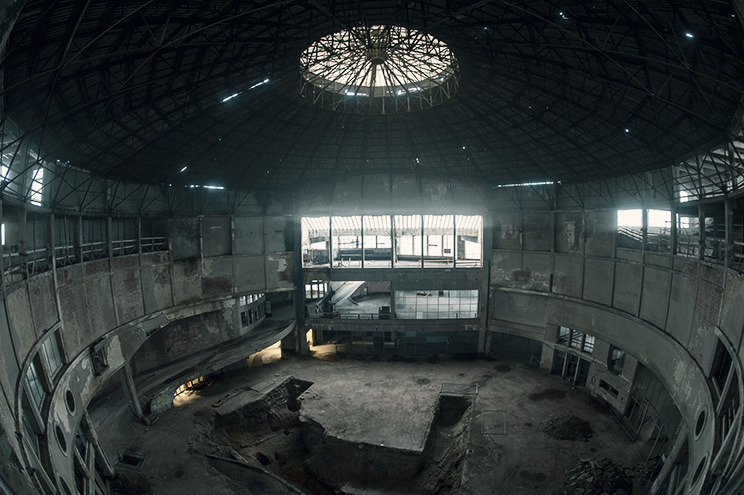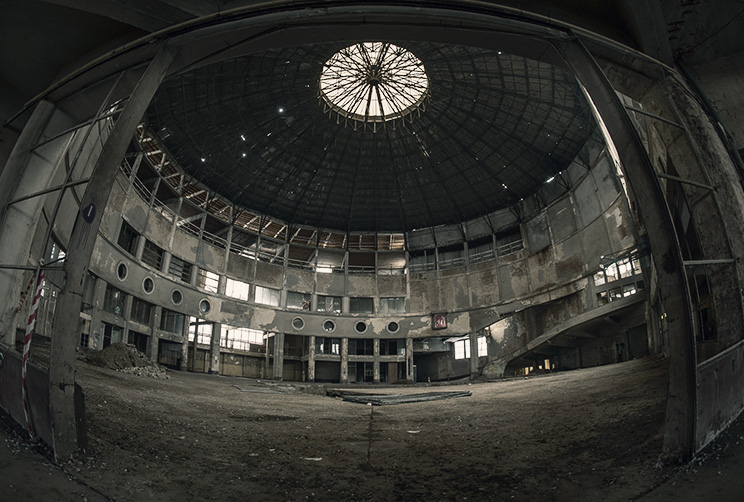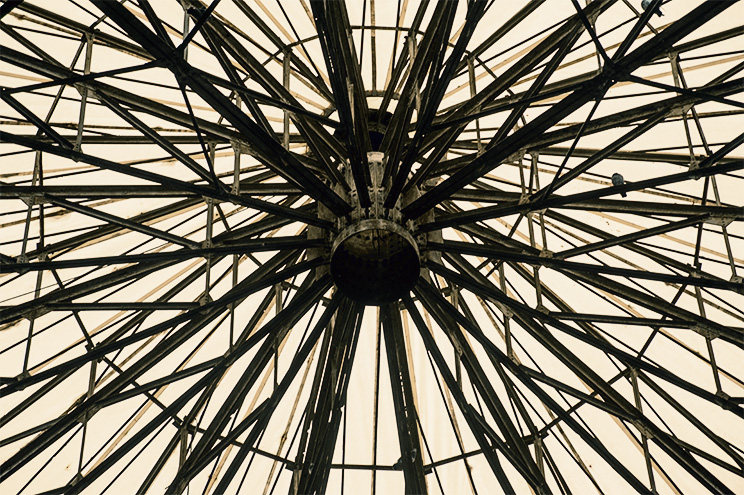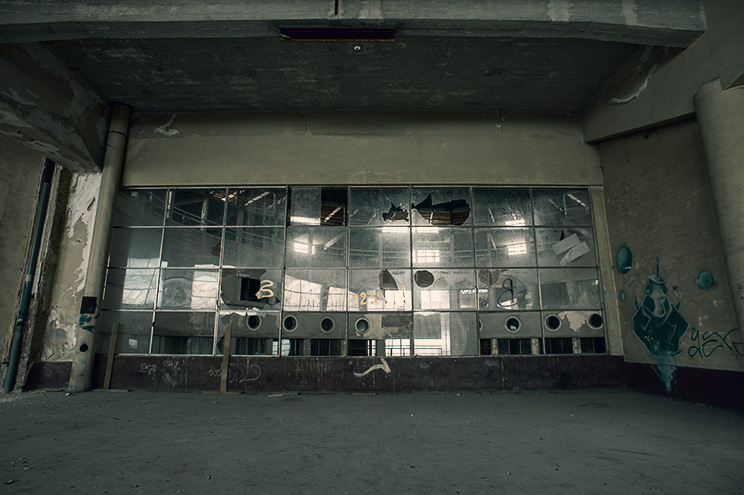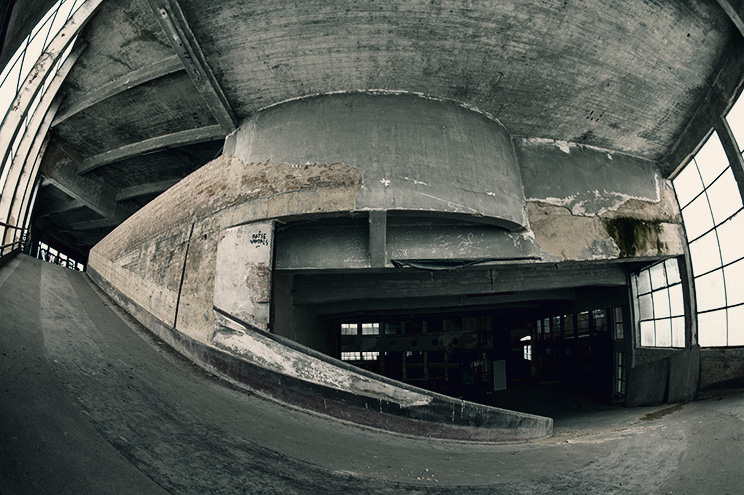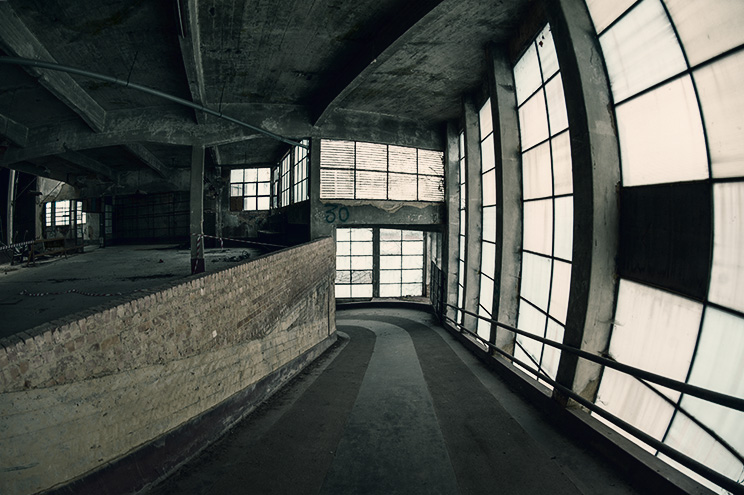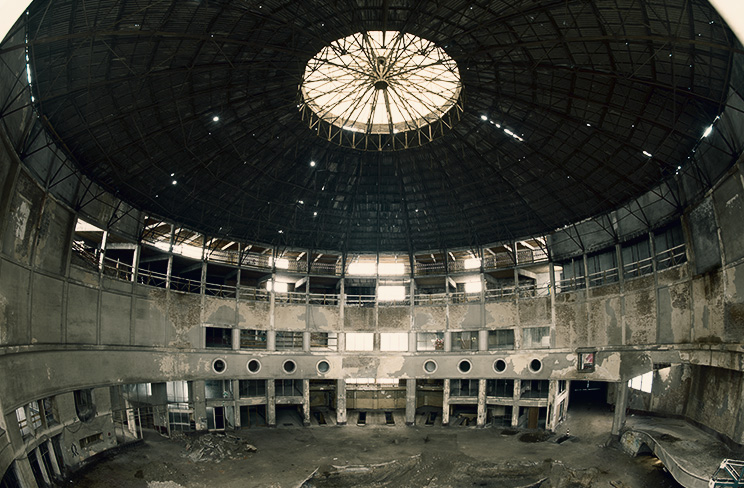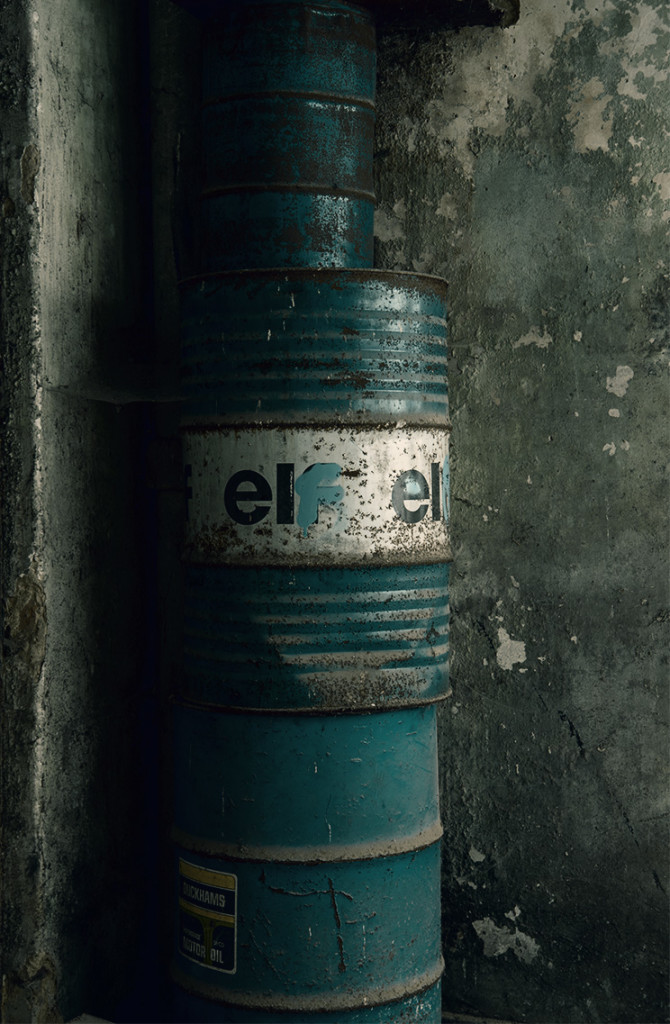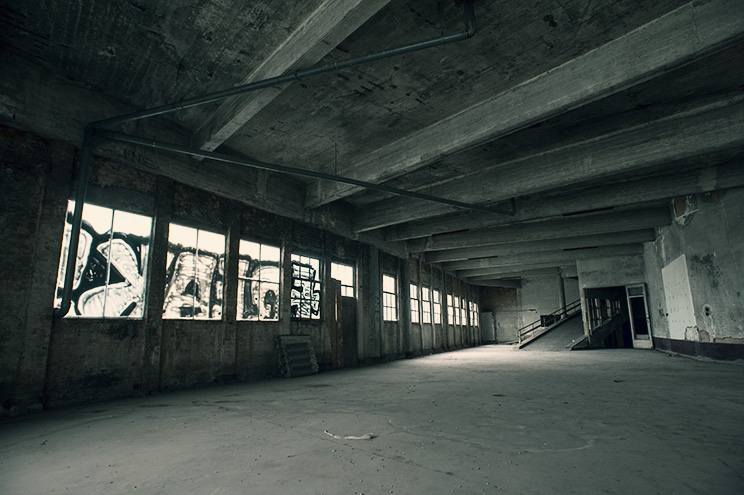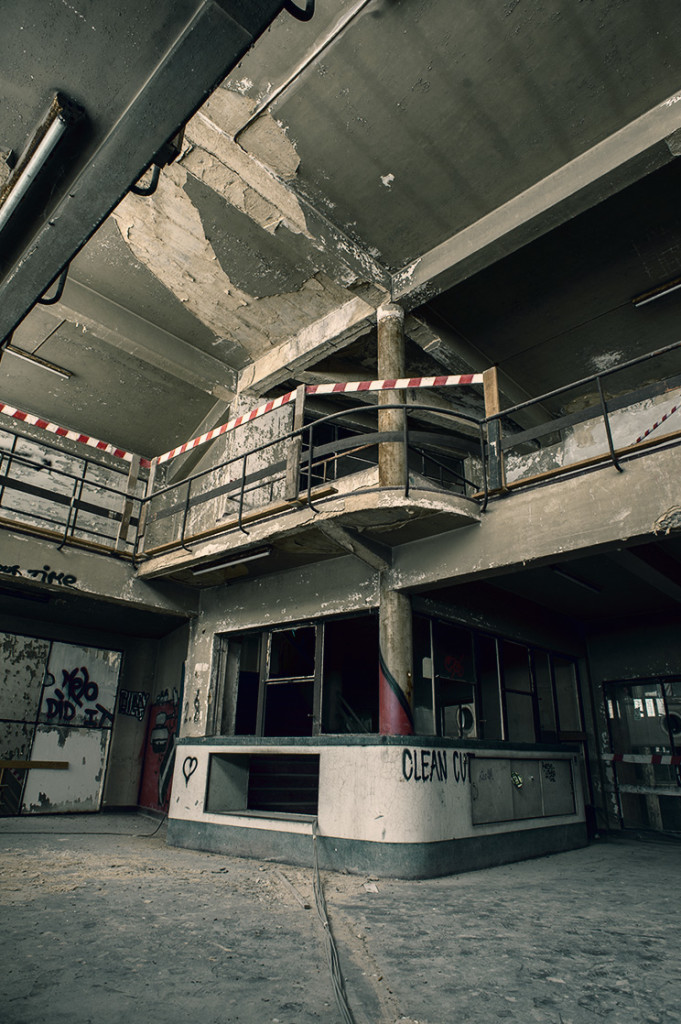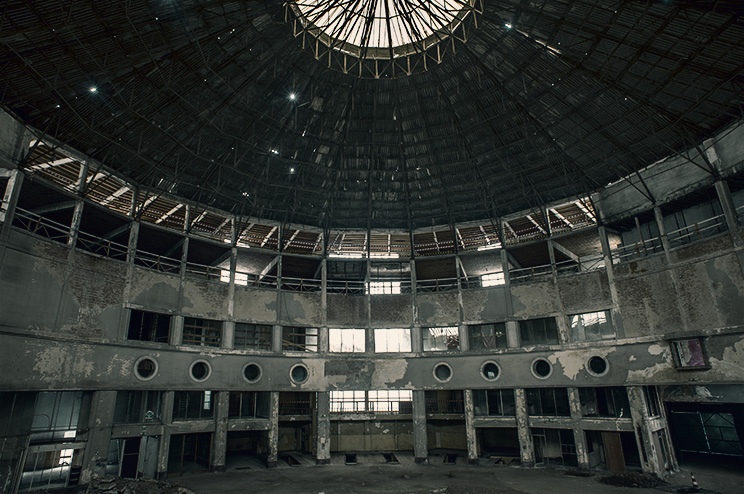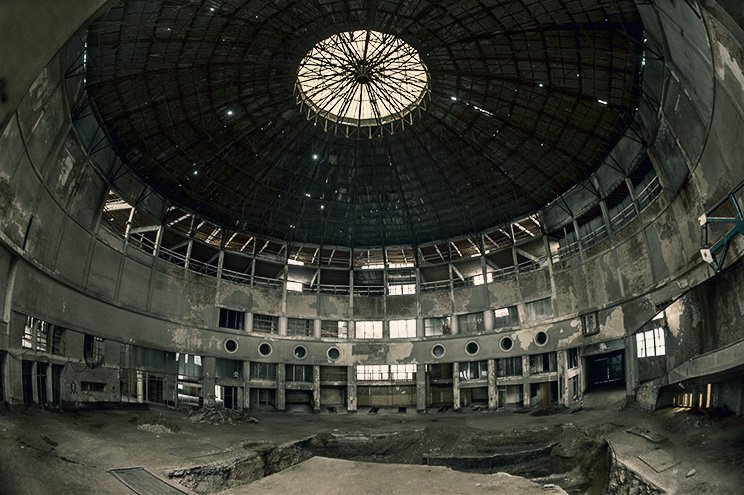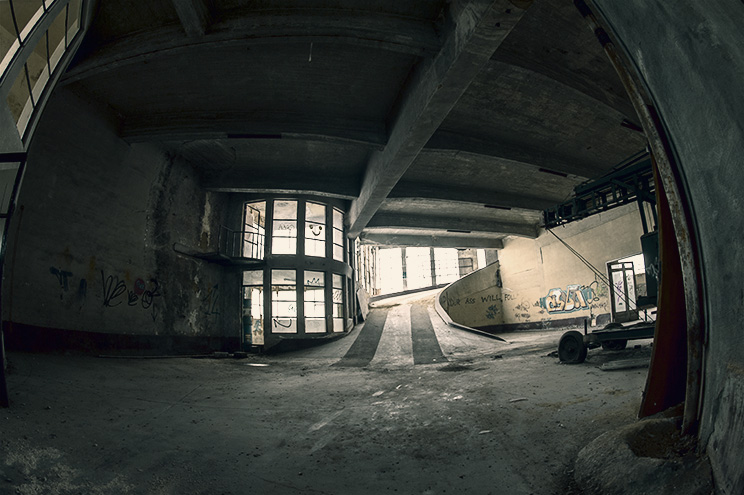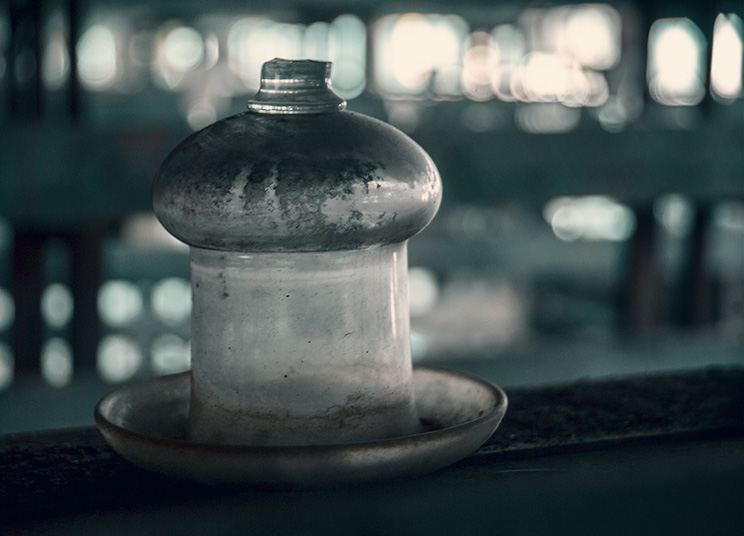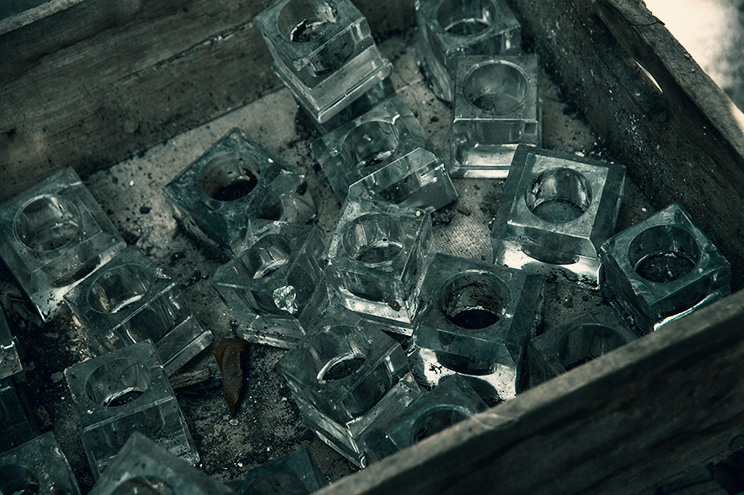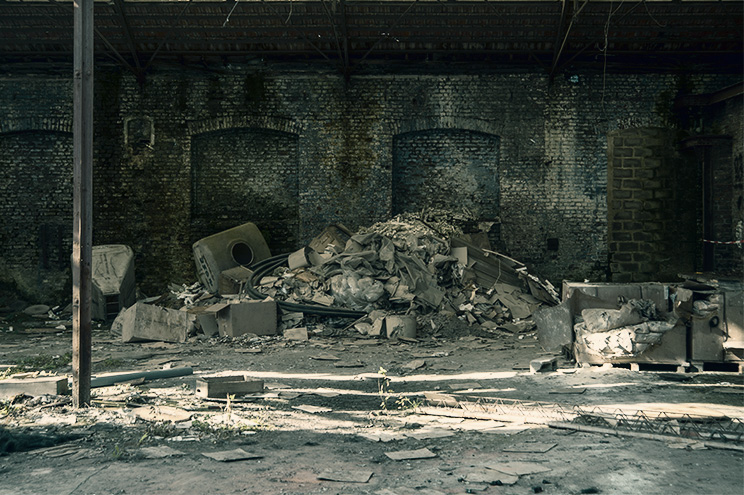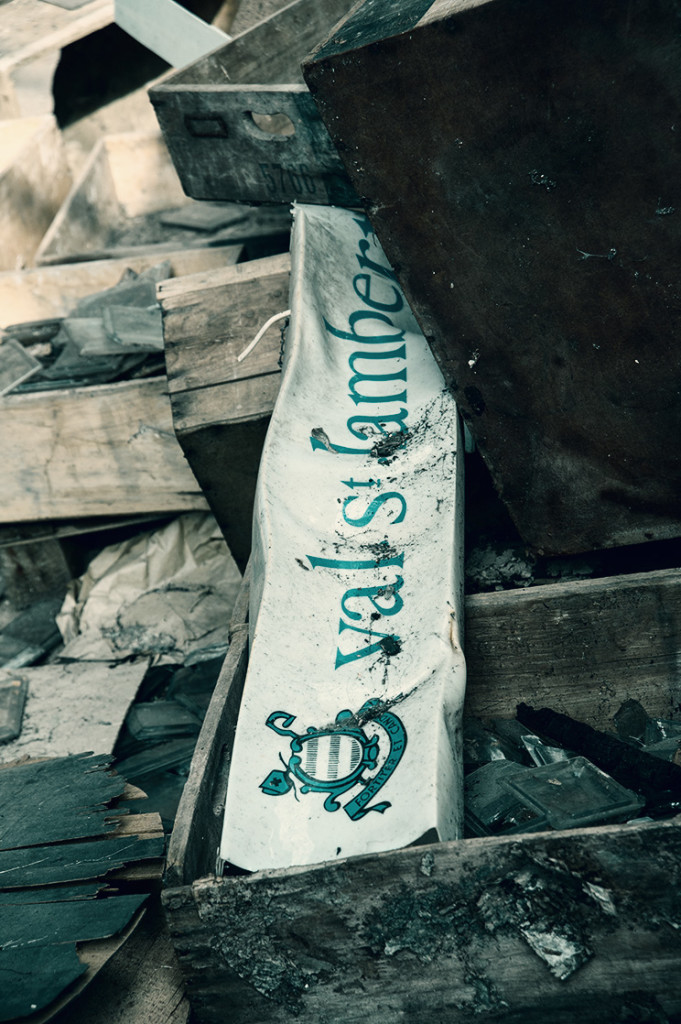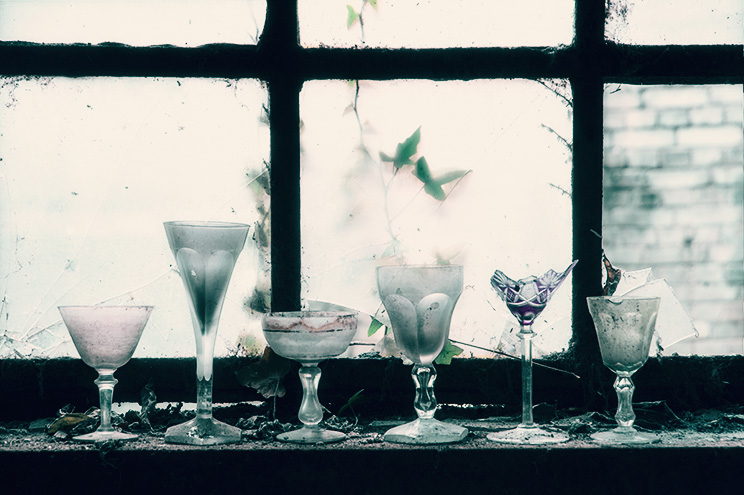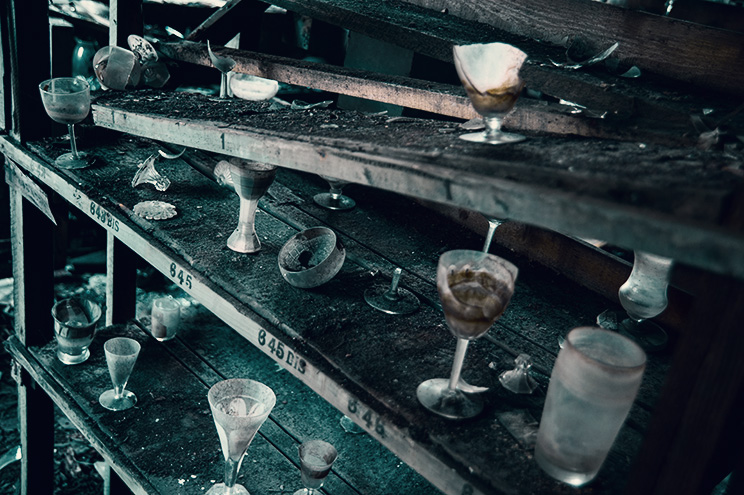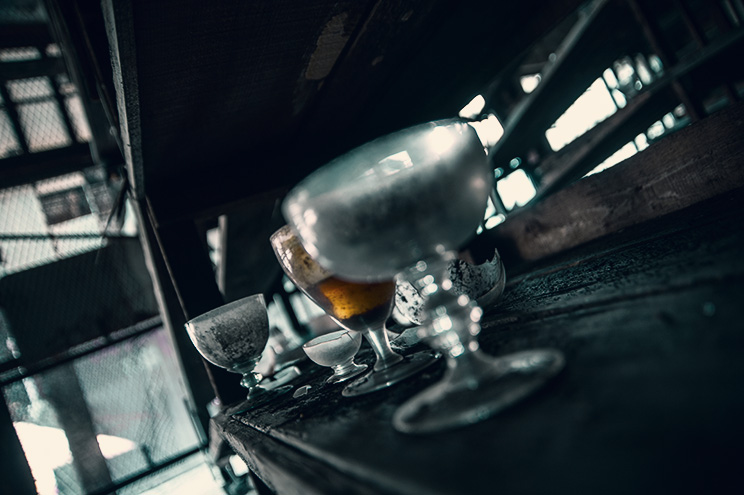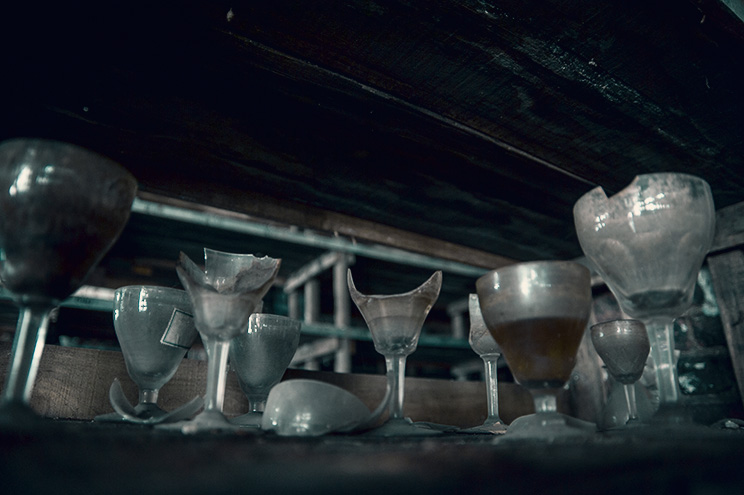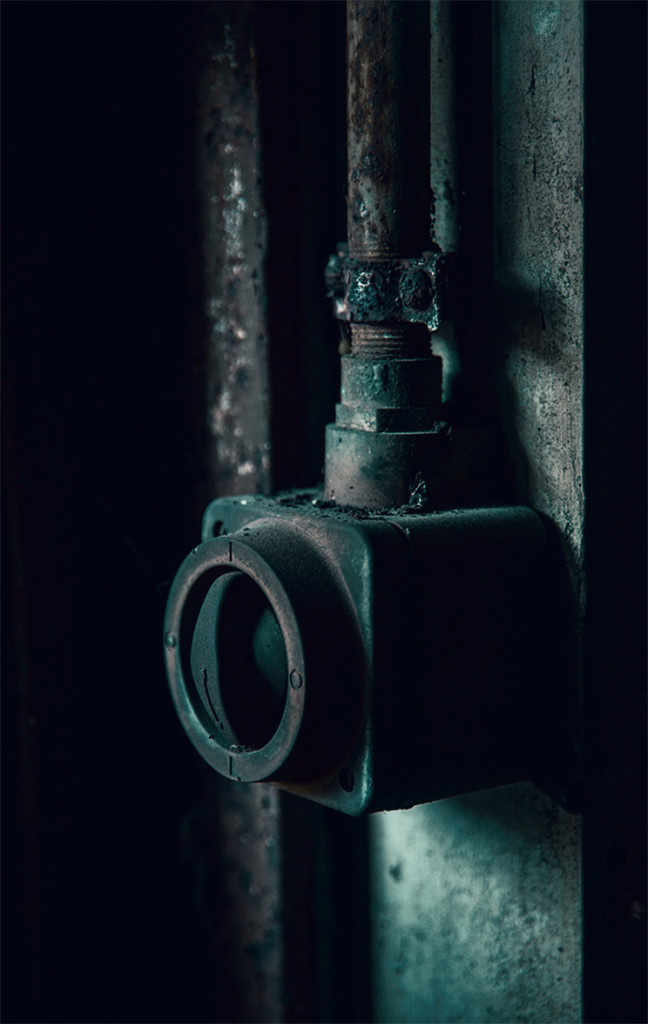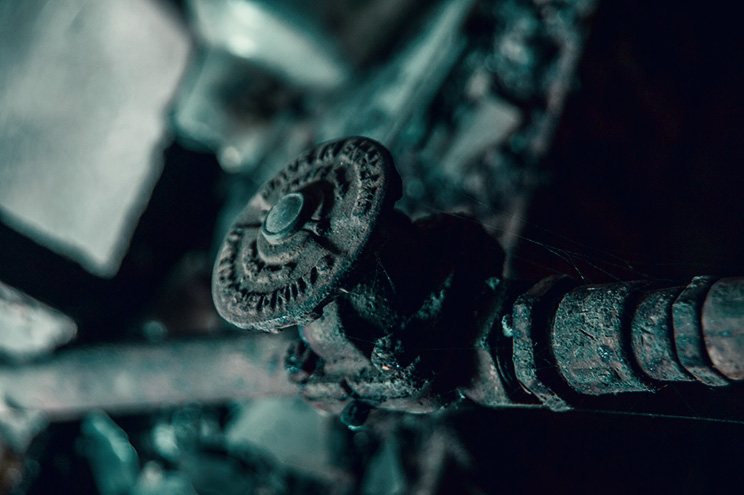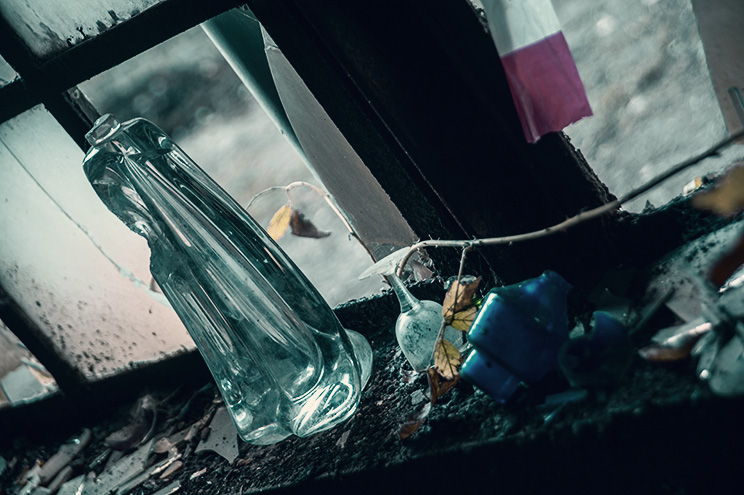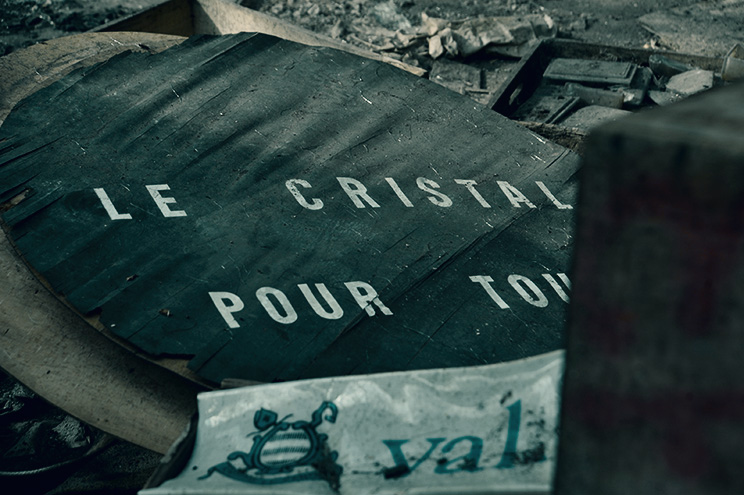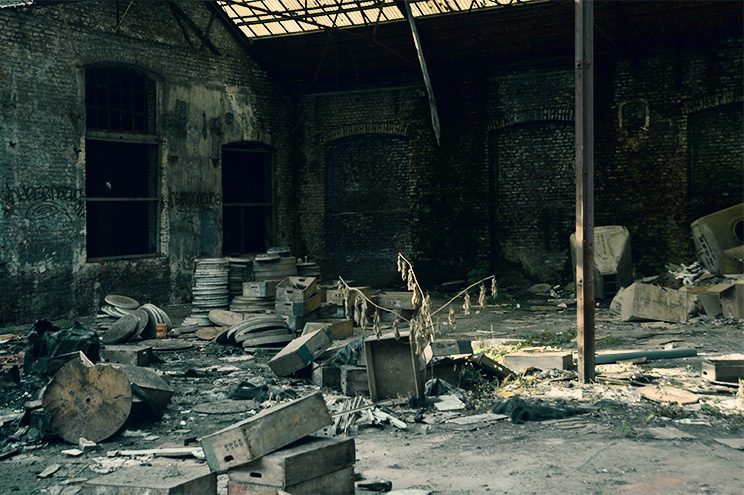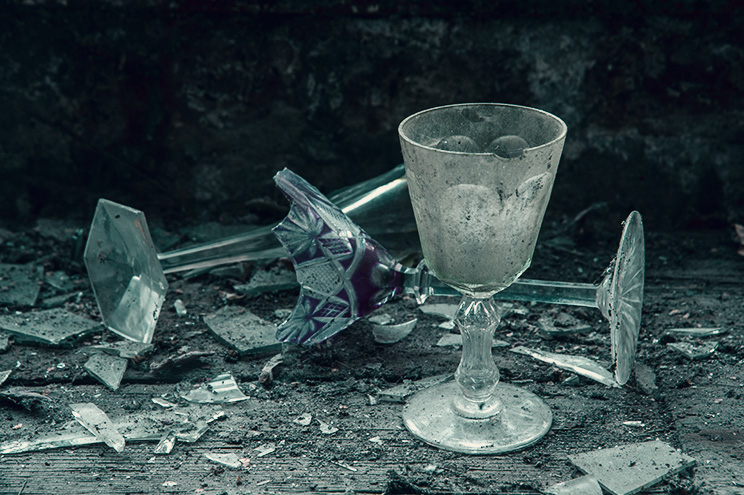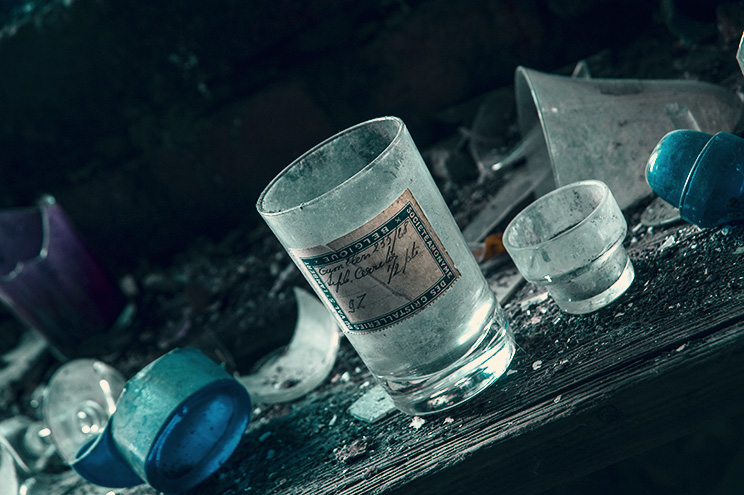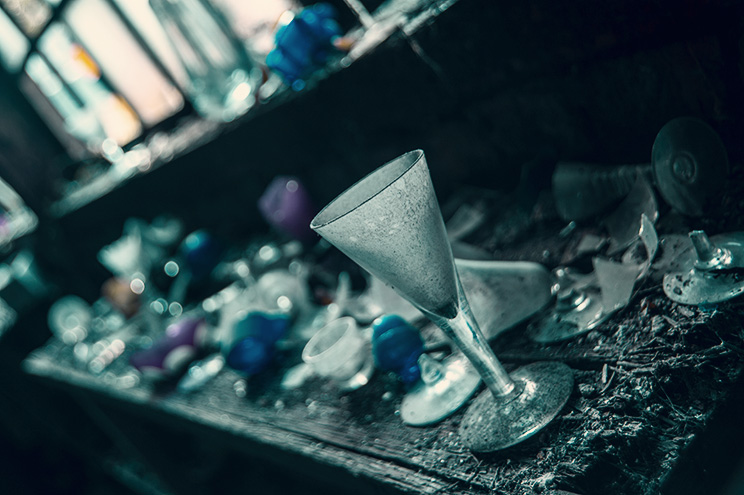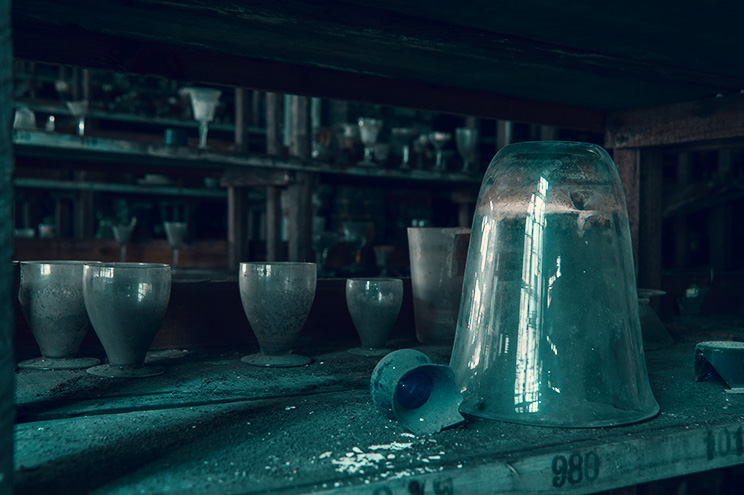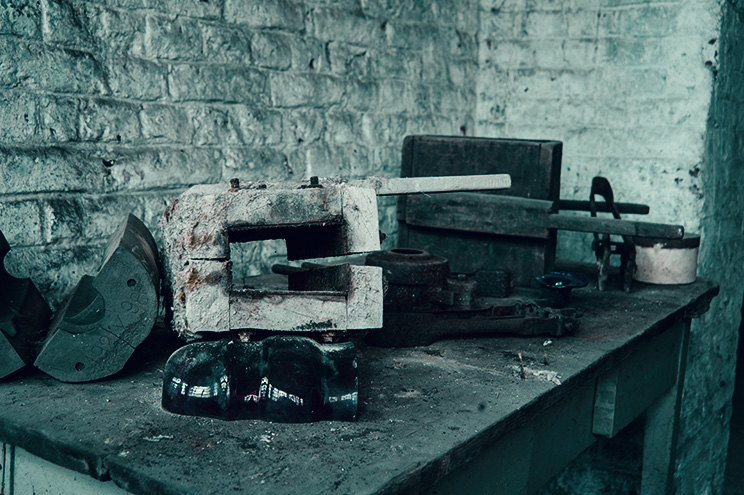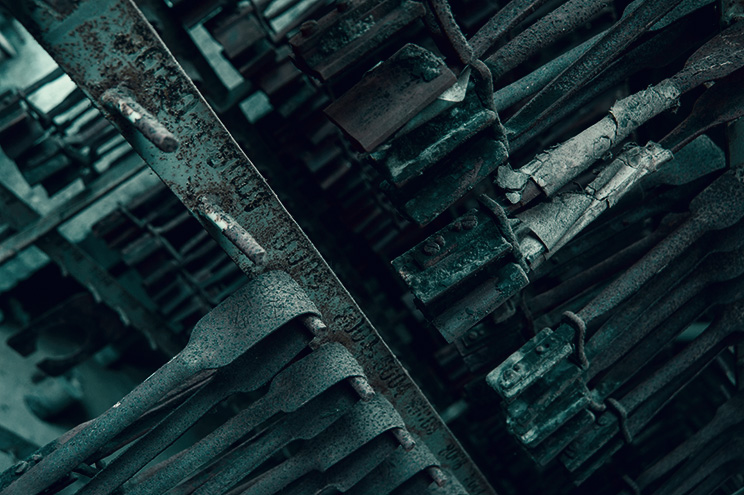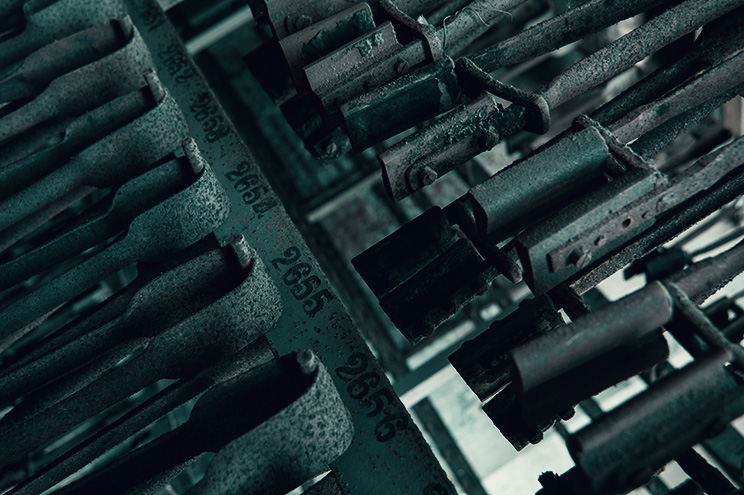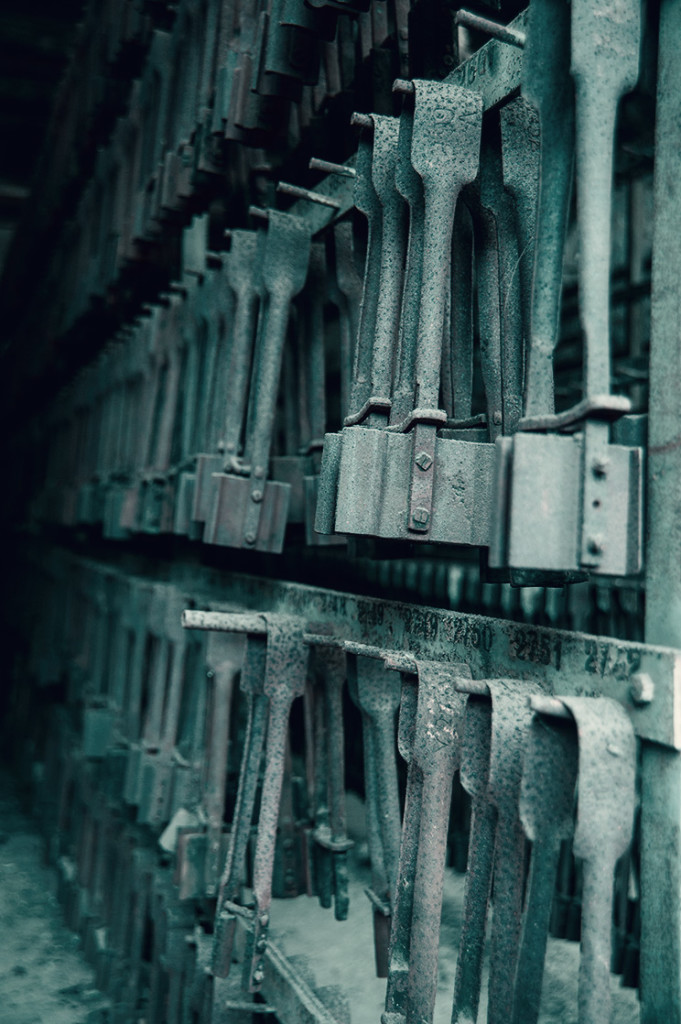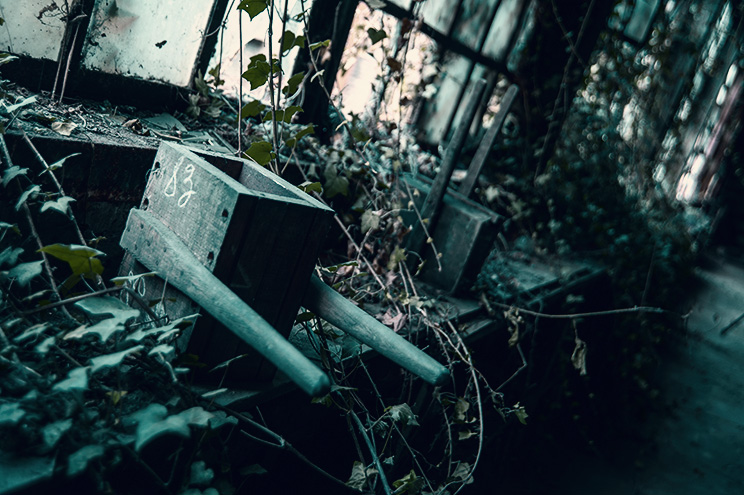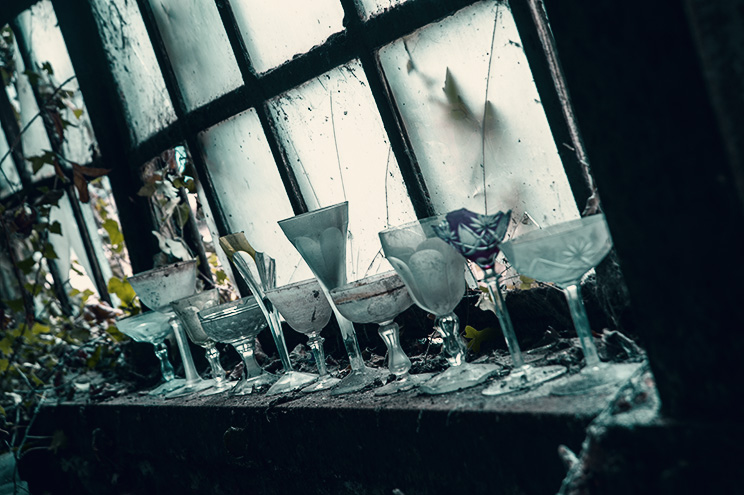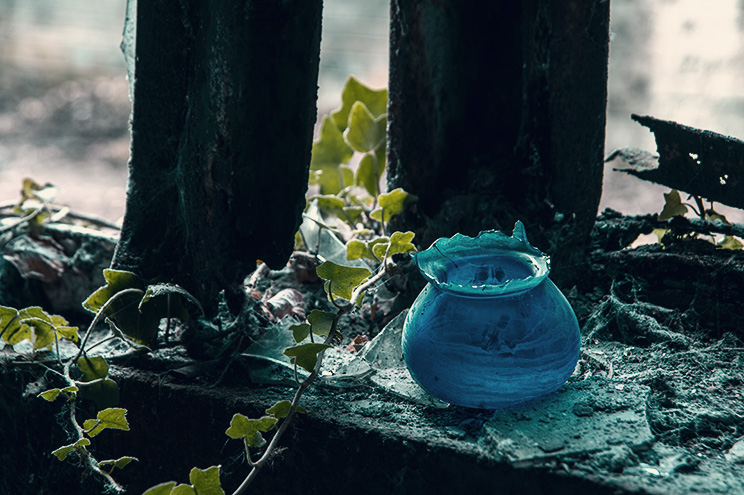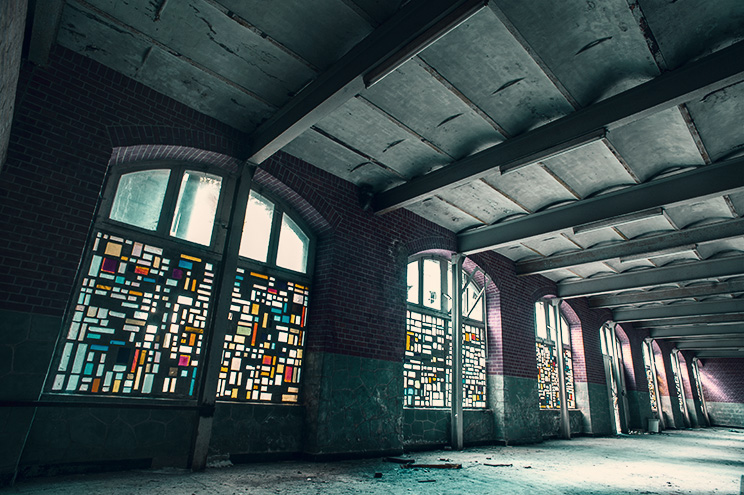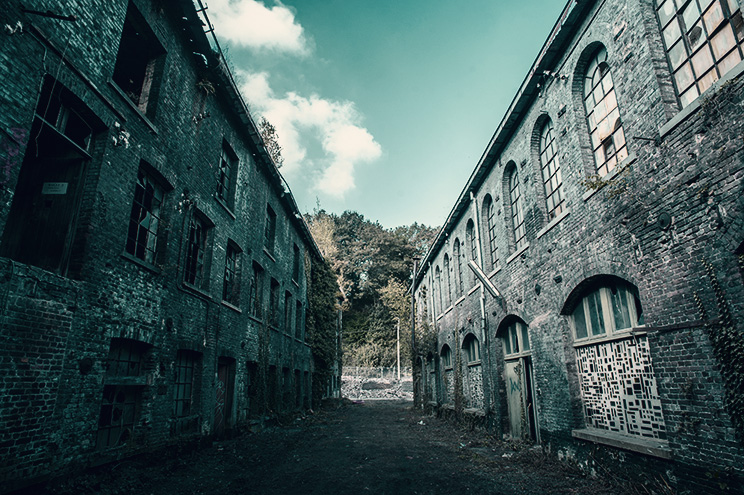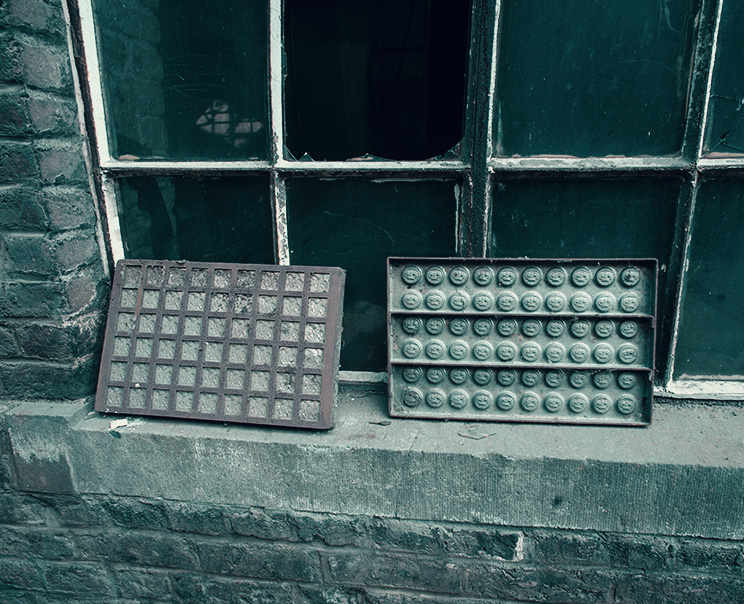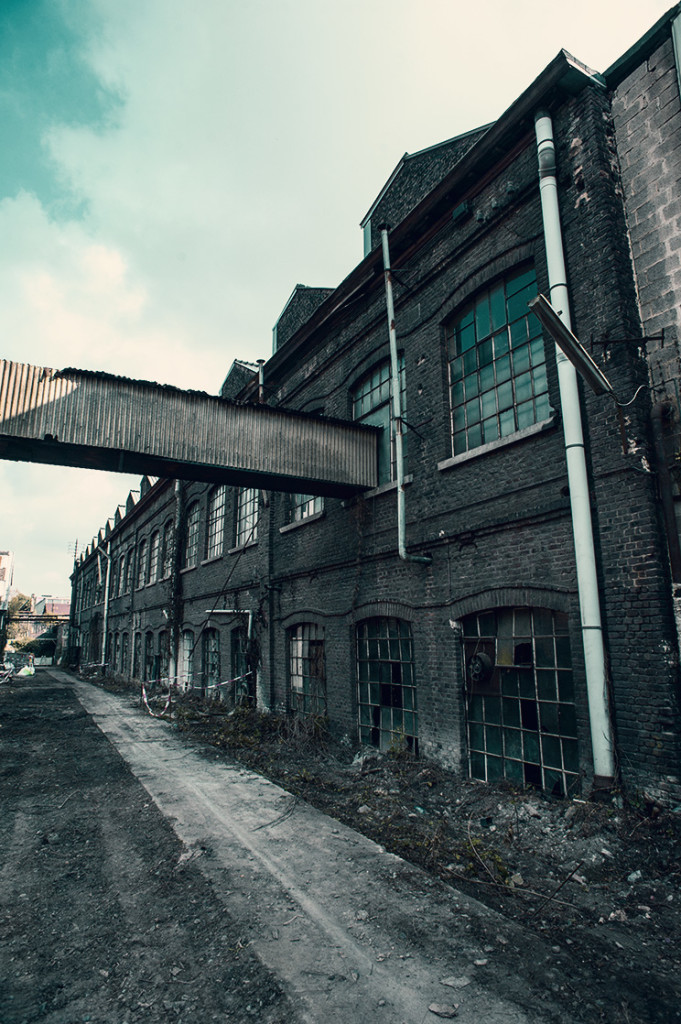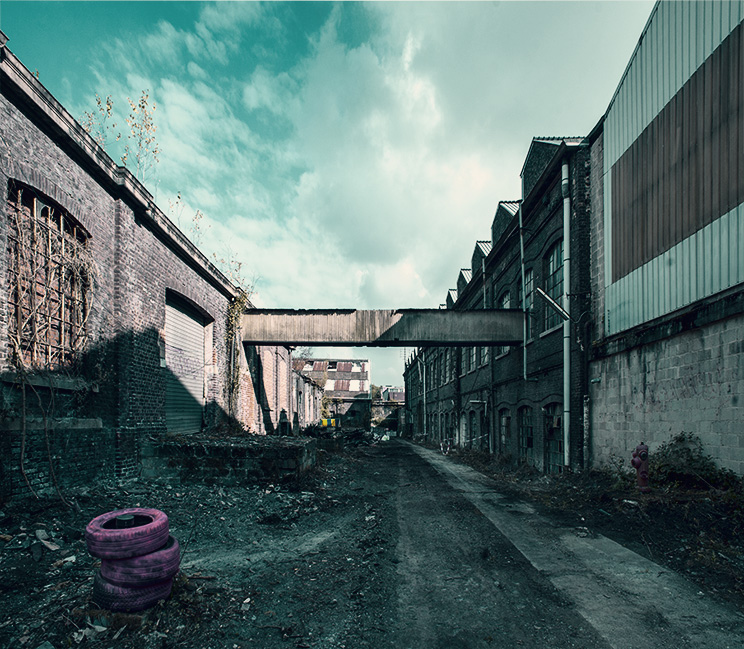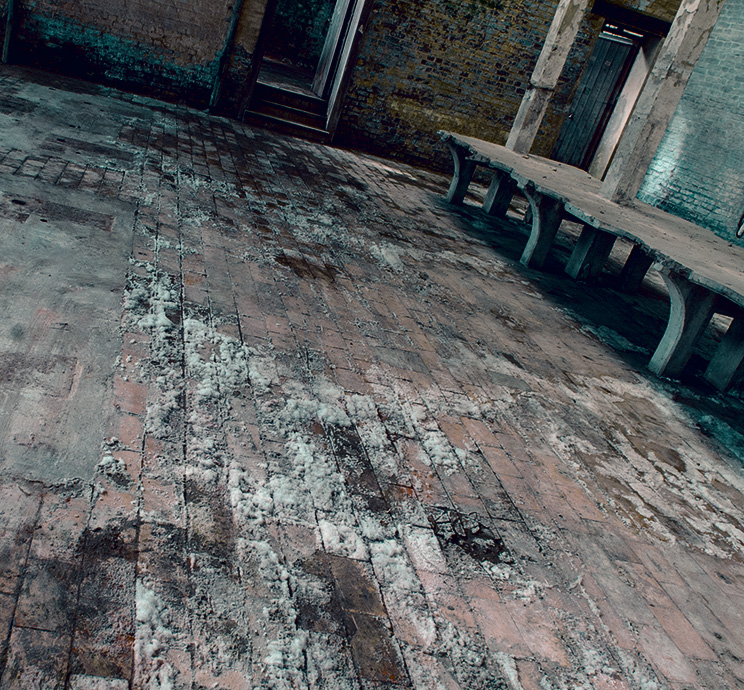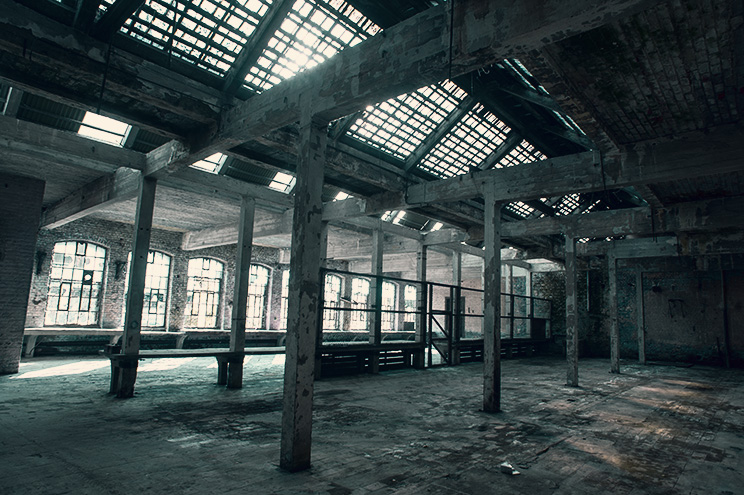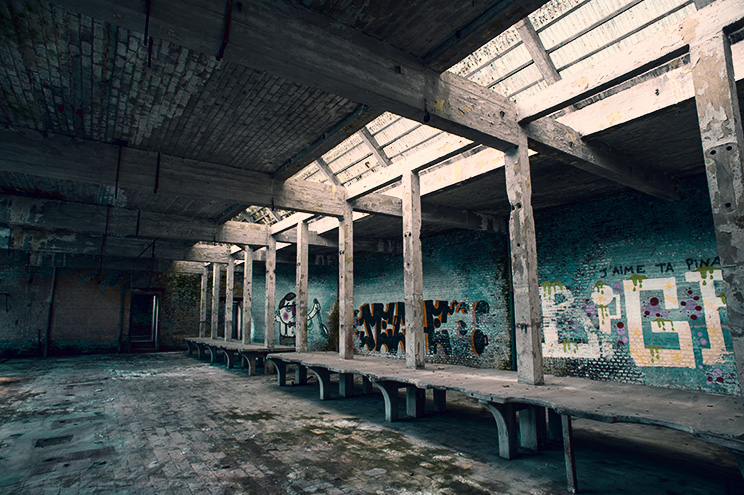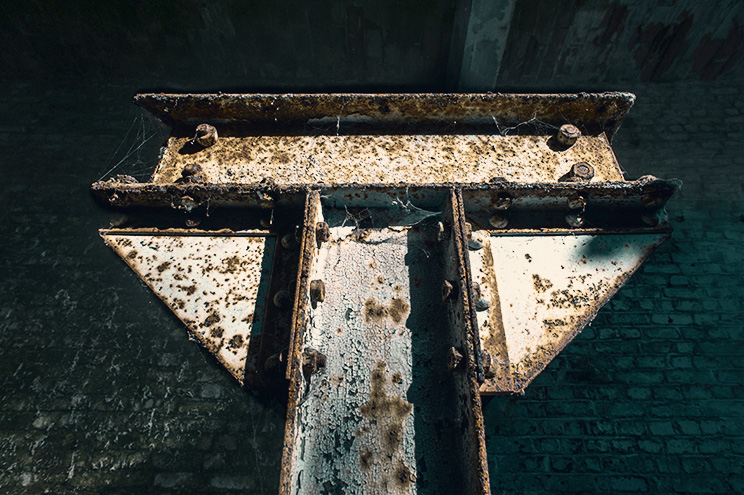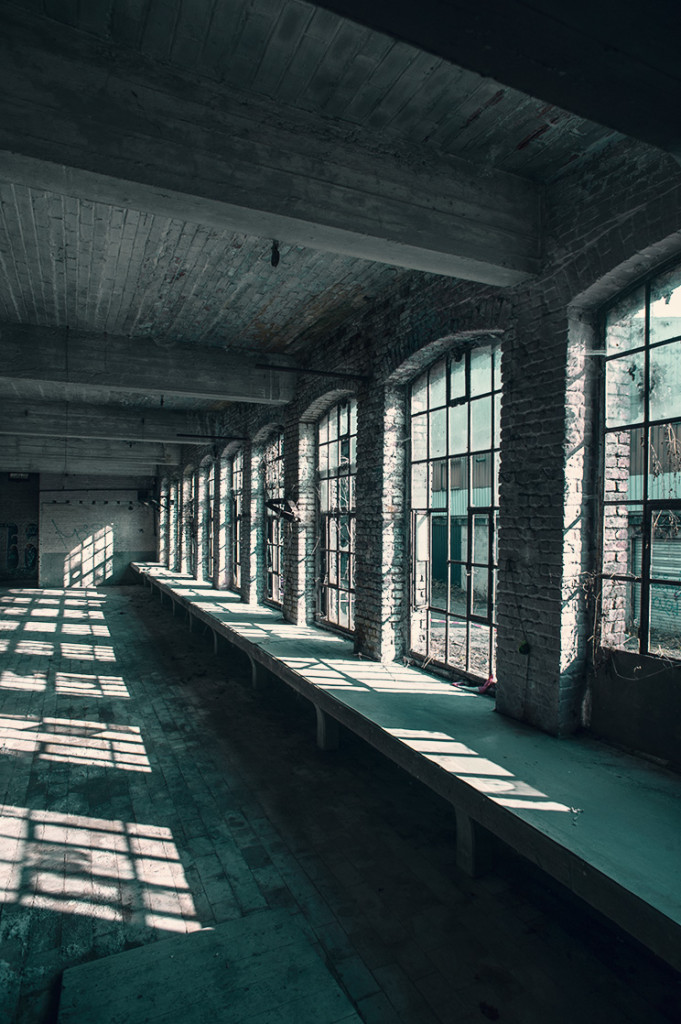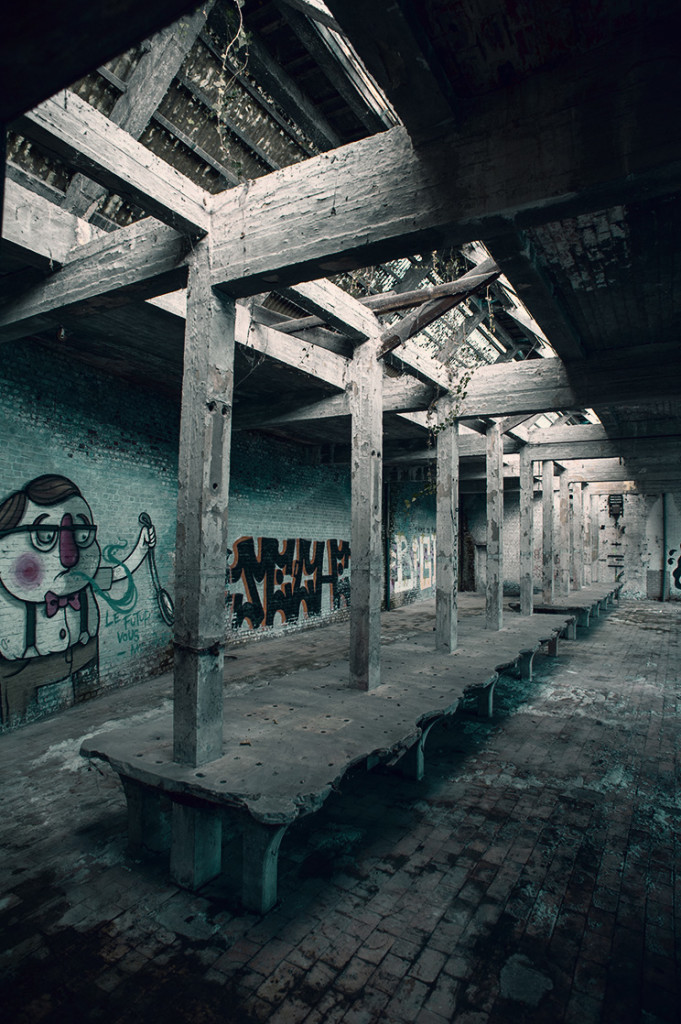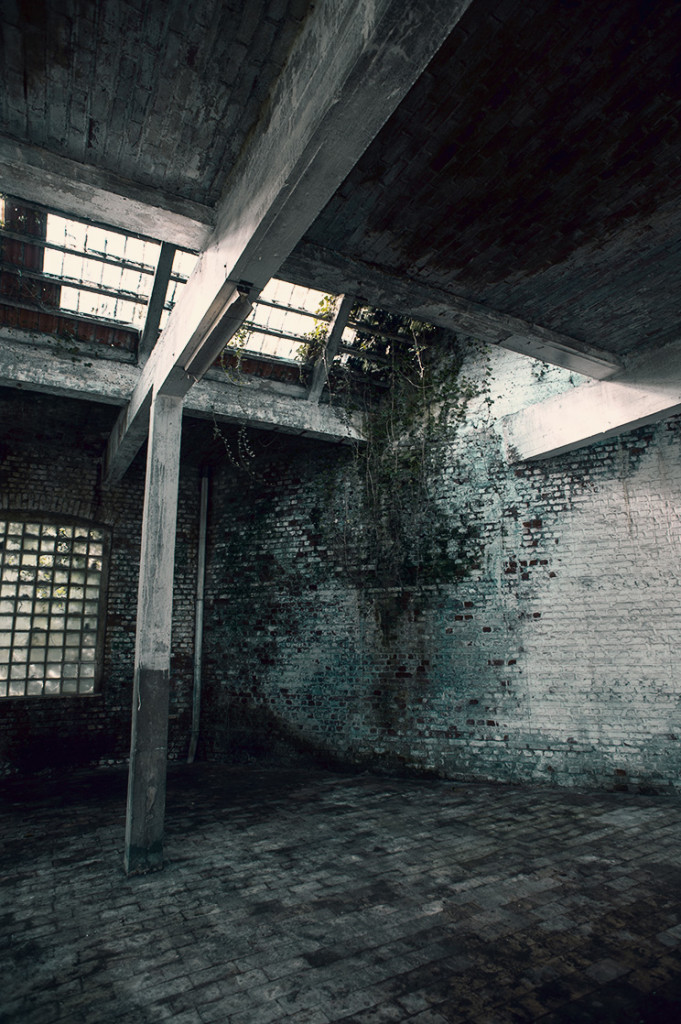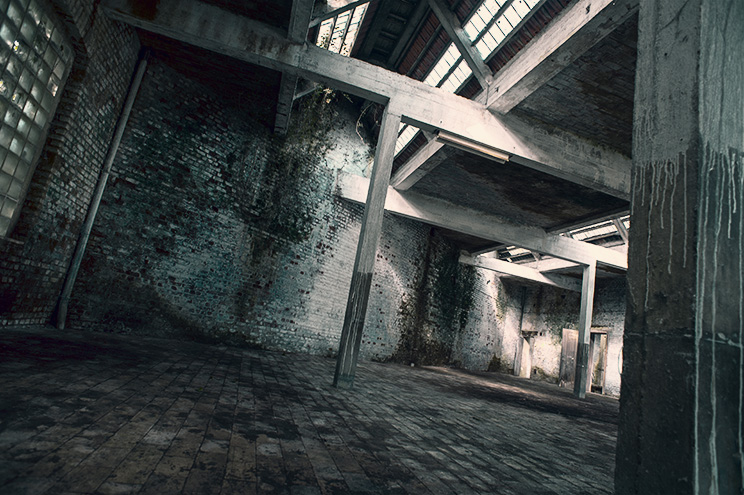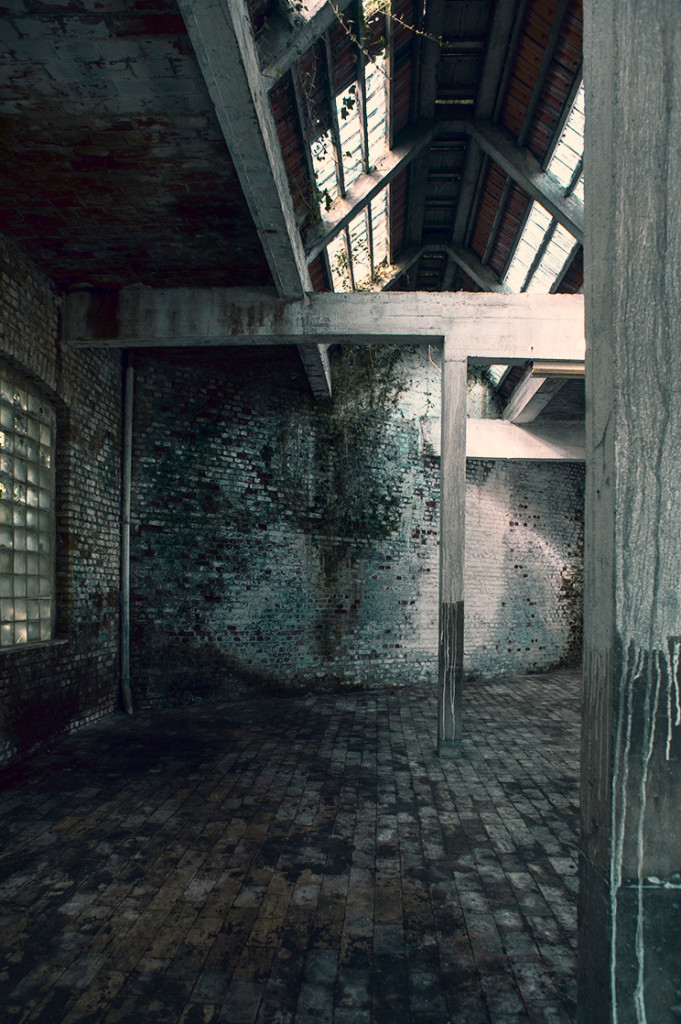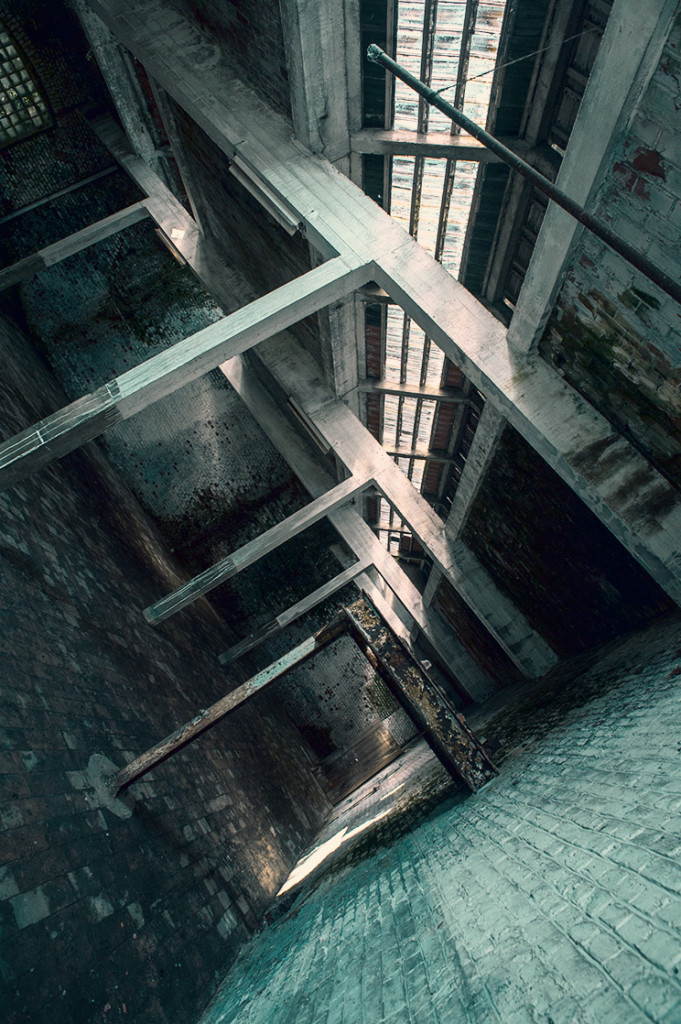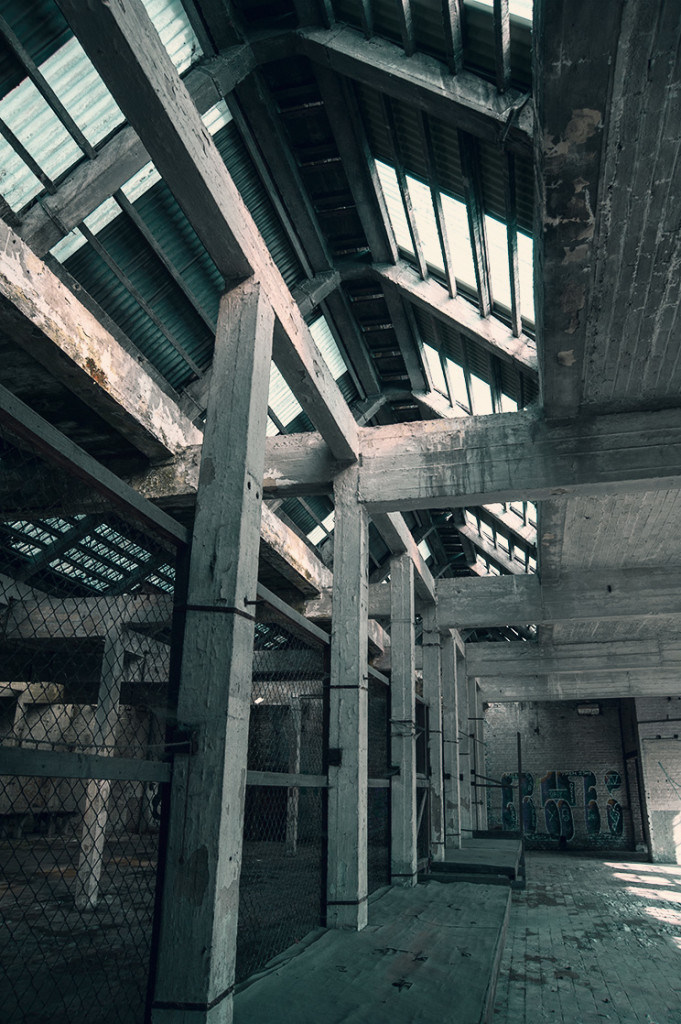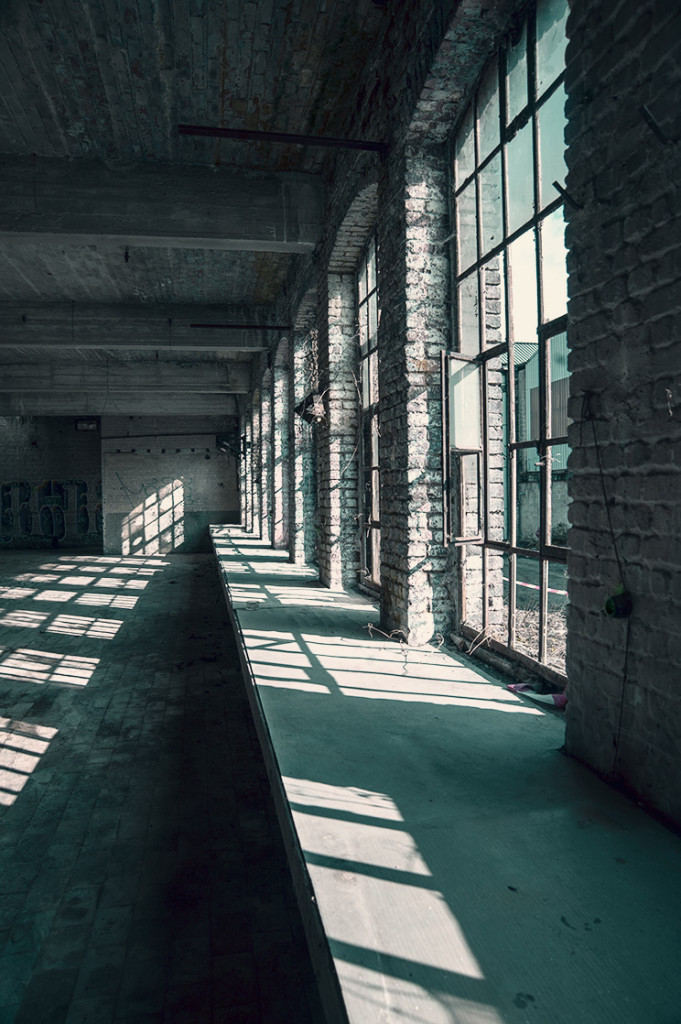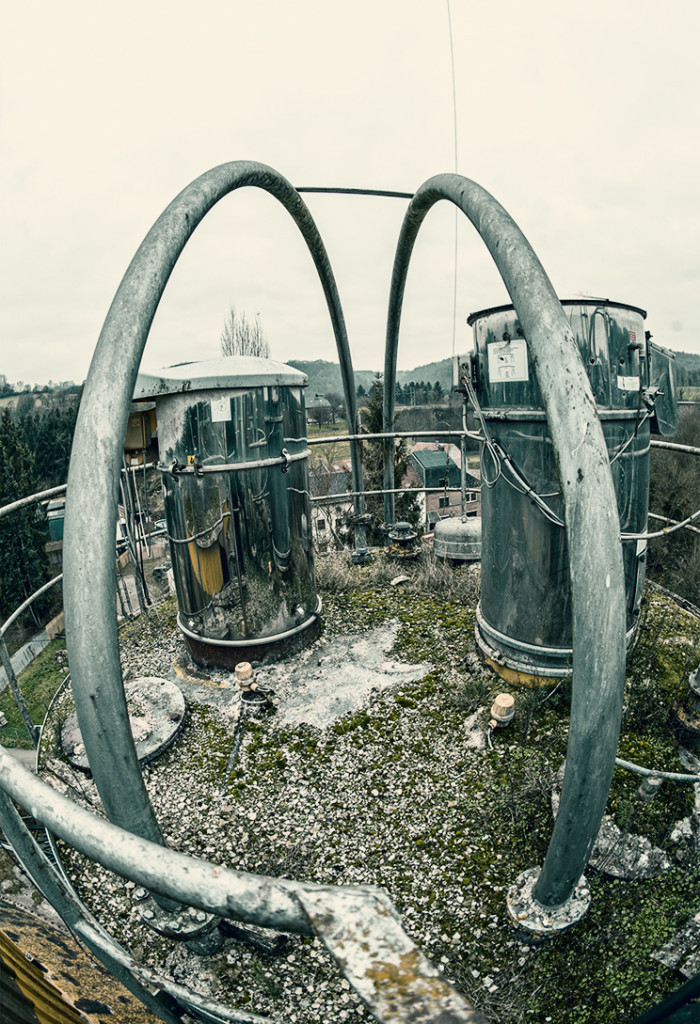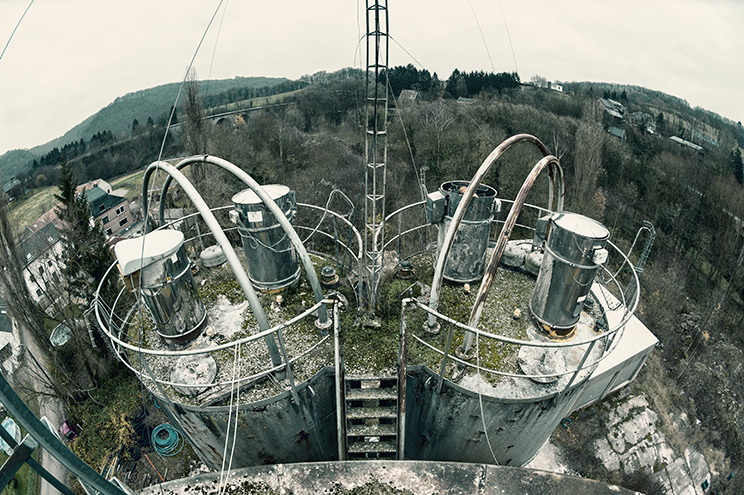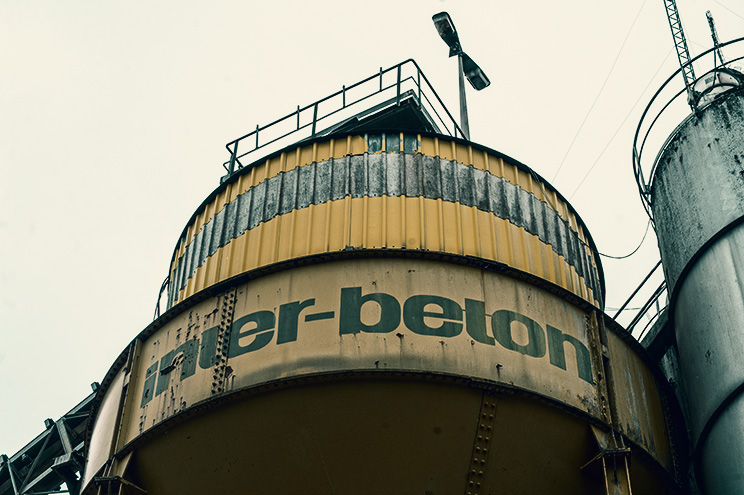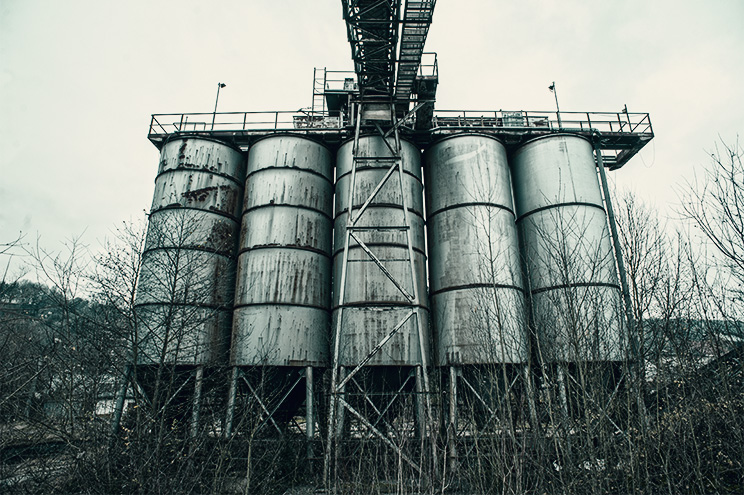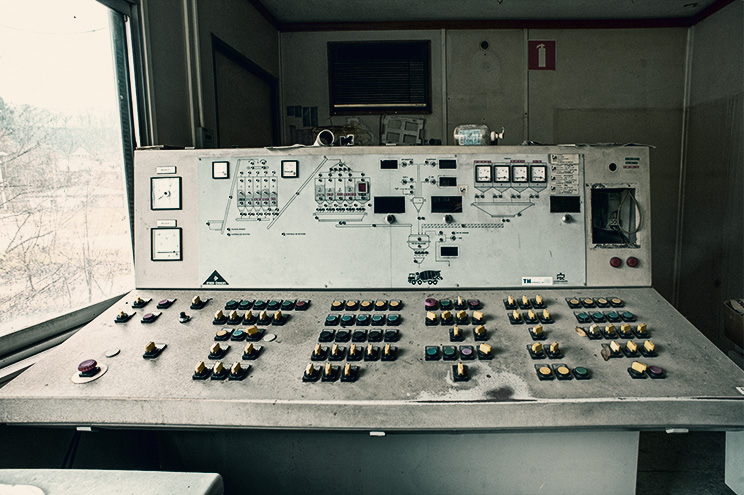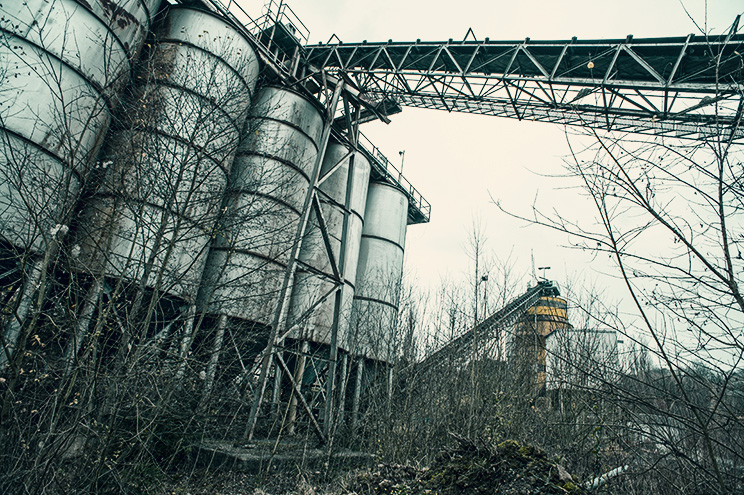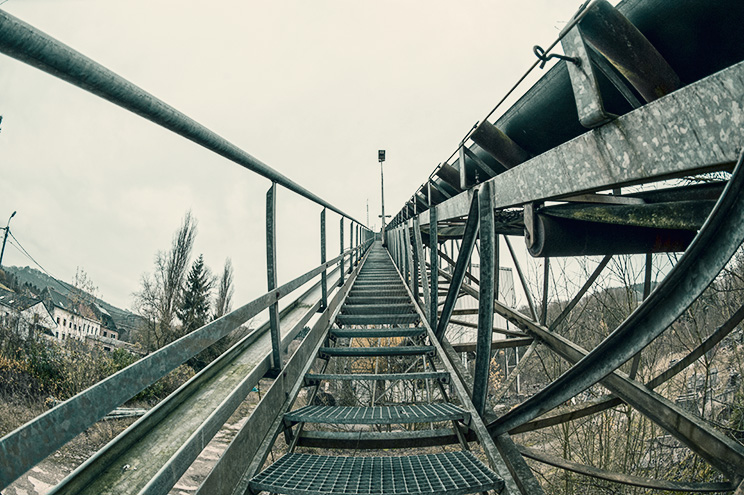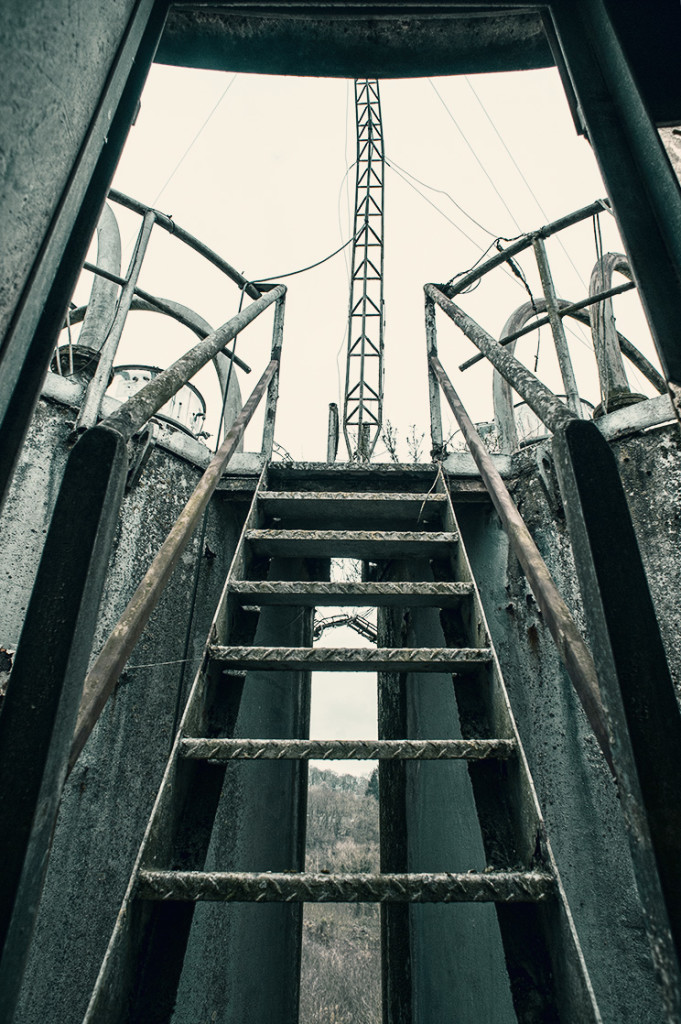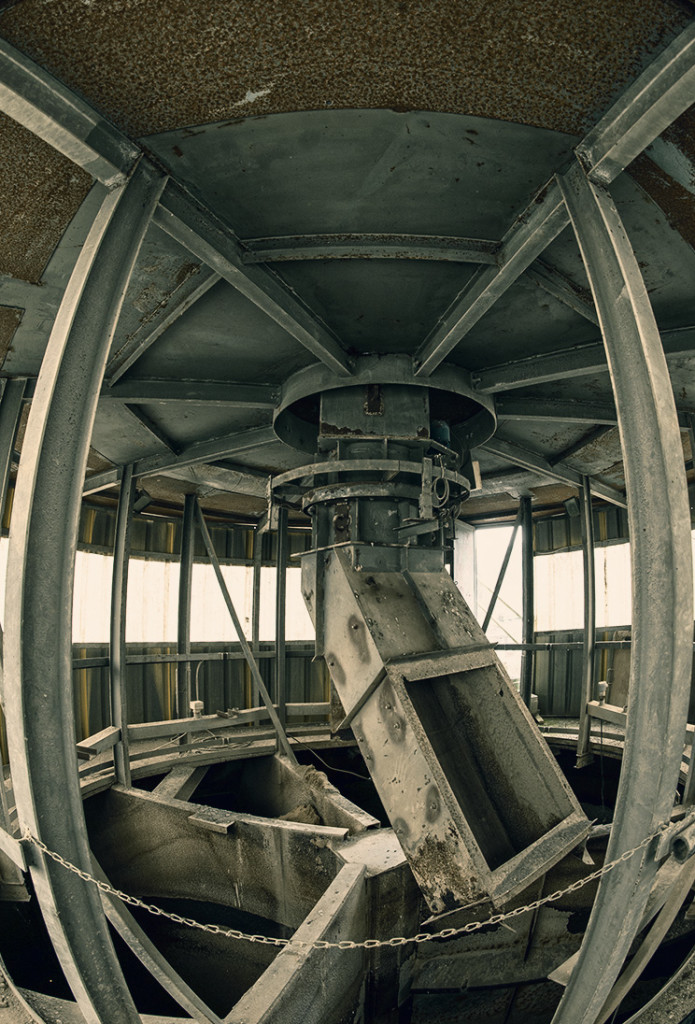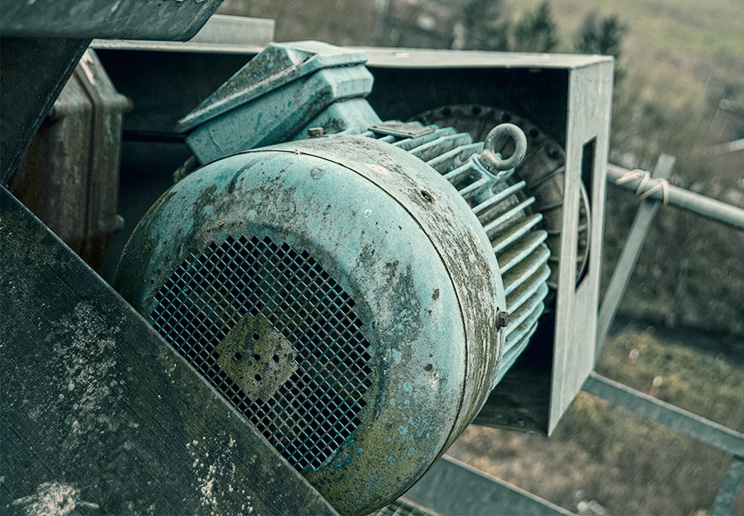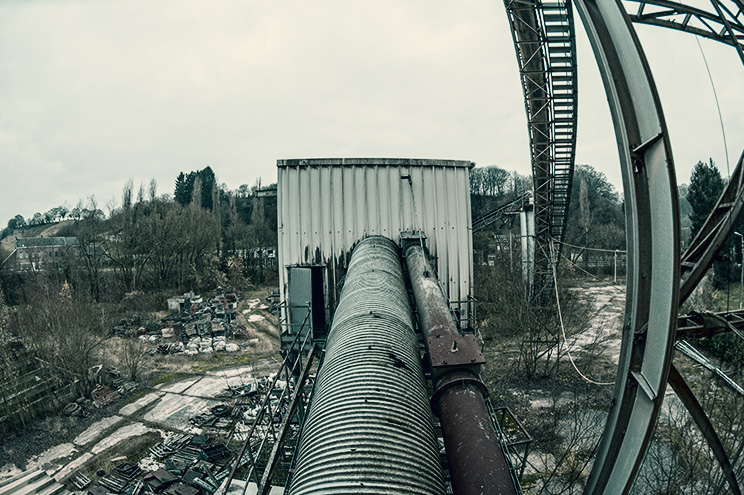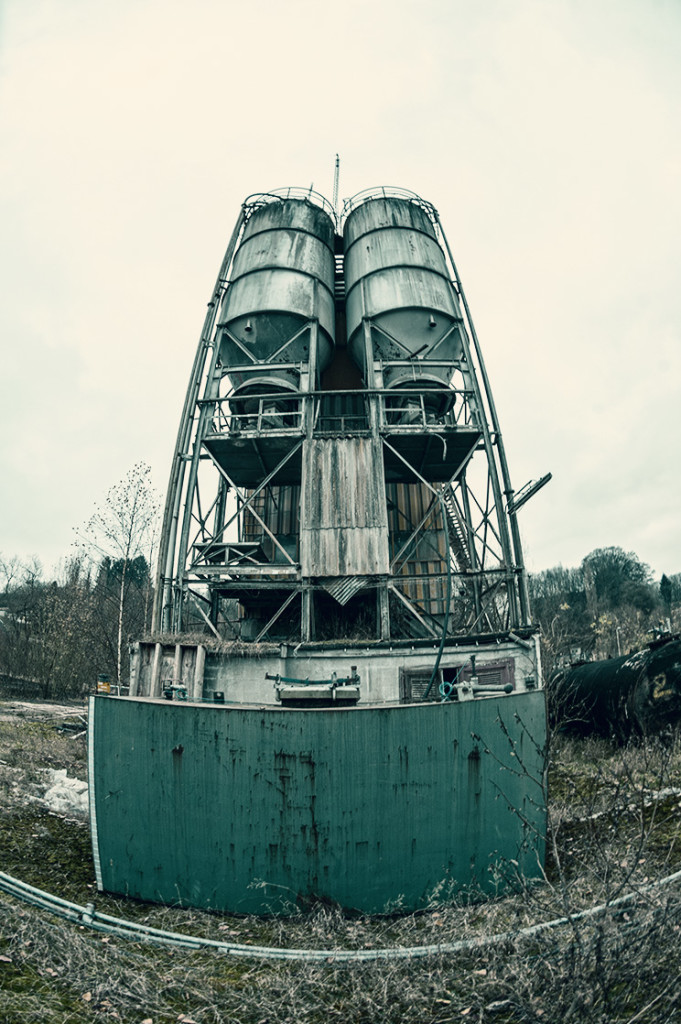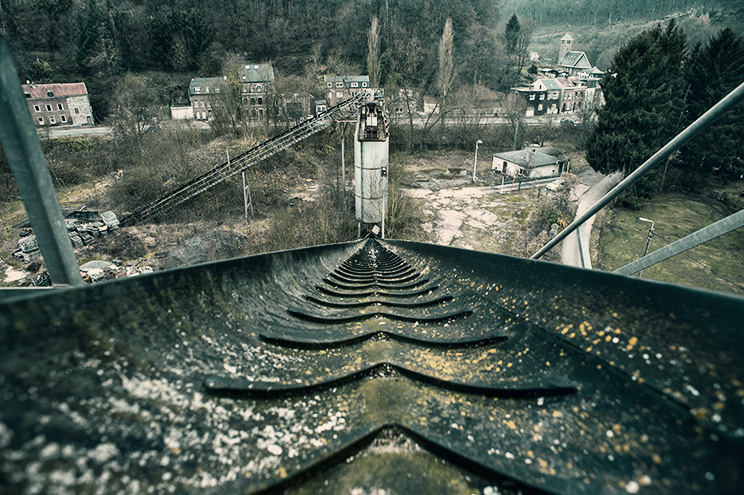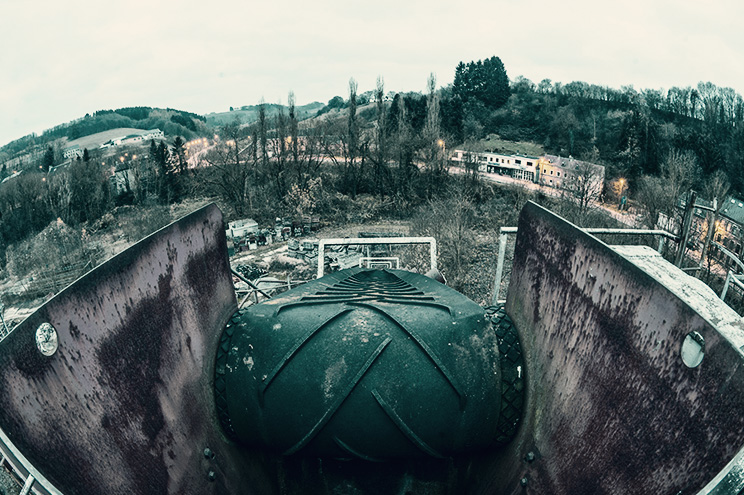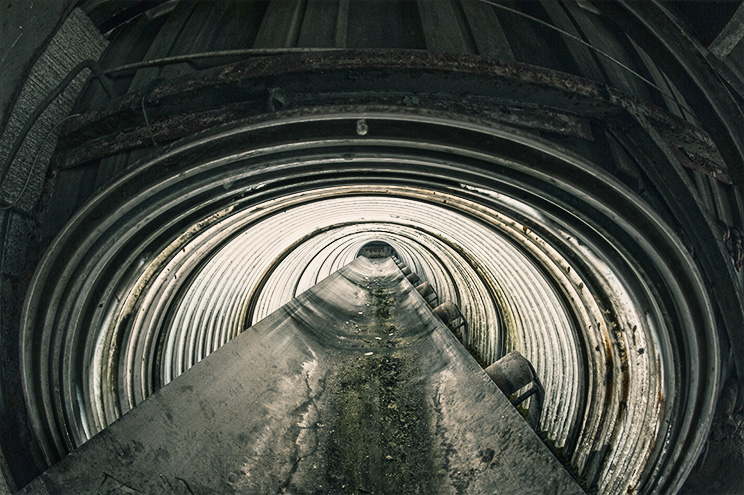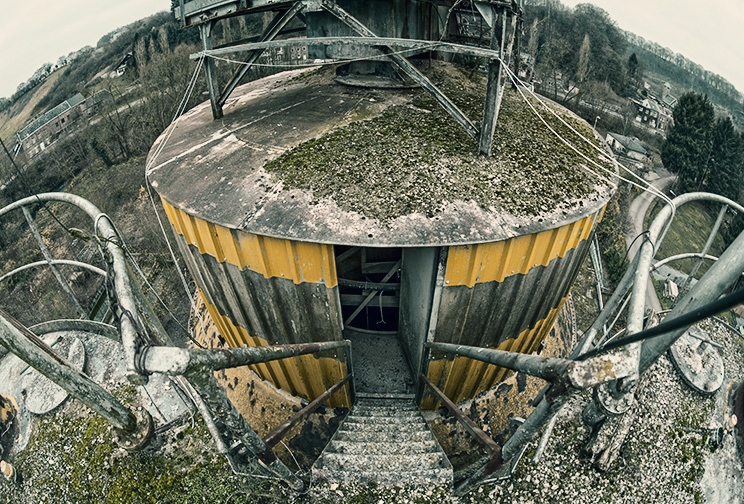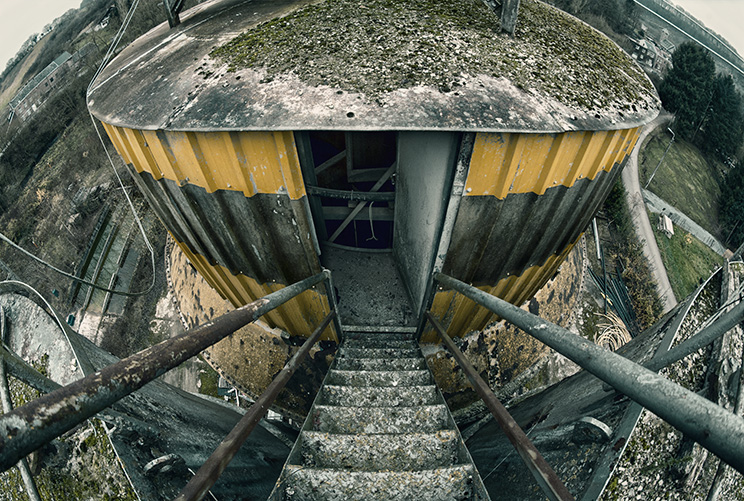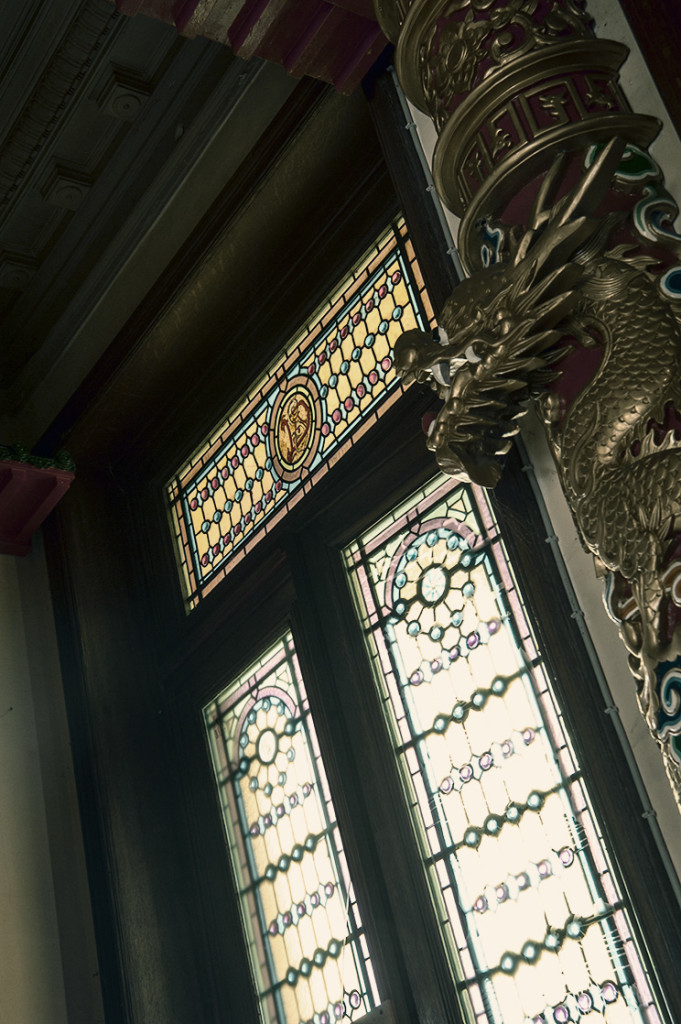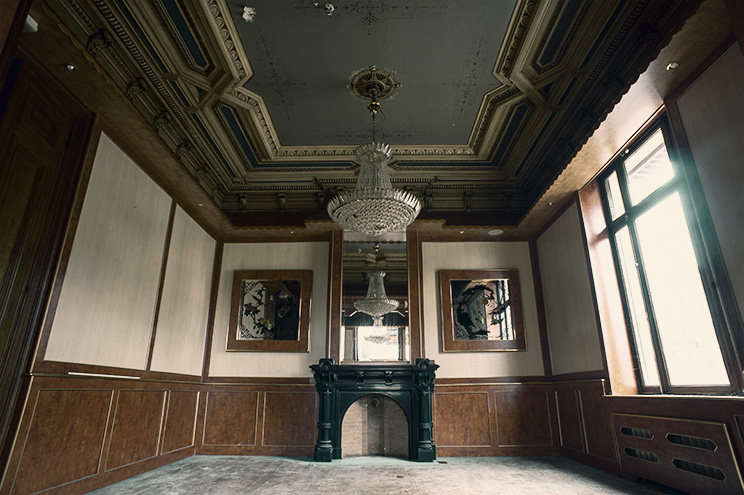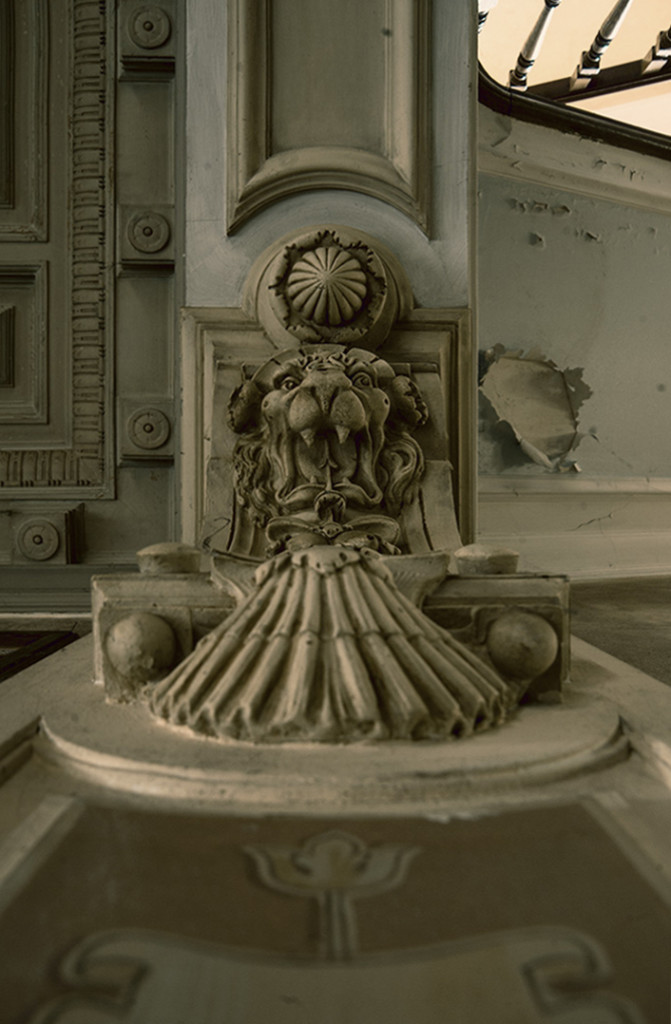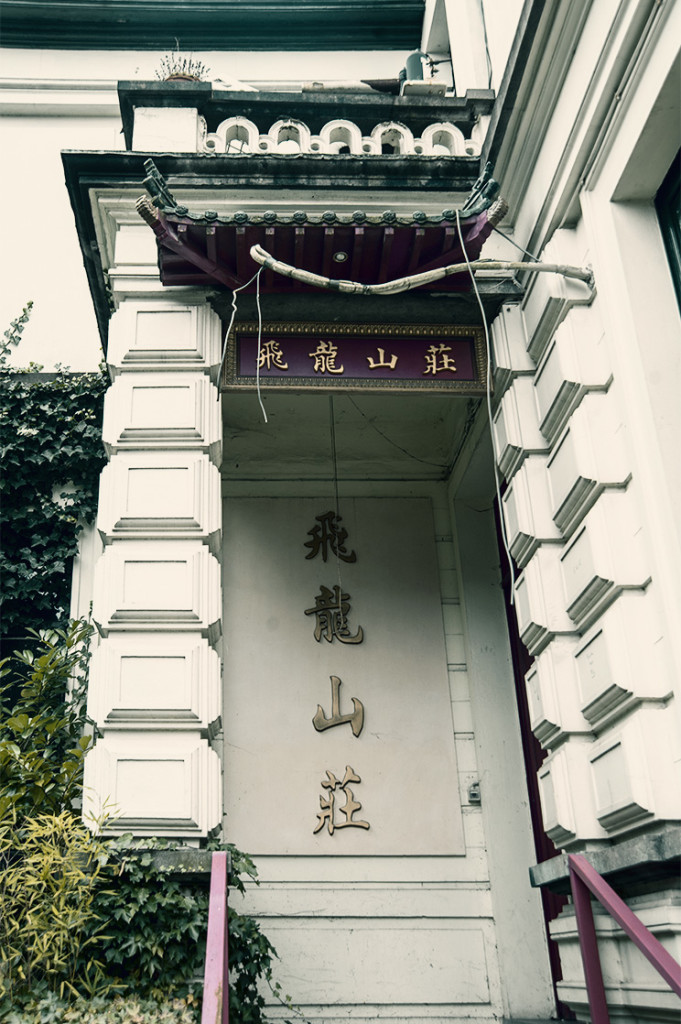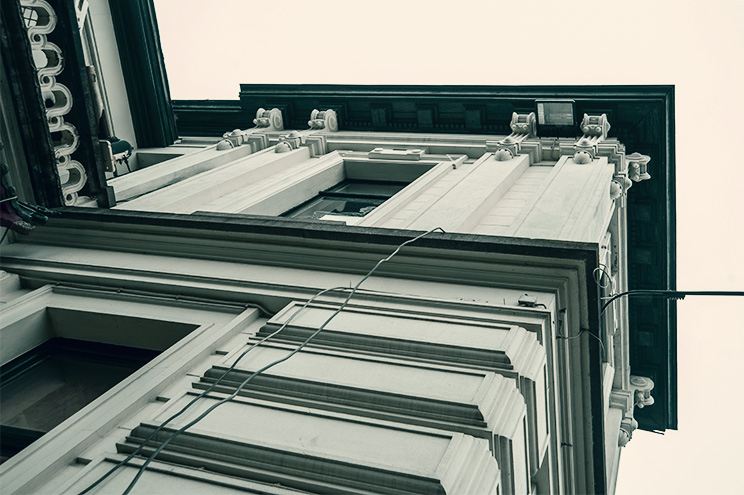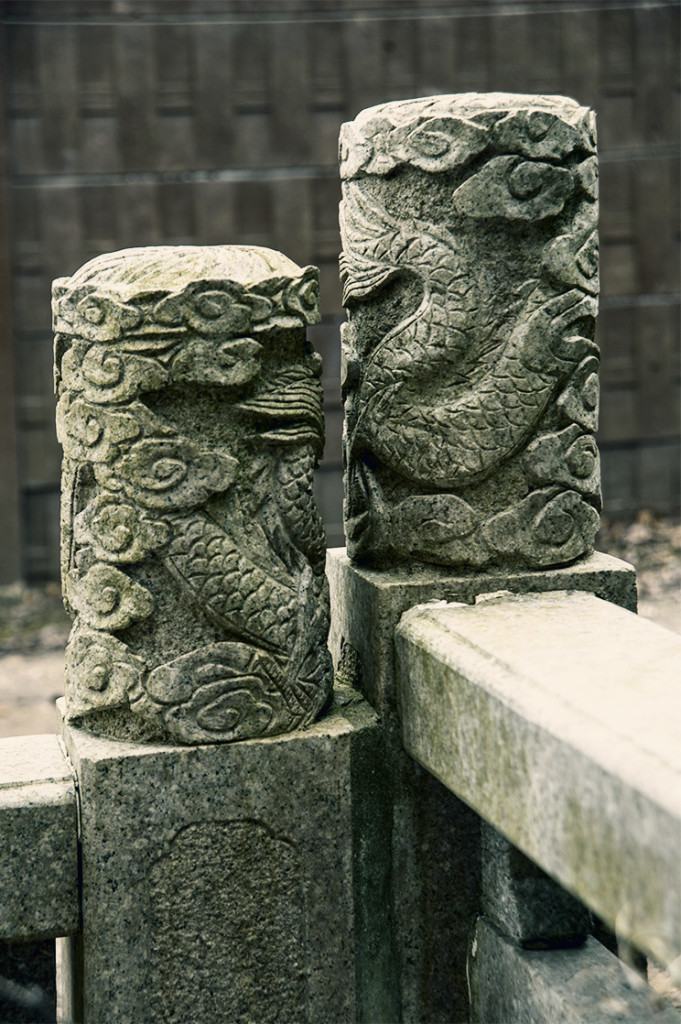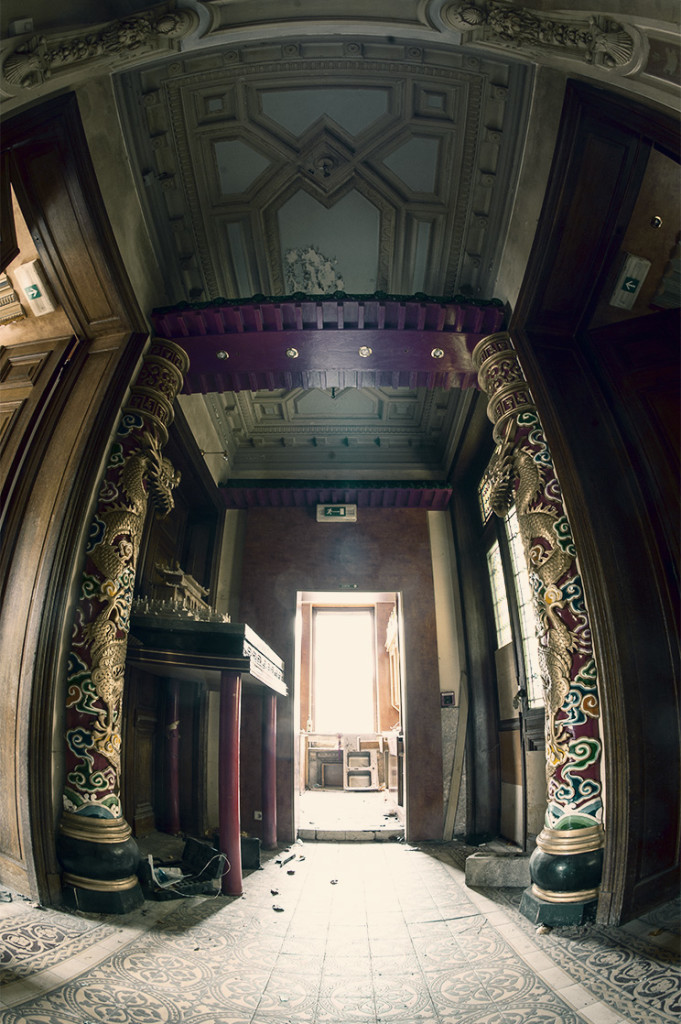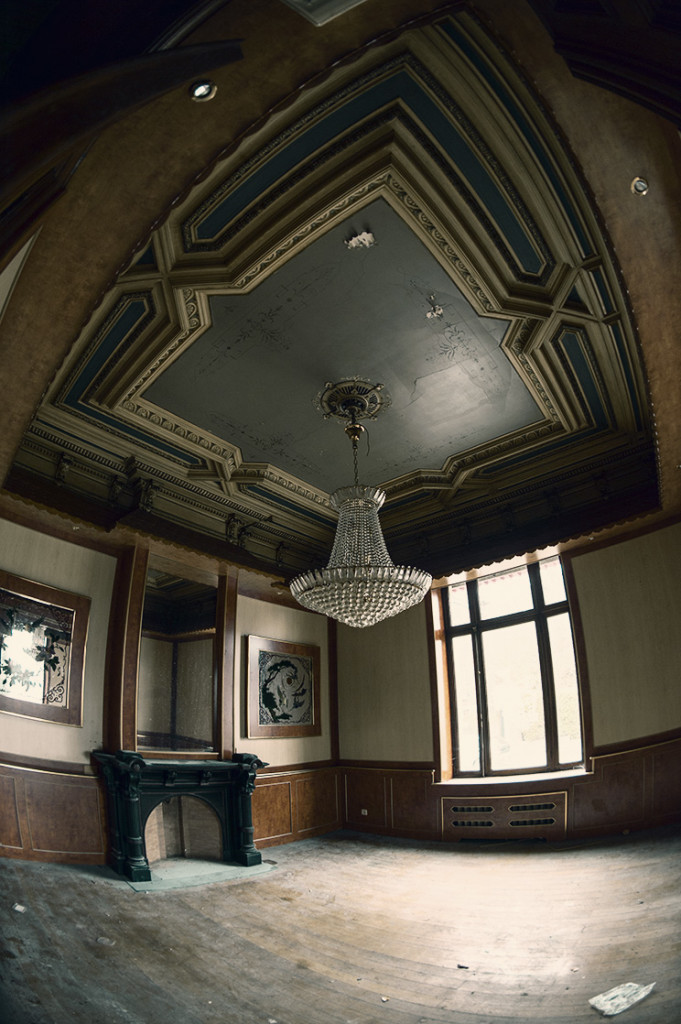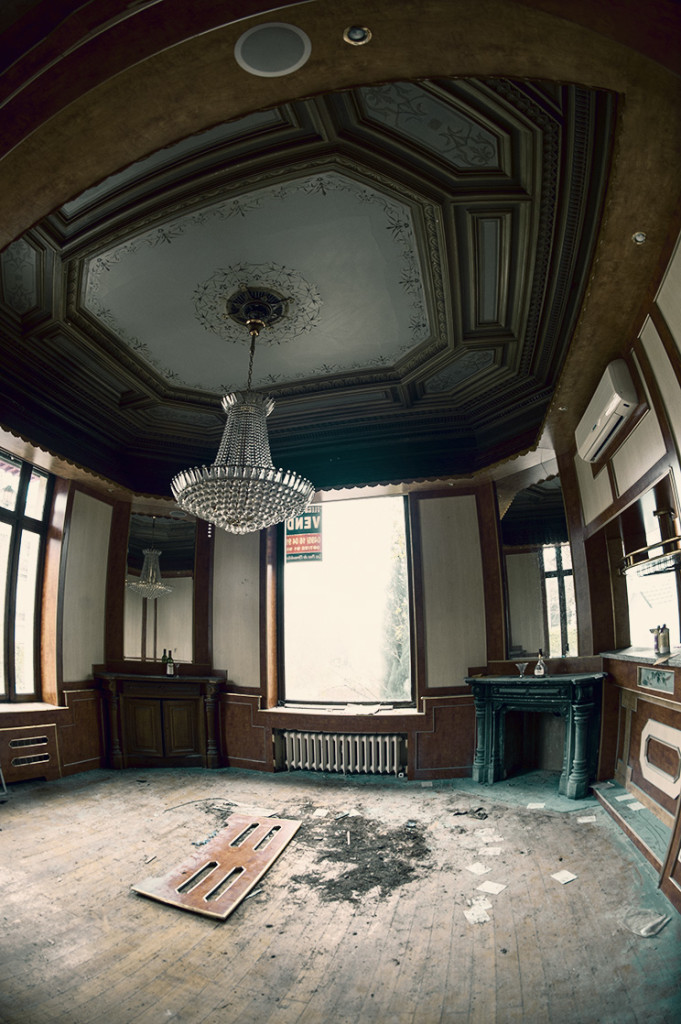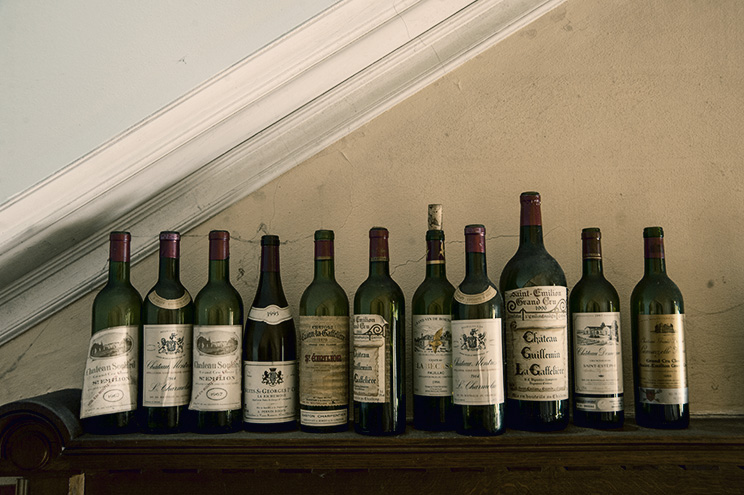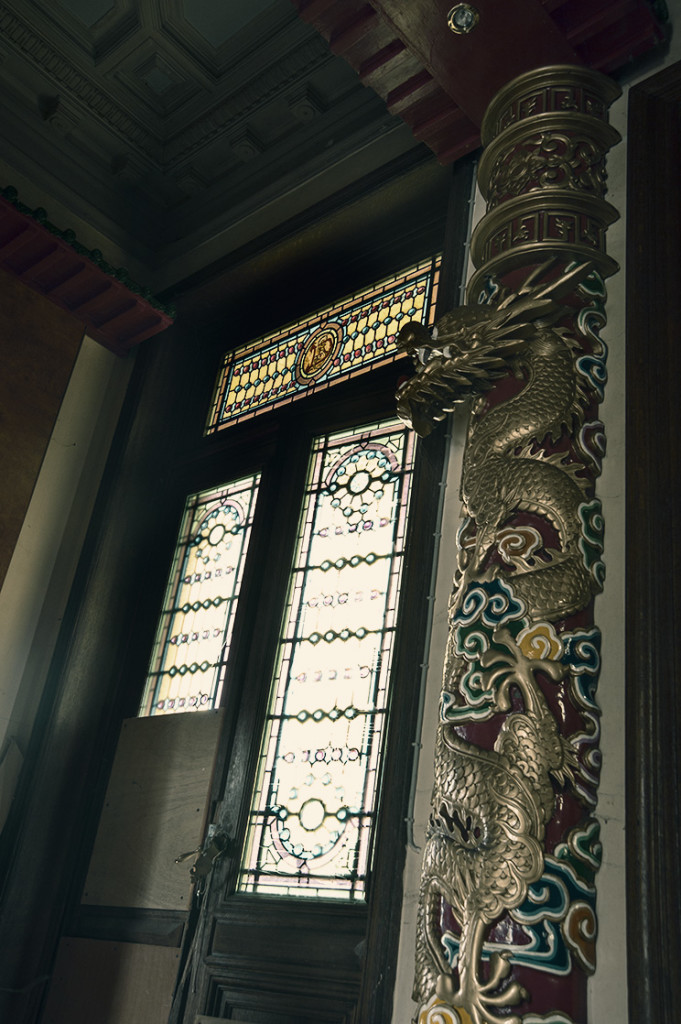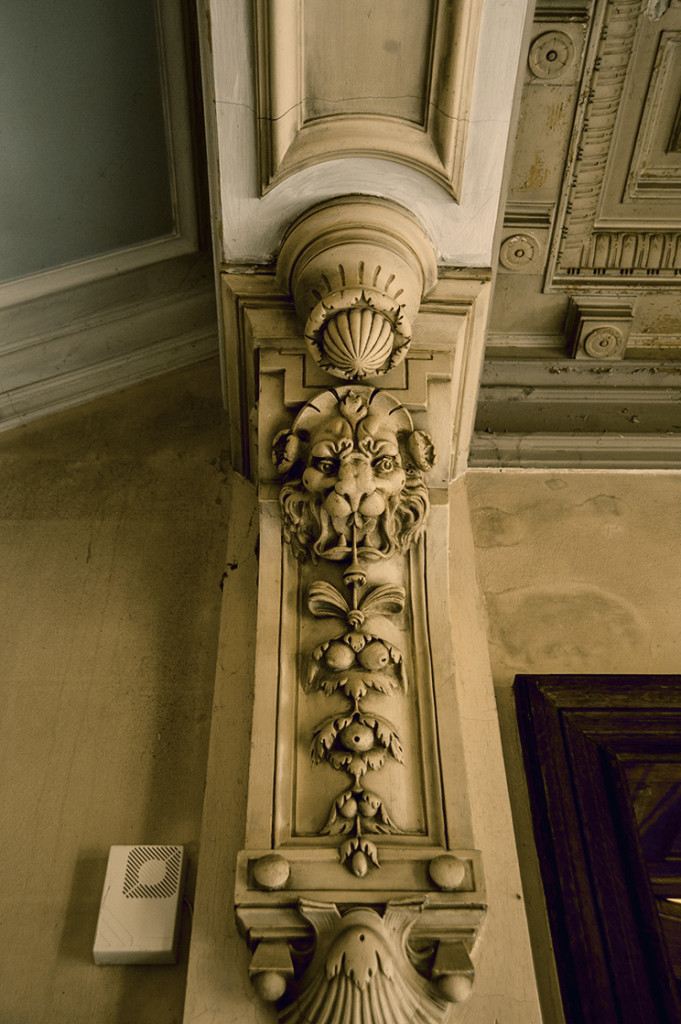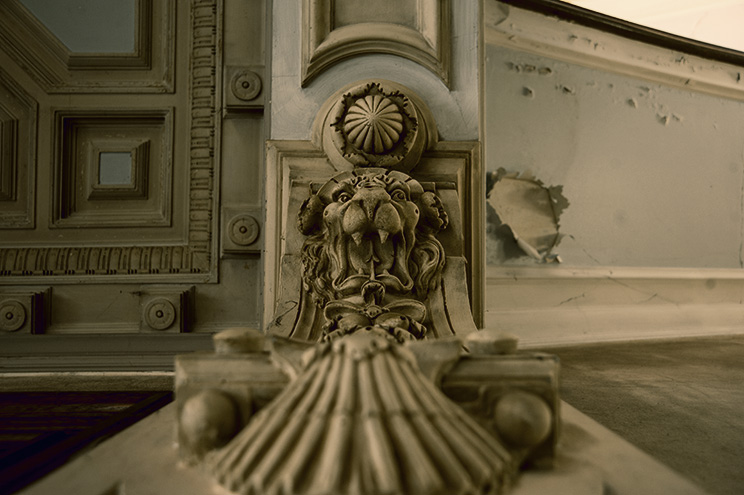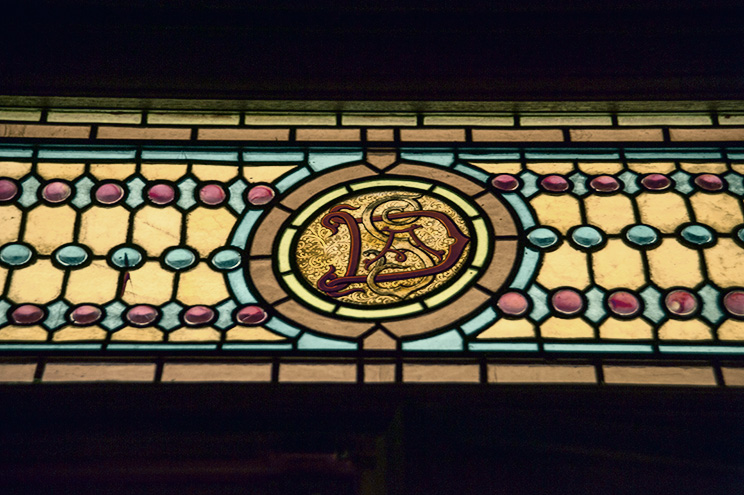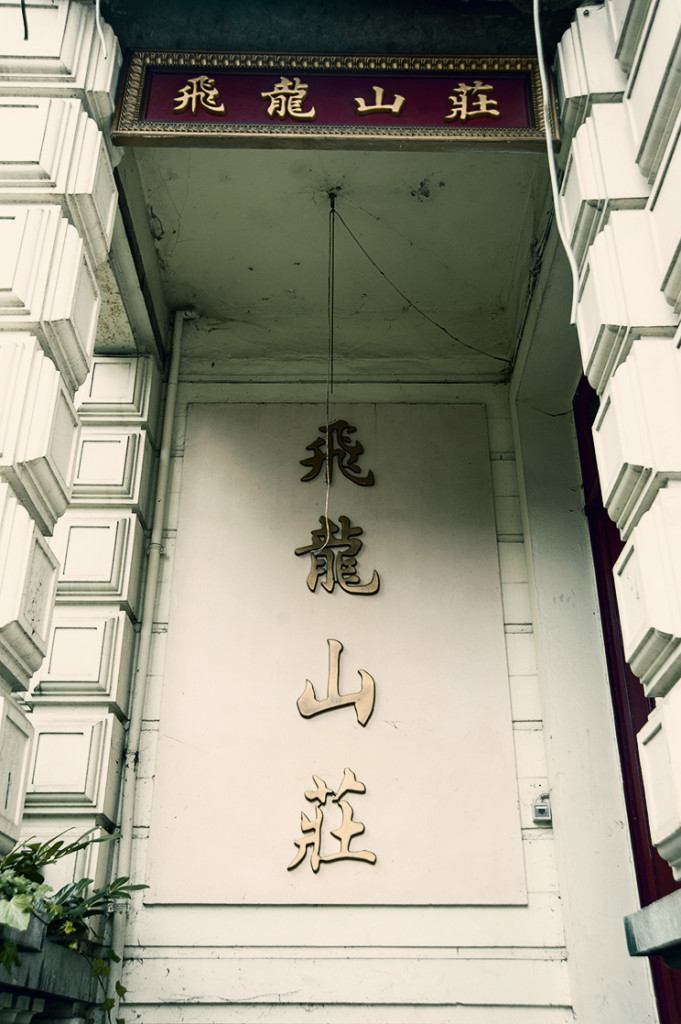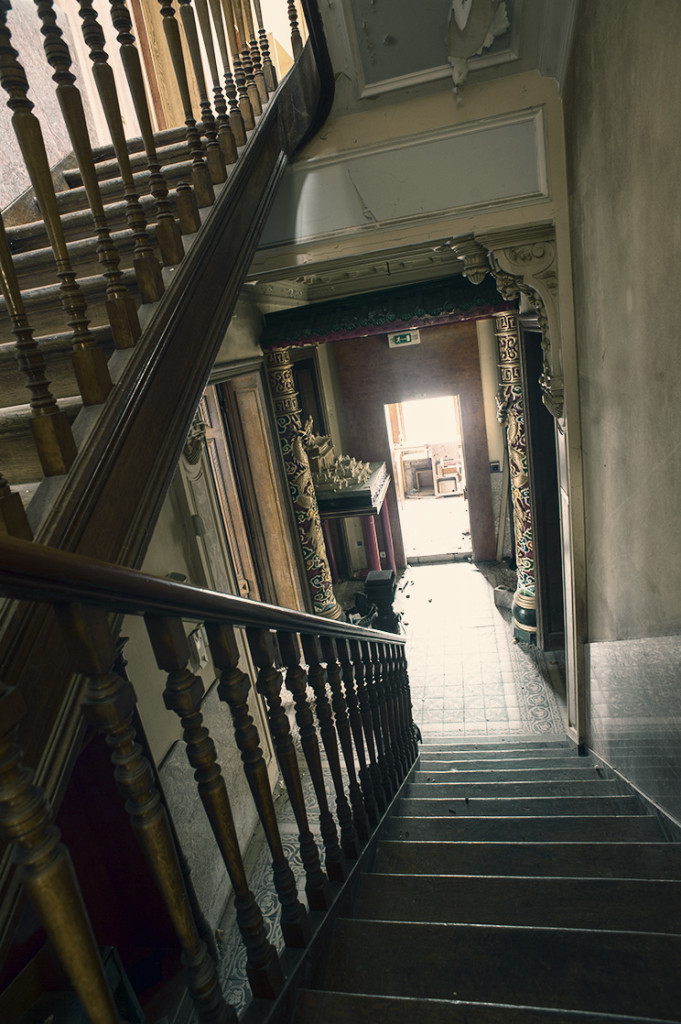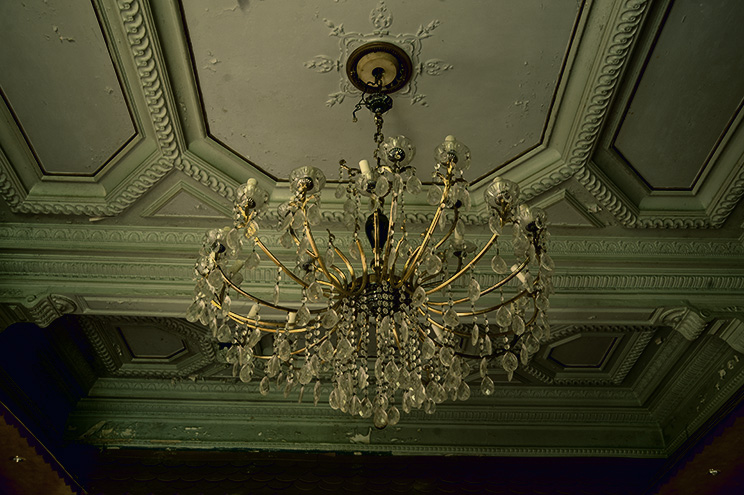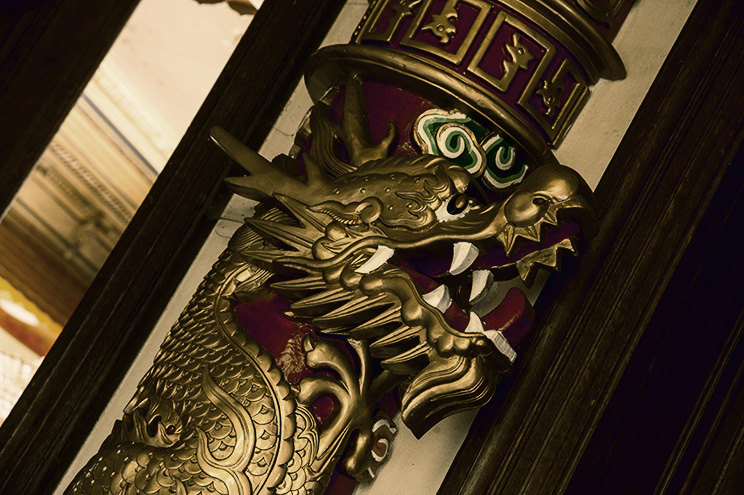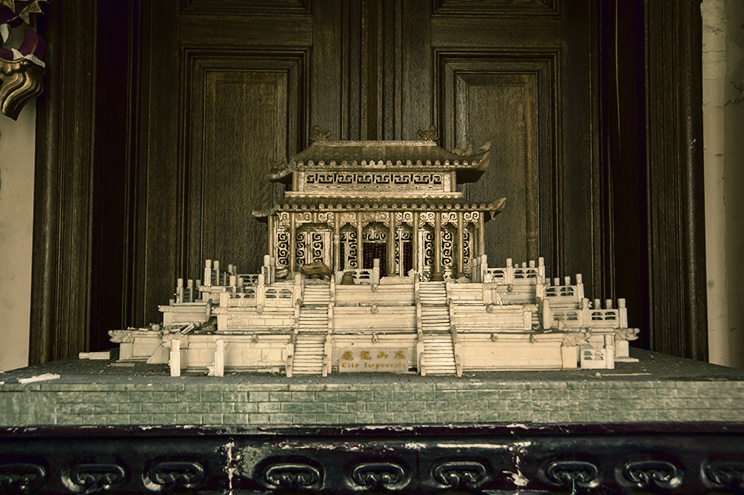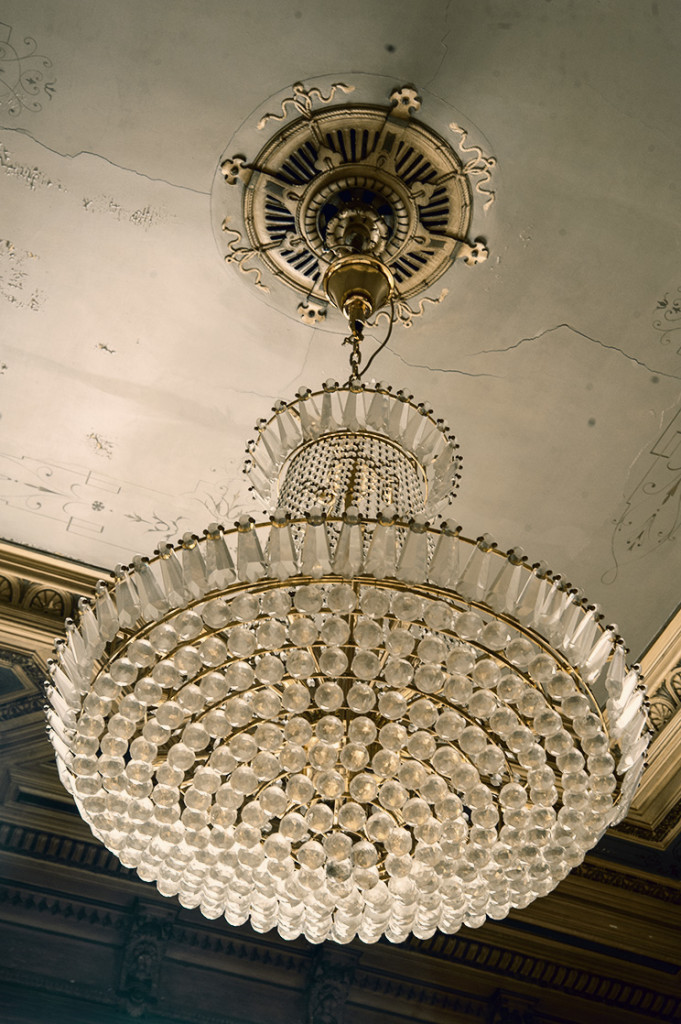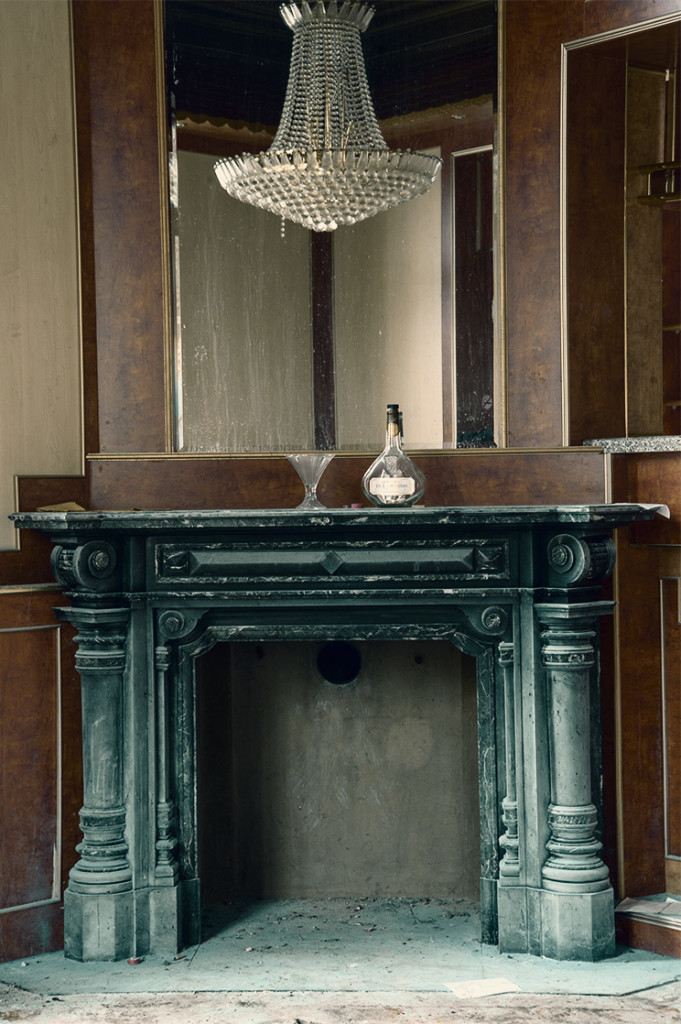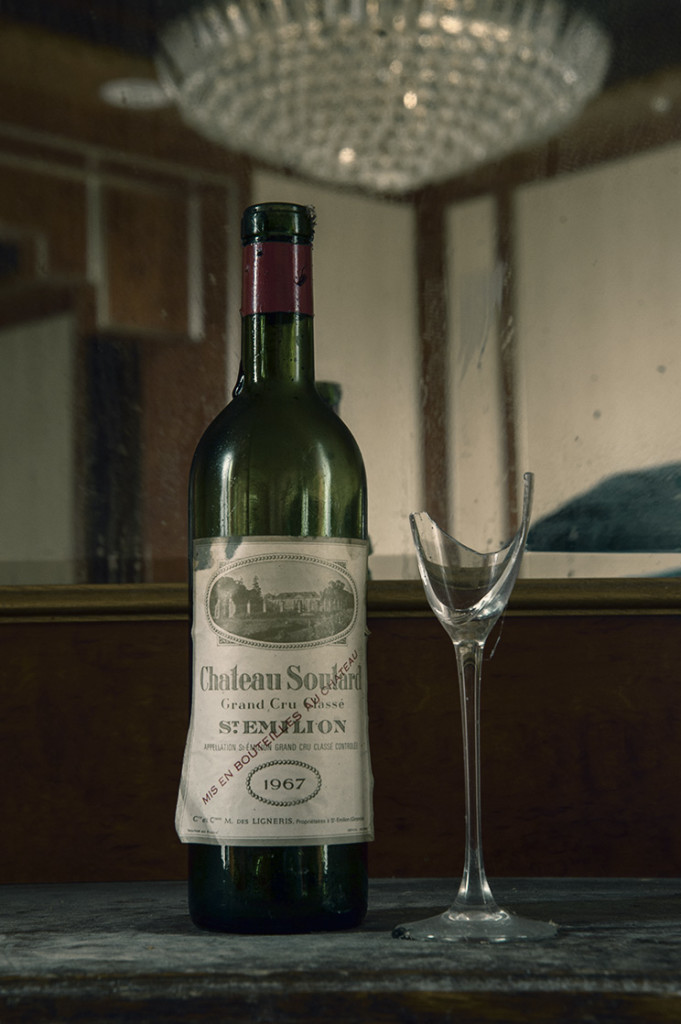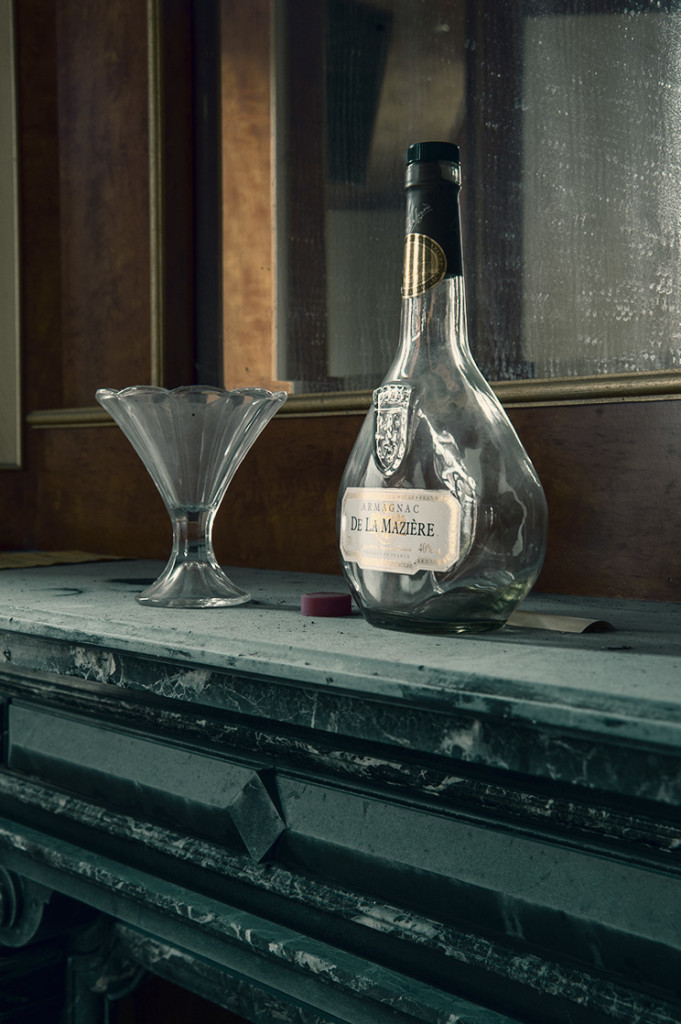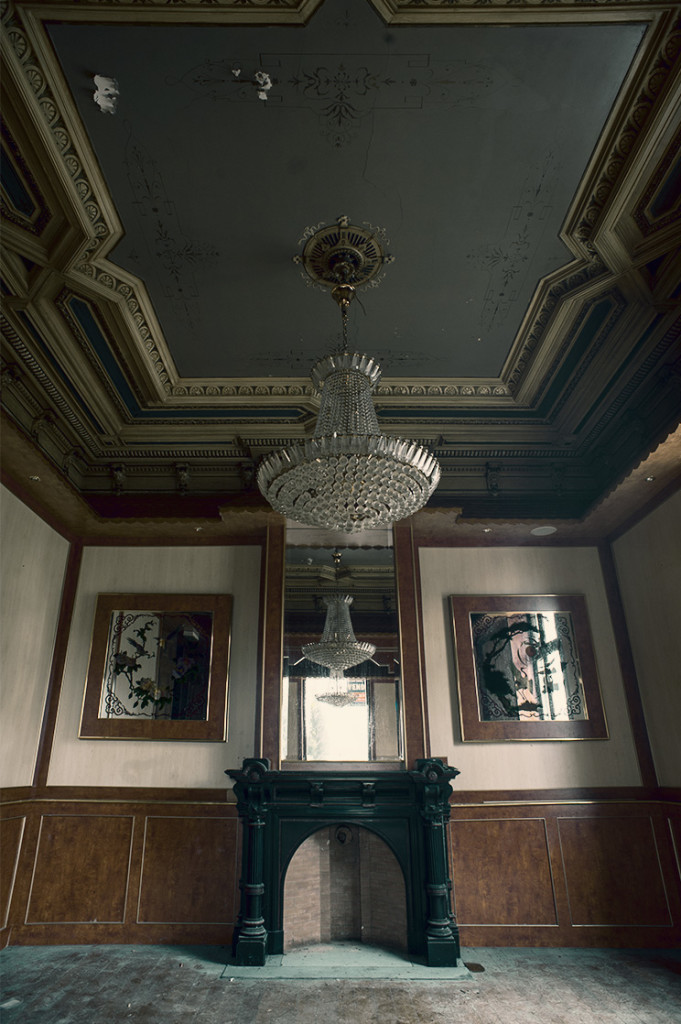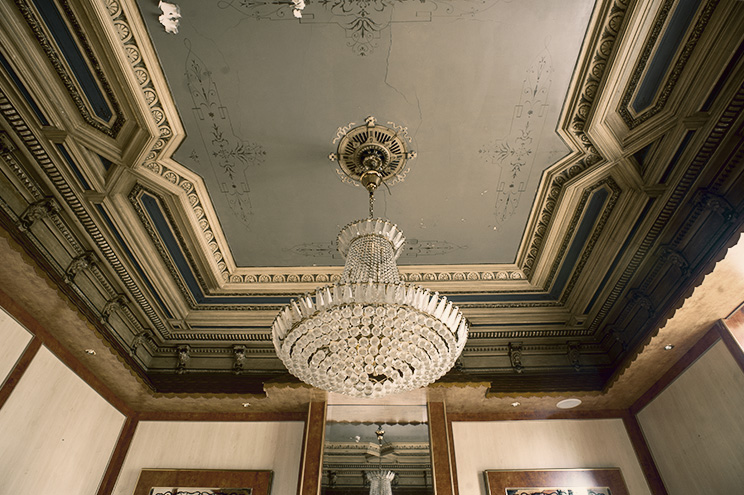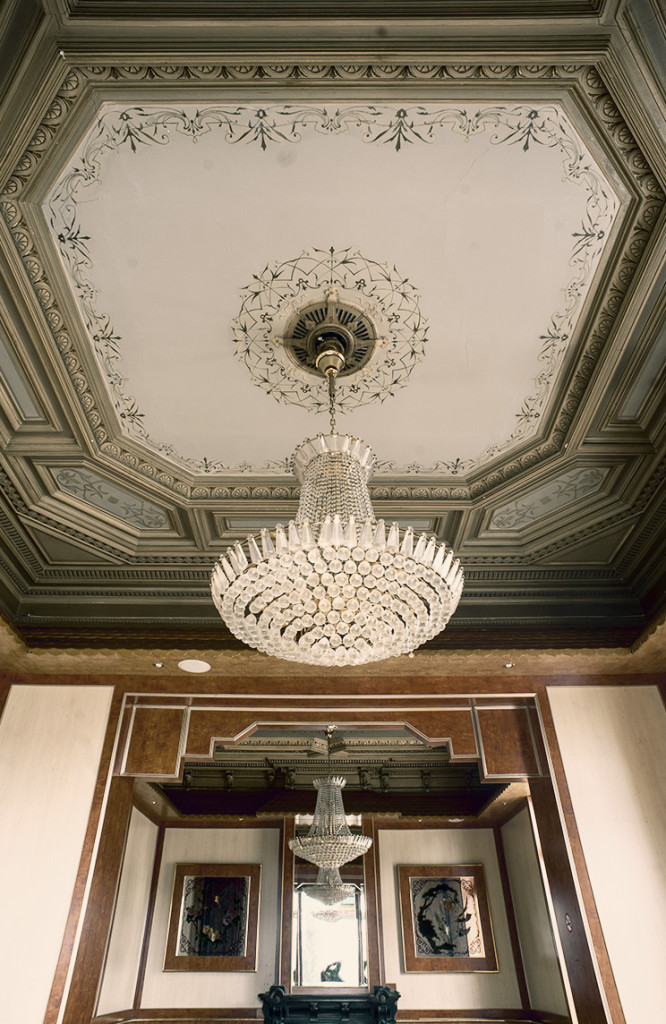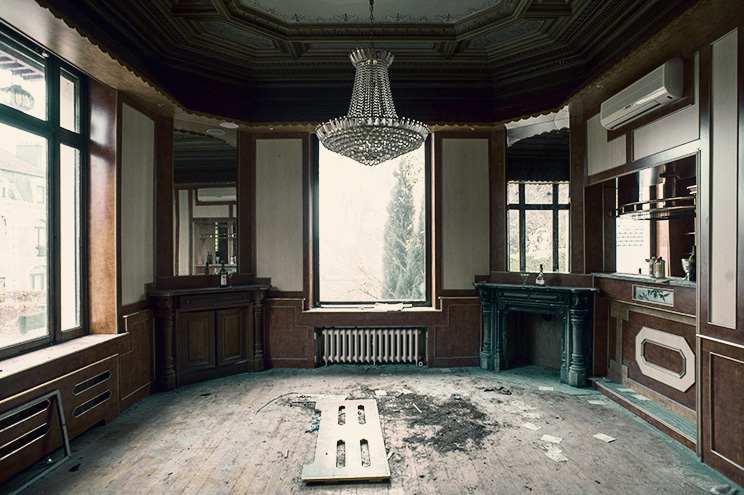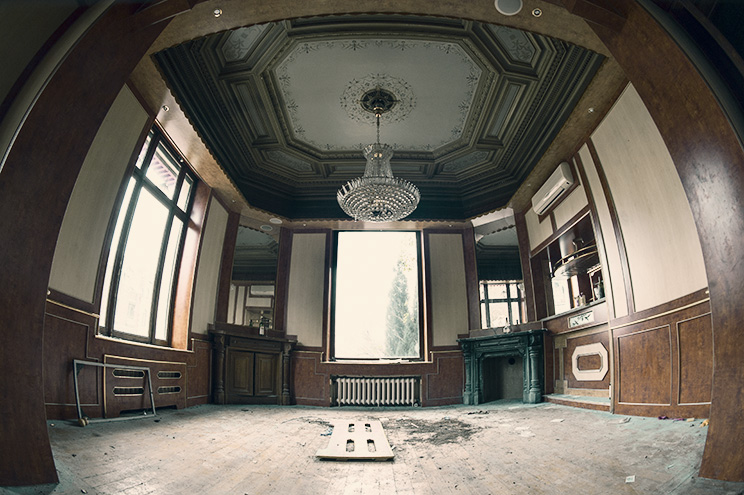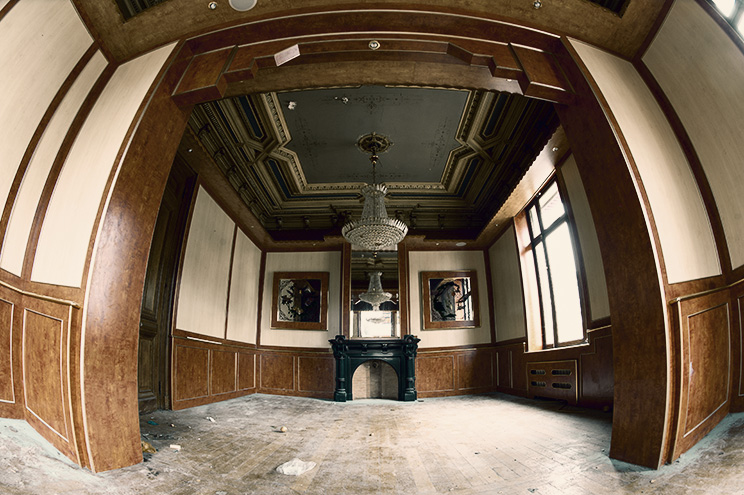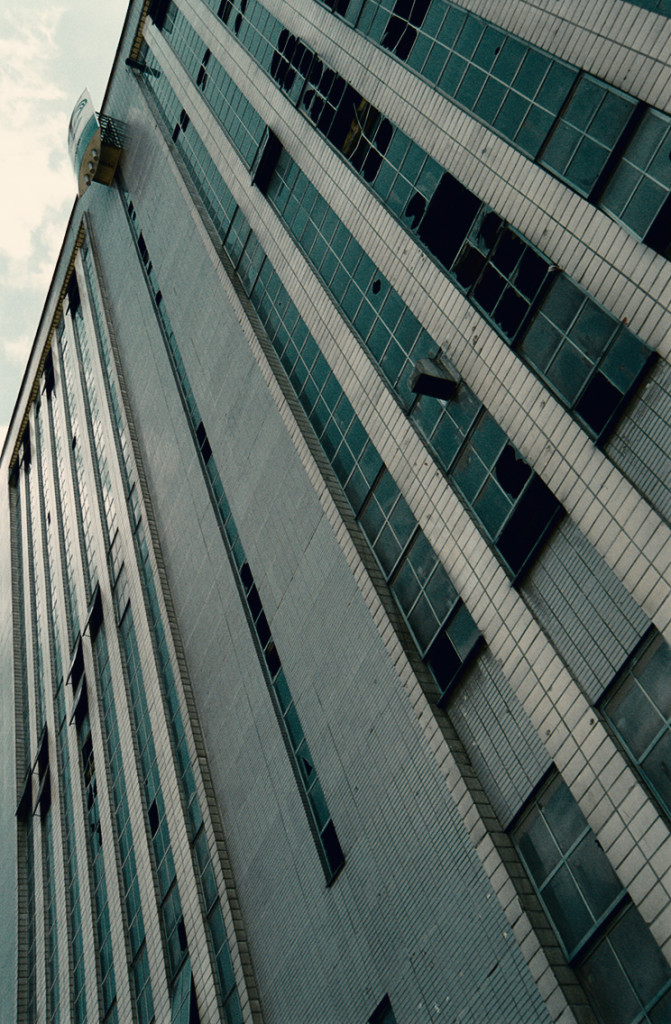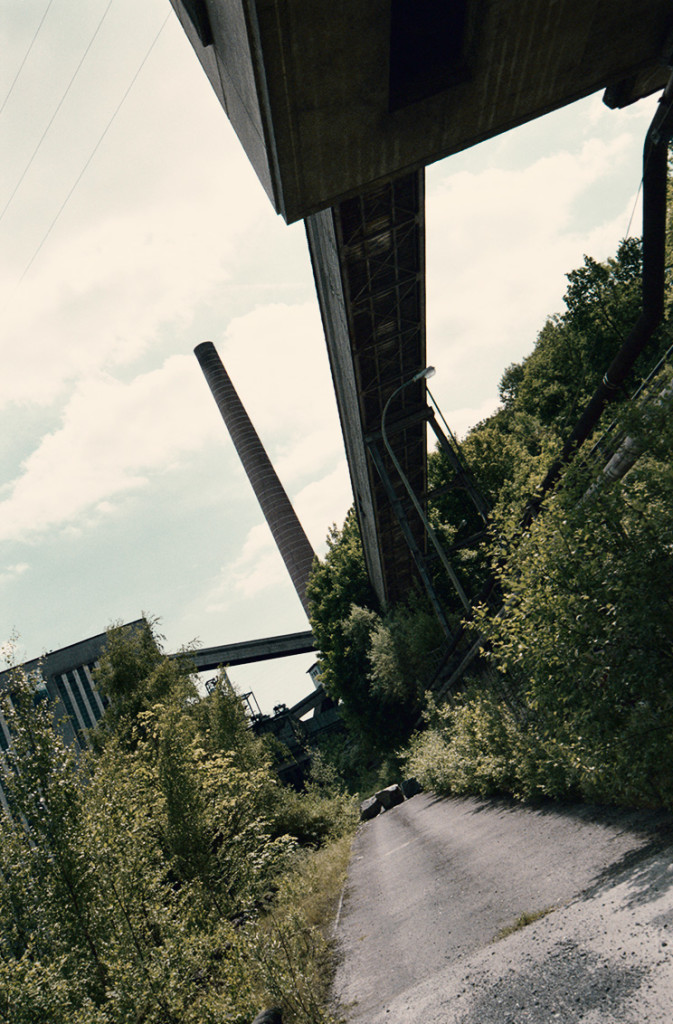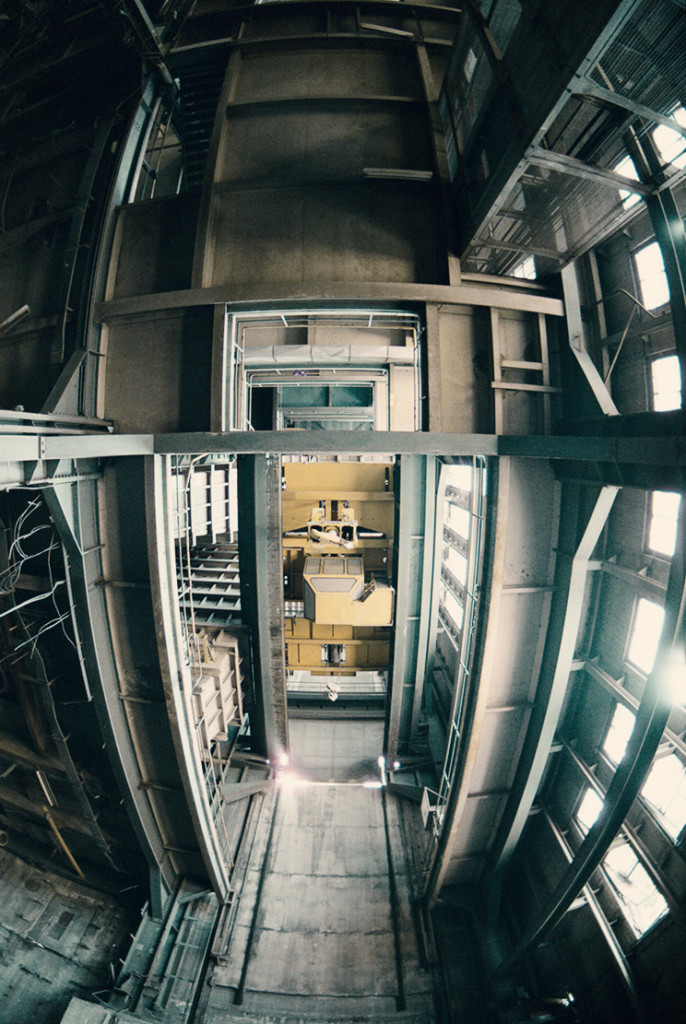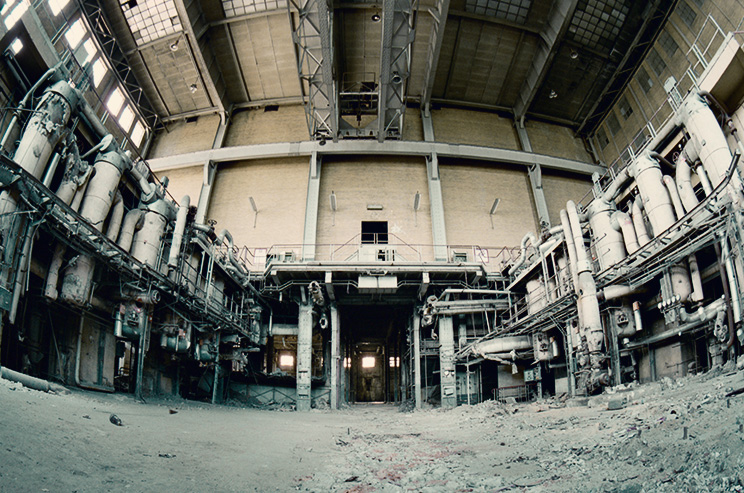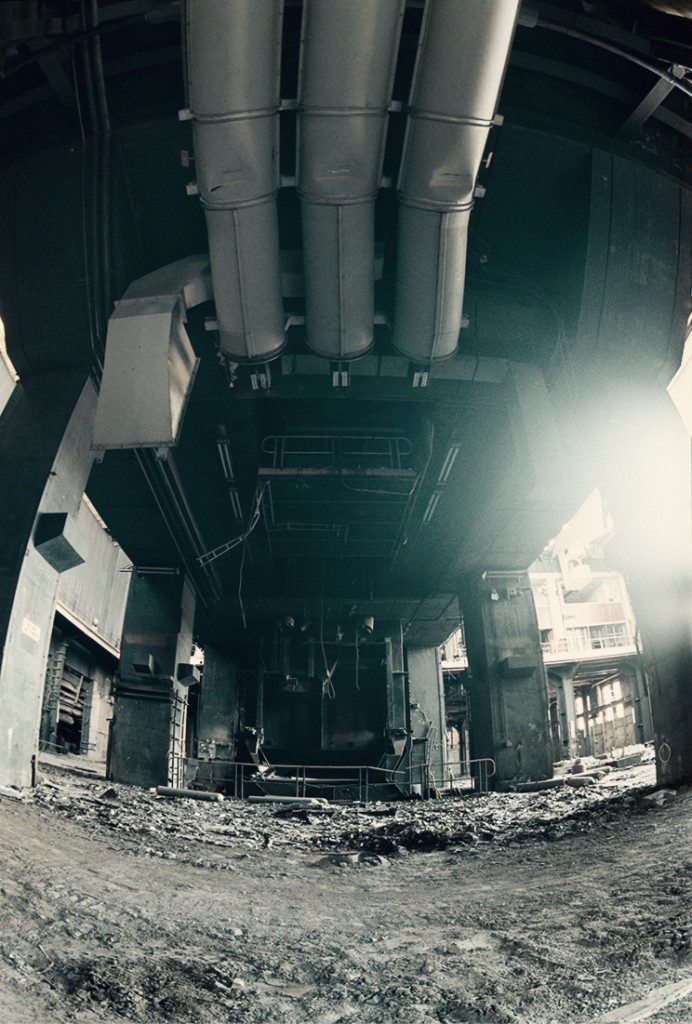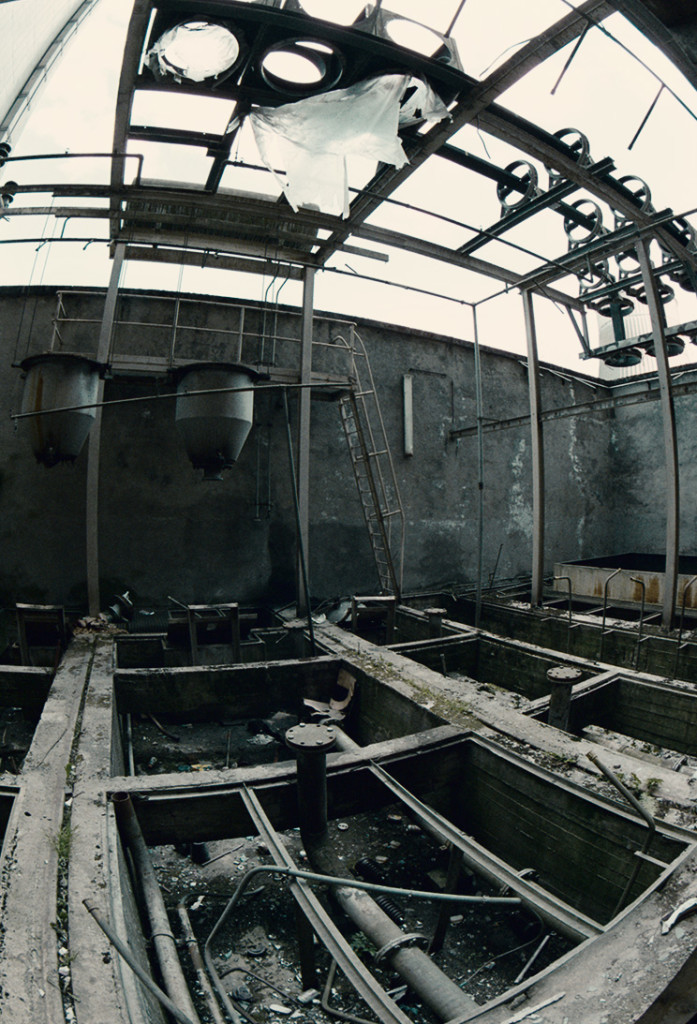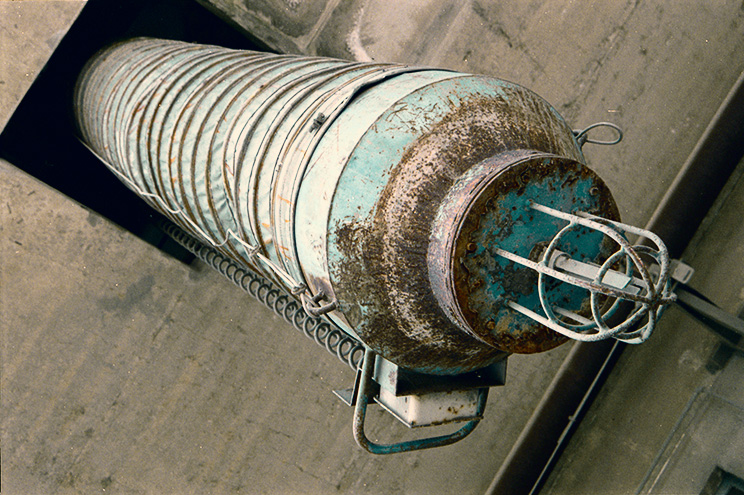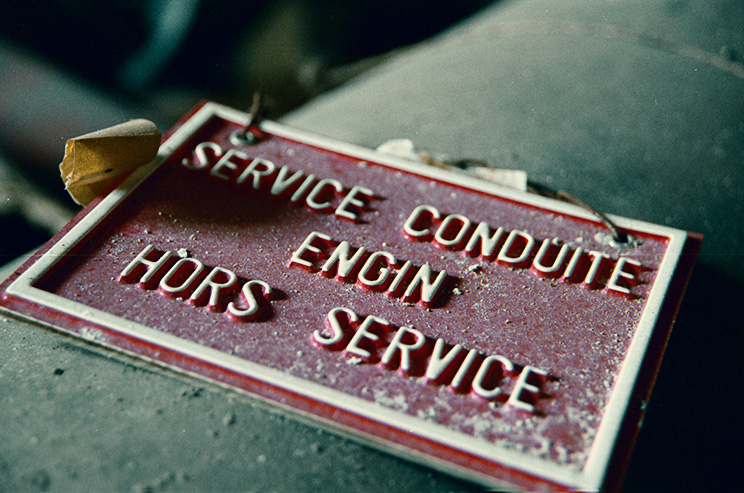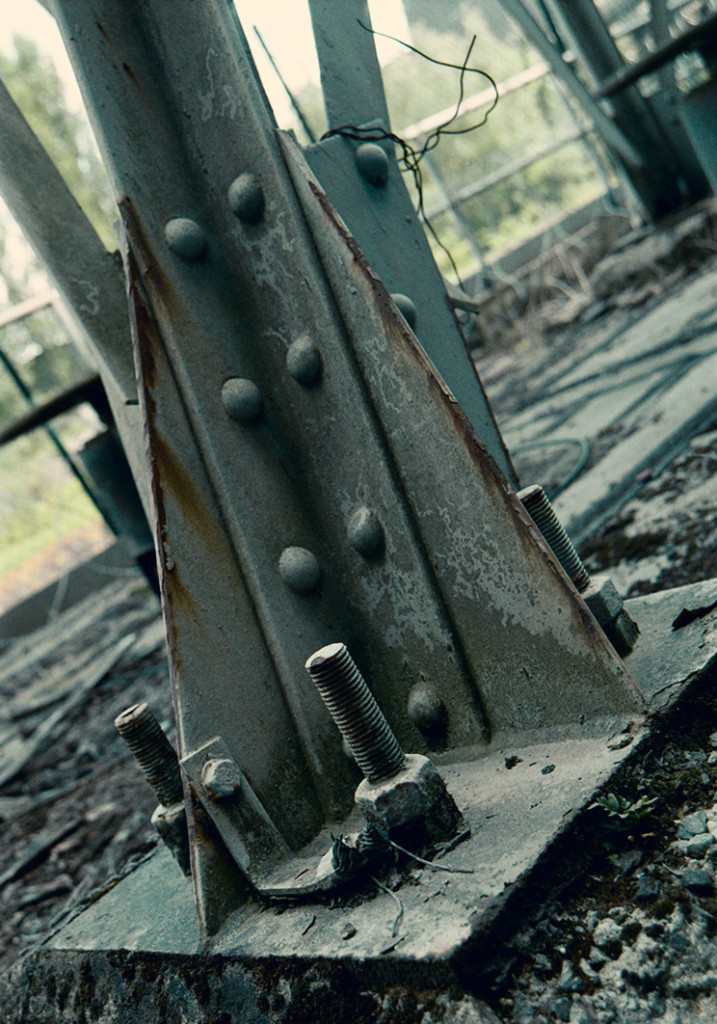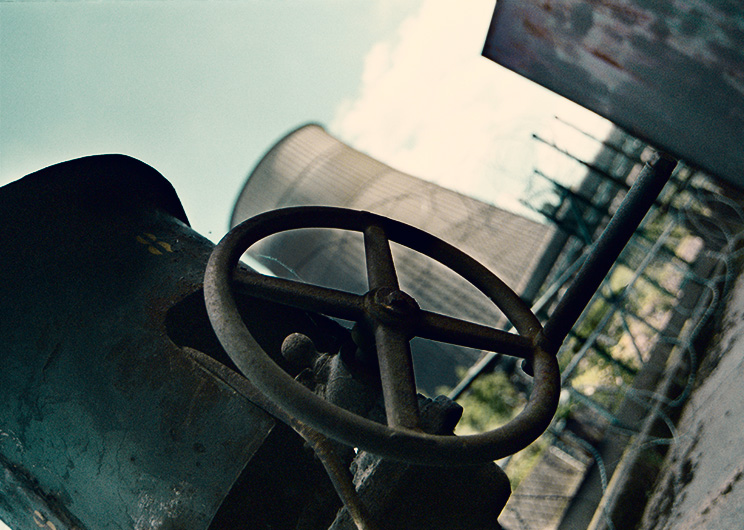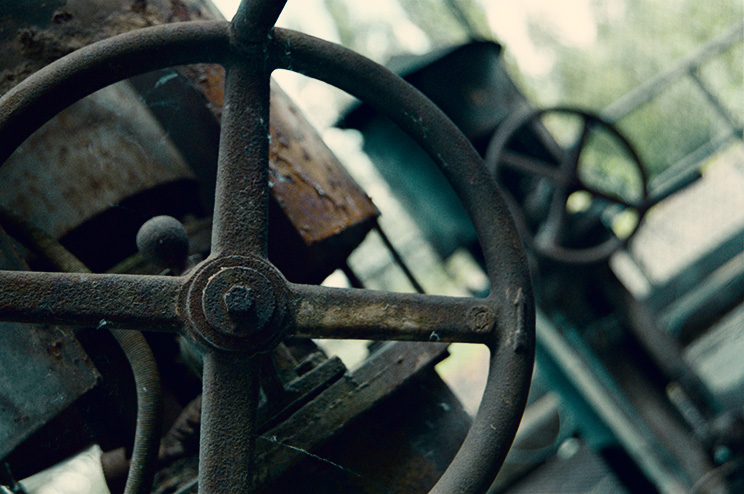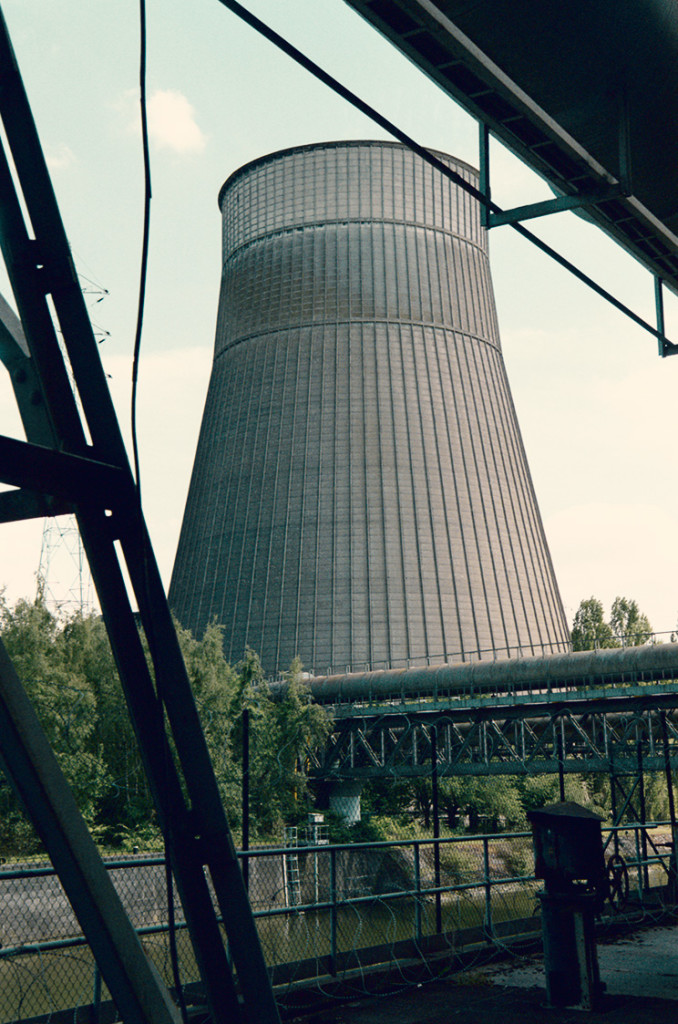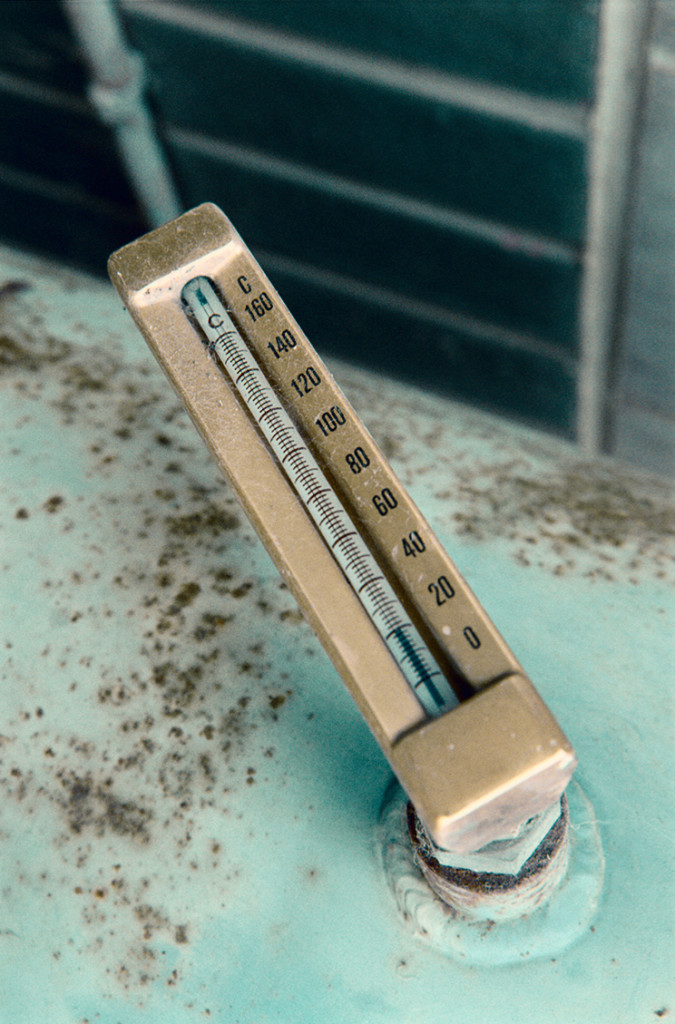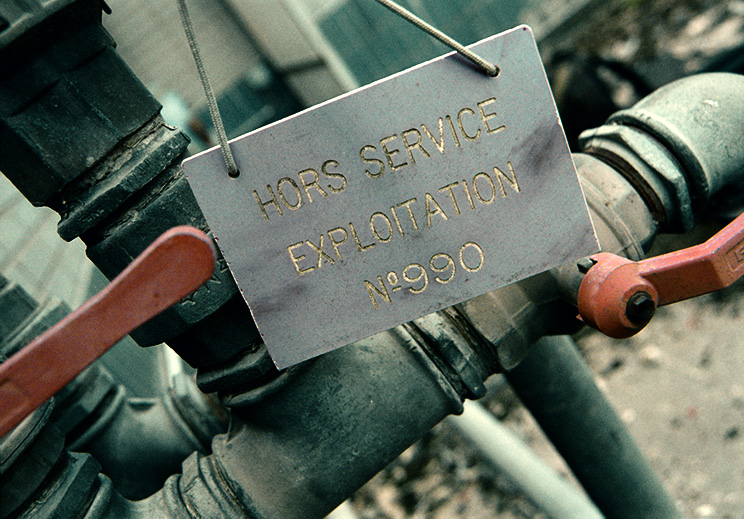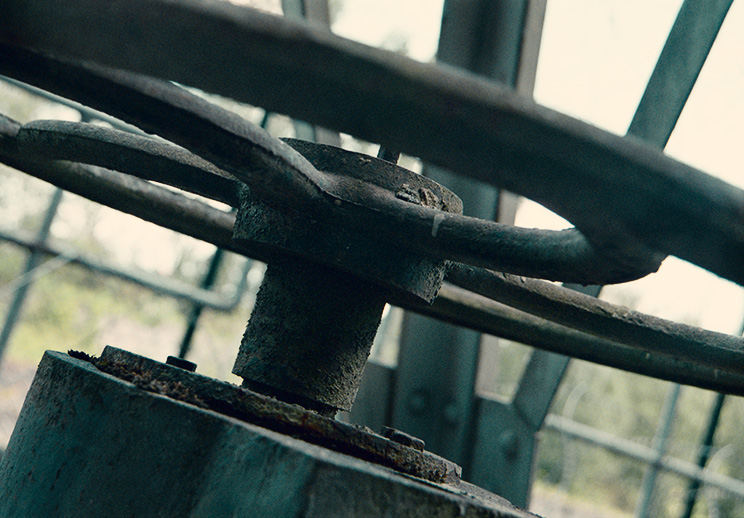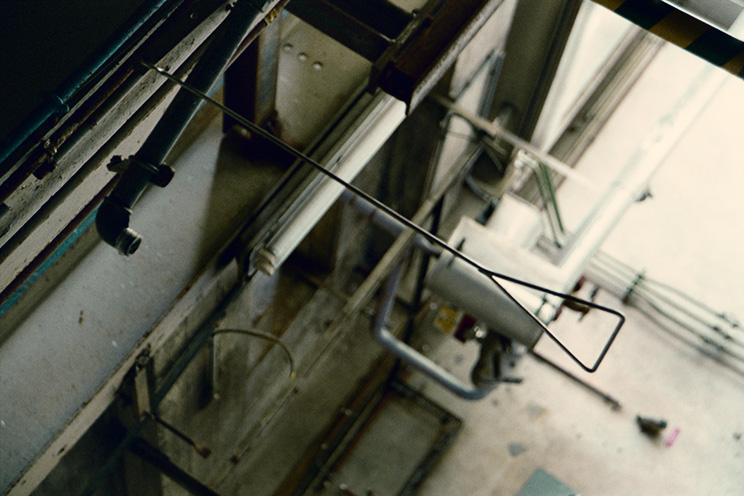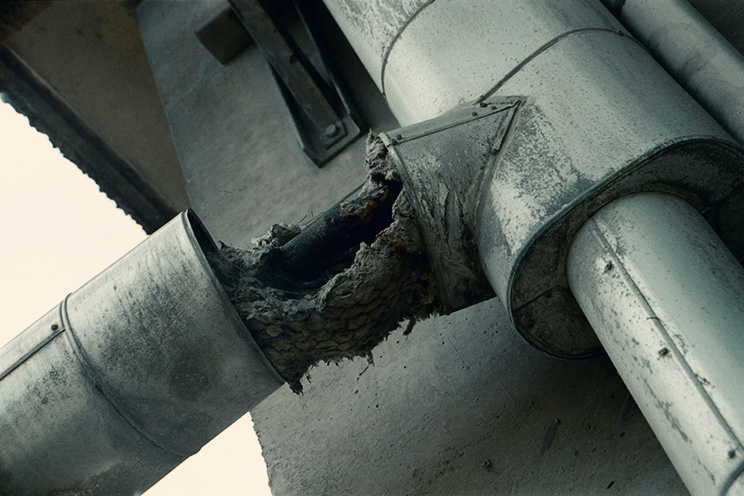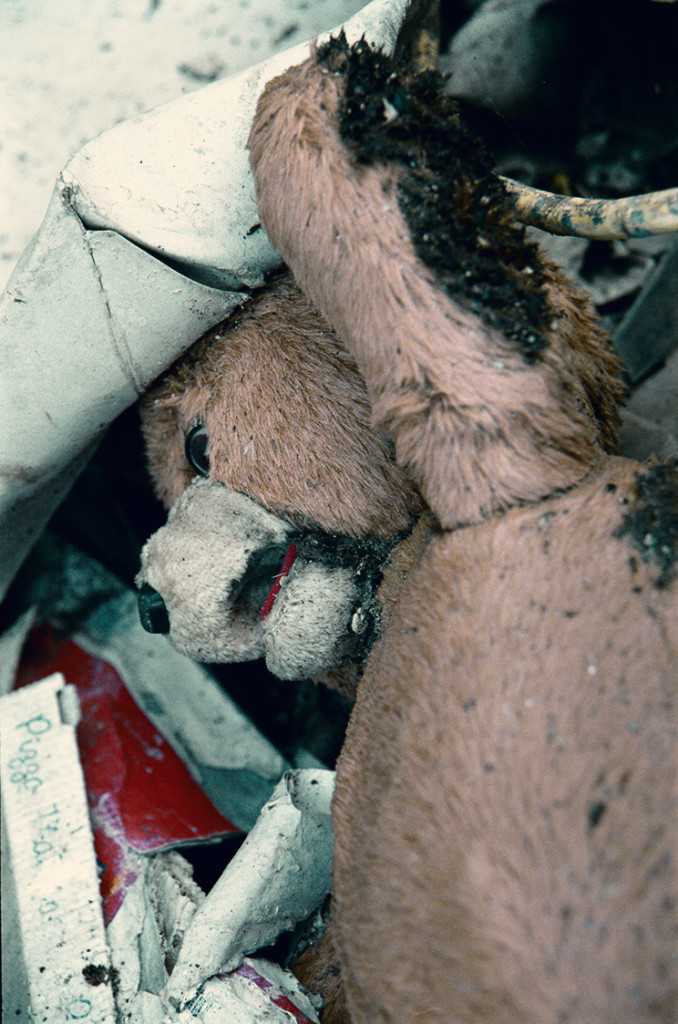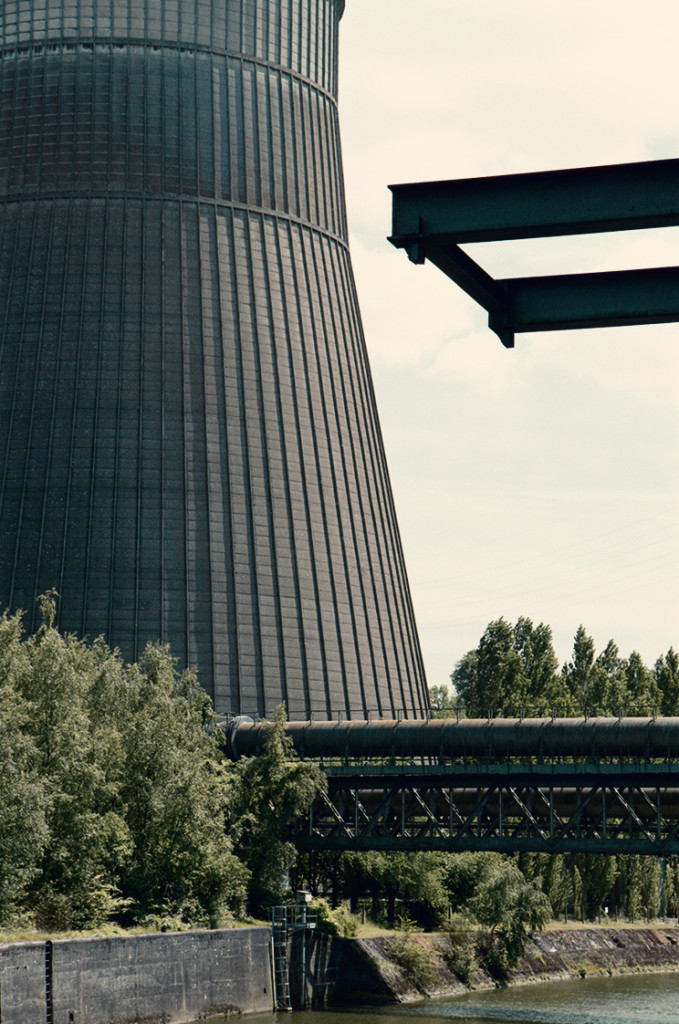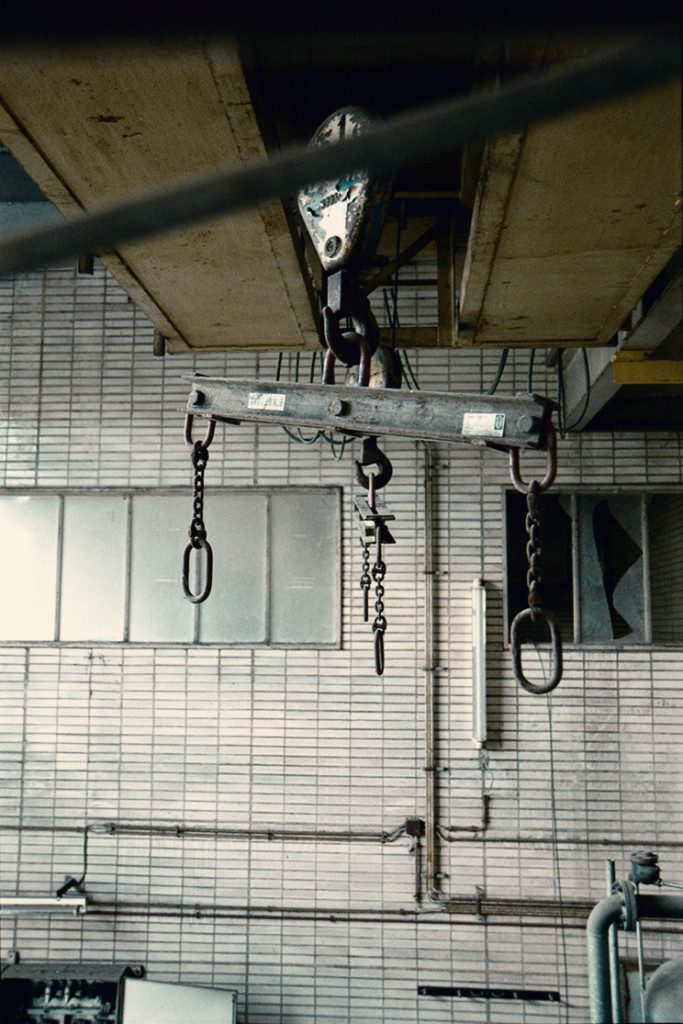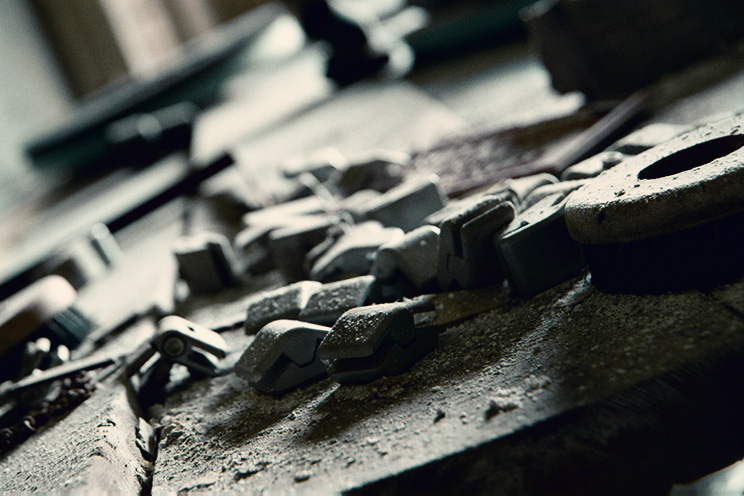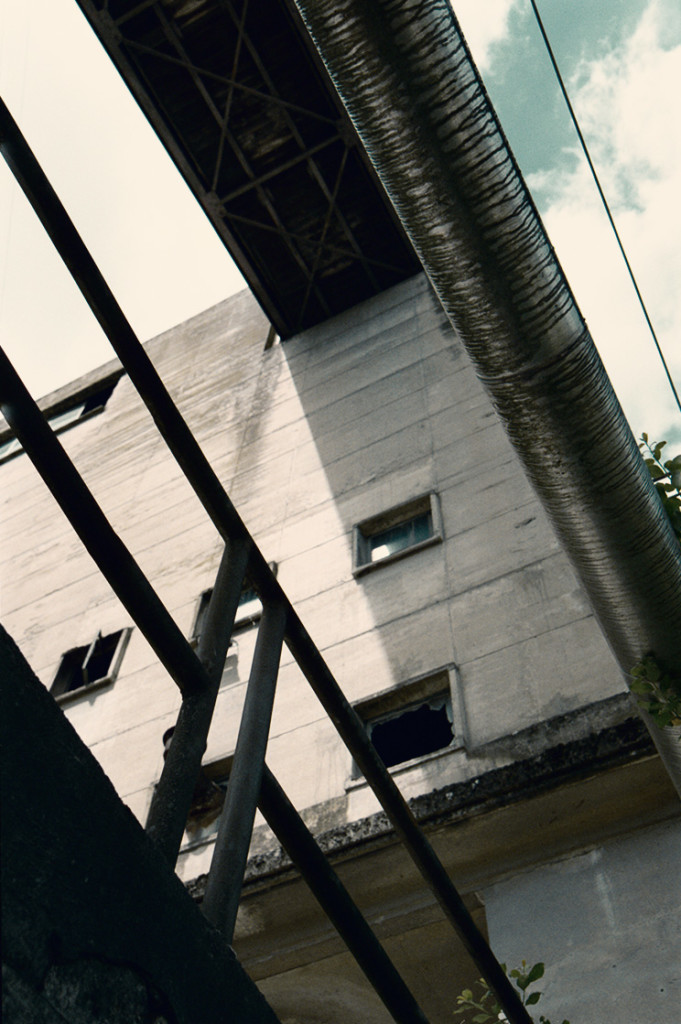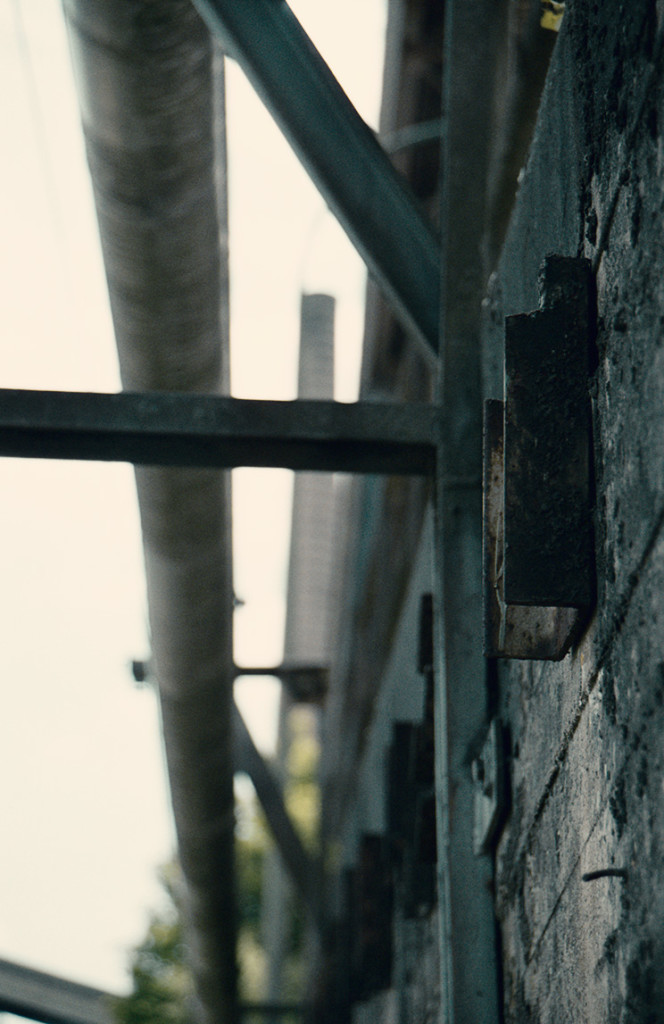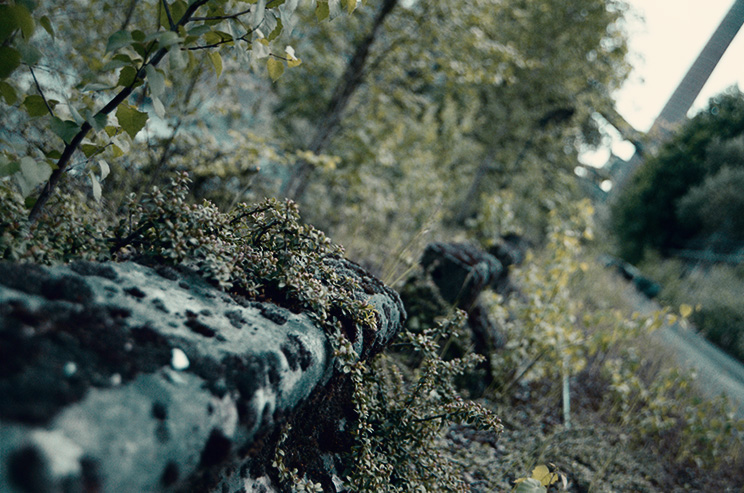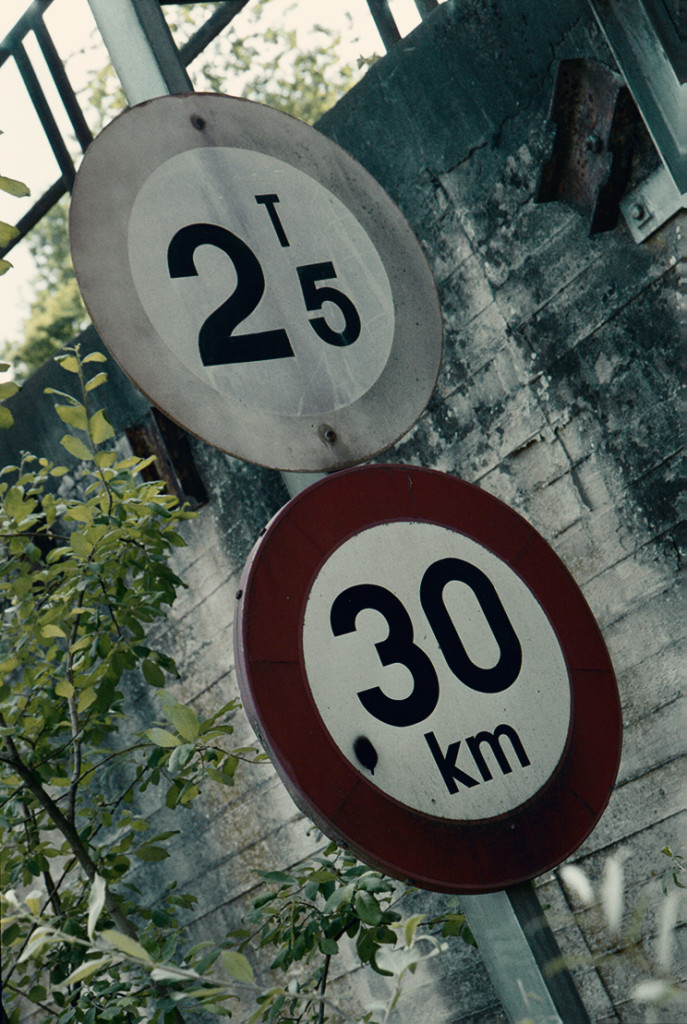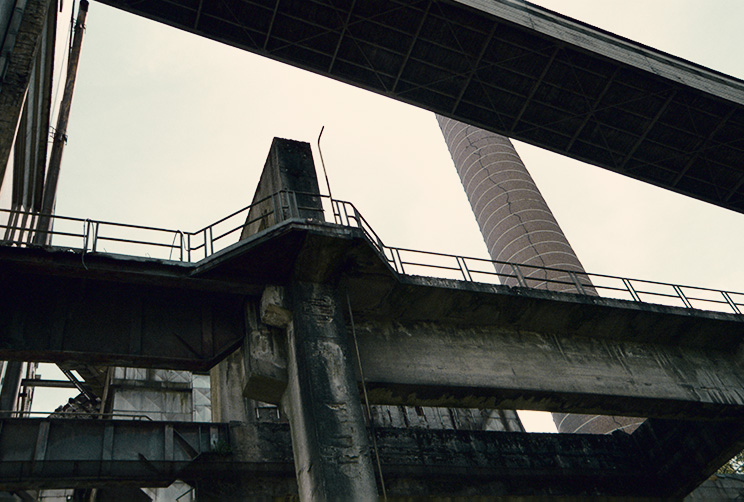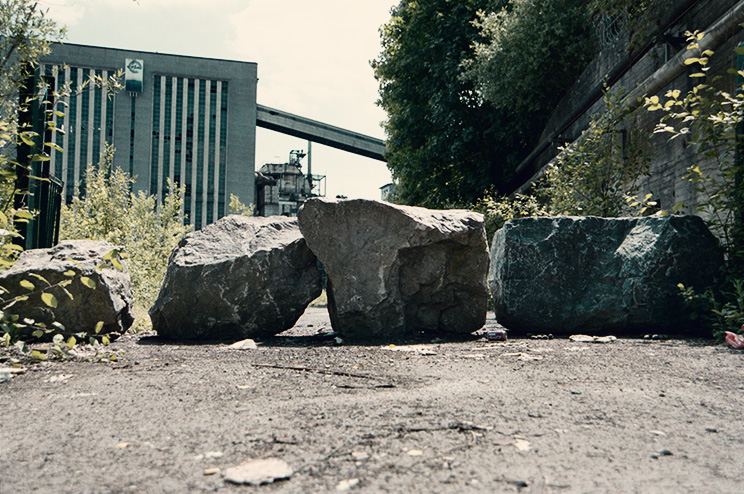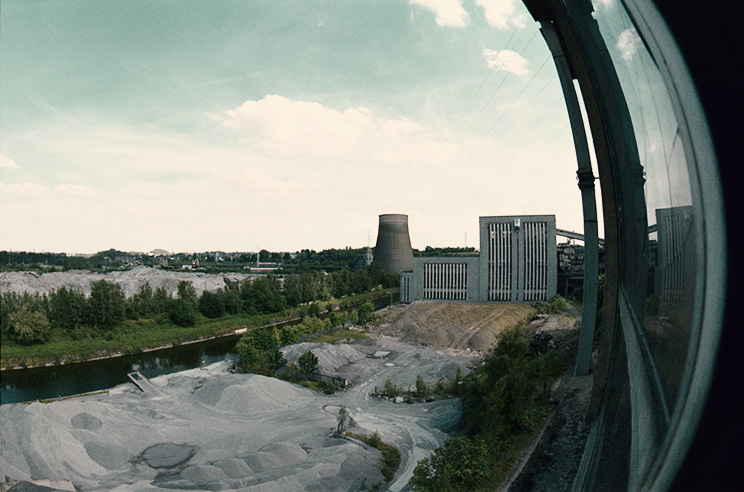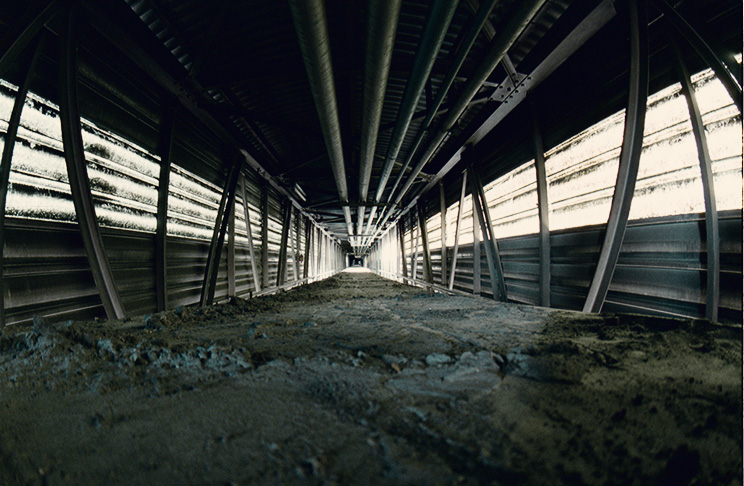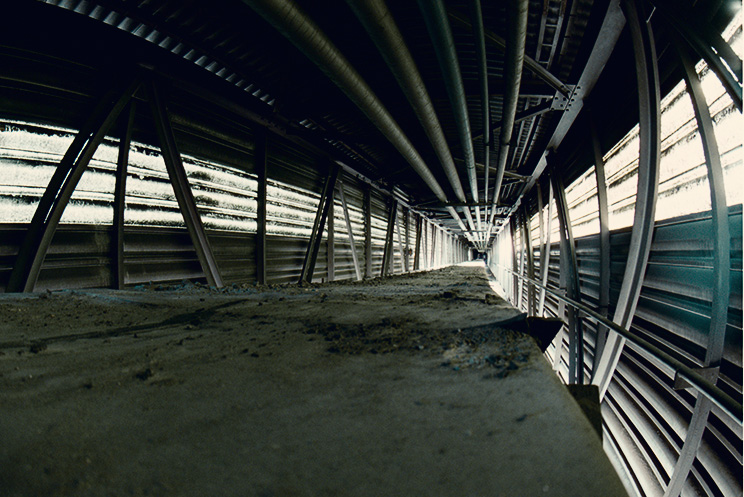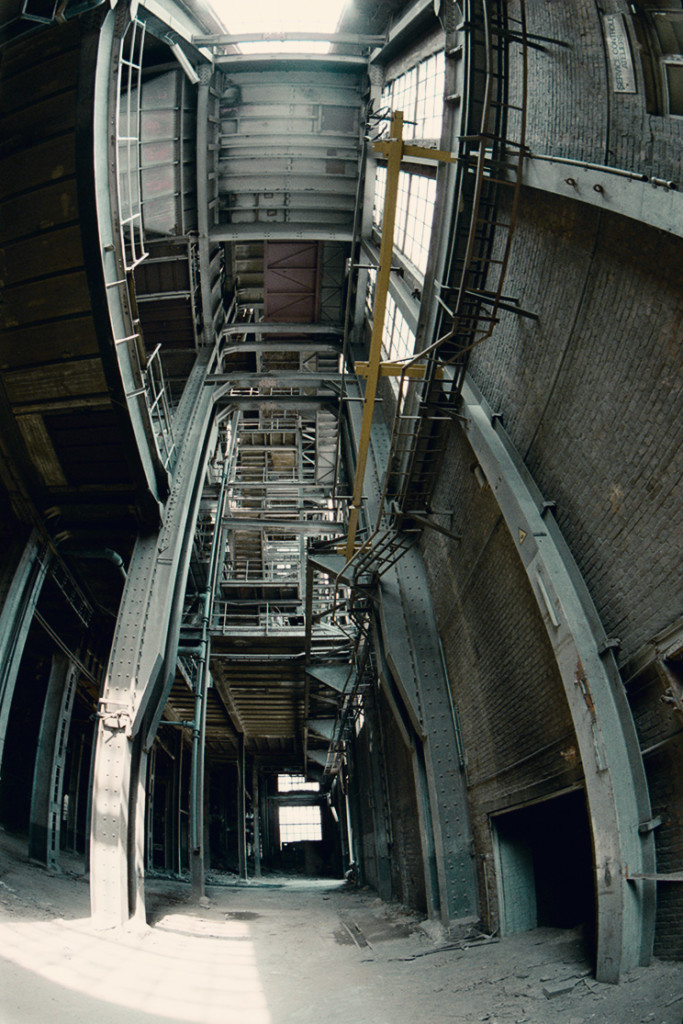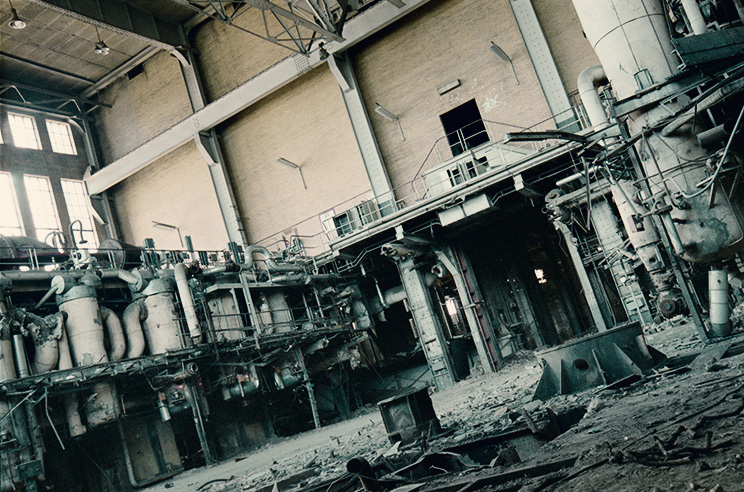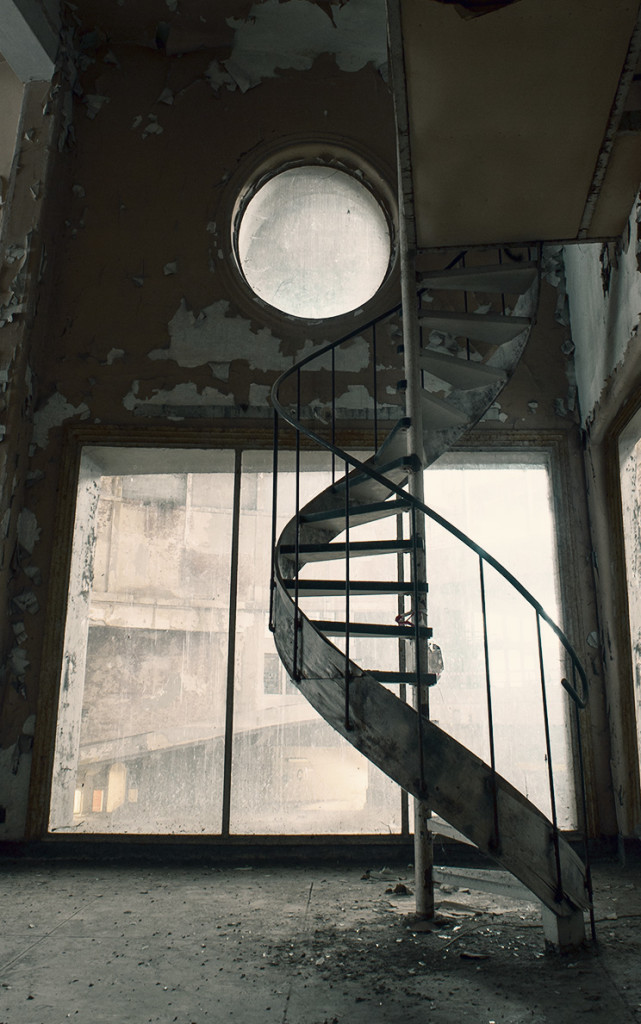
Ganz Belgien ist in dichten Nebel gehüllt und es ist eisig kalt. Die Sonne ist noch nicht aufgegangen als wir uns zu diesem Highlight des Urban Exploring aufmachen. Mitten in der Stadt gelegen ist dieser verlassene Ort eine Herausforderung der besonderen Art und unser Puls geht doch schon ein bisschen höher als wir die Steile Treppe zum Fusse des Gebäudes hinunter gehen.
Zu all dem kommt noch hinzu das sich eine Großbaustelle gegenüber dem Objekt unserer Begierde befindet, deren Kameras neugierig jeden filmen der sich die schmale Straße entlang traut.
Ein altes Dixi Klo gibt uns etwas Schutz und ich war noch nie so dankbar für Nebel und Dunkelheit. Wie die Katzen schleichen wir uns zu dem schmalen Spalt in der Wand und zwängen uns wie Schlangenmenschen hindurch. Viel besser hätten das die Artisten vor gut 100 Jahren die in diesem Zirkus gastierten auch nicht gemacht schießt es mir durch den Kopf, als mein Atem kurz stockt. Das Innere des Gebäudes ist taghell erleuchtet und es scheint als wenn Arbeiten im Gang wären. Wie lange hatten wir wohl Zeit bis Arbeiter eintreffen würden? ich schaue kurz auf die Uhr. Es ist kurz vor halb acht morgens. Es dämmert schon ein wenig. Wir würden uns beeilen müssen…
Der ursprünglich 1895 von Emile De Weerdt gebaute Winterzirkus besaß 41 normale Logen und 4 Vip Logen. Das Gebäude wurde zudem auch als Hippodrom und Kino genutzt sowie für Revue und Theatervorstellung. Der Zirkus bot Platz für insgesamt 3400 Zuschauer.
1920 wurde das Gebäude durch ein Feuer zerstört und vom Architekten Jules-Pascal Ledoux im Jahre 1923 neu errichtet.
1944 schließlich fand die letzte Vorstellung statt und das Gebäude stand 3 Jahre leer bis es 1947 von der Familie Mahy gekauft und zu einer Autoreparaturwerkstatt umgebaut wurde. Die Familie Mahy war bekannt für Ihre Oldtimer und nutzte die Werkstatt auch nach ihrer Schließung im Jahre 1978 noch eine Weile als Garage für ihre berühmte Sammlung, die inzwischen auf die “Autoworld” in Brüssel und das “Mahymobiles Museum” in Leuze-en-Hainaut verteilt wurde.
Vor Kurzem geriet der Winterzirkus dann noch einmal in die Schlagzeilen. Ein Student hatte versucht auf das Dach des Gebäudes zu klettern. Wer das Dach des Gebäudes kennt weiß aber das dies keine gute Idee ist. Und so kam was kommen musste und er stürzte in die Tiefe, was seinen sofortigen Tod zur Folge hatte. Unbestätigten Hinweisen nach wurde seine GoPro Kamera gefunden auf der er seinen Sturz noch selber aufgenommen hatte…
An dieser Stelle noch einmal eine eindringliche Warnung von uns. Urban Exploring erfordert ein hohes Maß an Erfahrung und Recherche.
Viele Locations verbergen unbekannte Gefahren an die Sie im Traum nicht denken würden. Lassen Sie Unwissenheit und mangelnde Erfahrung/Training nicht zur Gefahr für Sie werden. Wenn Sie sich für Urbex interessieren suchen Sie zumindest für den Anfang Anschluss an eine Erfahrene Gruppe! Gehen Sie niemals alleine!
Zur Zeit bestehen Pläne den Winterzirkus in eine Einkaufszentrum mit kleinen Geschäften umzubauen.
Belgium is blanketed in fog and is freezing cold. The sun has not risen up yet when we start our trip to this highlight of urban exploring. Located in the middle of the town center this lost place is anything but easy to explore and my heart beats quite a bit faster when we step down the steep staircase to the street that leeds to the building we are about to set foot in.
To cap it all a big building site is opposite to the object of our desire and the cameras are pryingly filming everyone who dares to walk down the small street to the wintercircus.
An old honey bucket is giving us some kind of shelter and I’m grateful for the dense fog and the gloom. Like cats we sneak to the small gap in the wall and worm ourselves into the building . The contortionists of the circus who resided here about a century ago couldn’t have it done better. Then I hold my breath for a second. The light is on inside the building and it looks as if building works have started. How much time will we have before the workers will come? I take a look at my watch. It is half past seven and sun is rising slowly. We have to hurry…
The winter circus was originally build in 1895 by Emile De Weerdt and contained 41 normal lounges and 4 vip lounges. The building was used as a circus, hippodrome, theater and cinema and could accommodate up to 3400 spectators.
The building was destroyed by a fire in 1920 and re build by architect Jules-Pascal Ledoux in 1923.
In 1944 the last show took place and the building stood empty for three years before it was sold in 1947 to the Mahy family who converted it into a car garage. The Mahy family was also famous for their old-timer collection and used the garage for their cars even after it’s closure in 1978. Meanwhile the collection is split between the “Autoworld” in Brussel and the “Mahymobiles museum” in Leuze-en-Hainaut.
Not long ago the place was in the headlines, when a student tried to walk over the roof of the building. Those of you who know the building also know that this is not a good idea and so the inevitable happened and he fell to death. According to unconfirmed reports his GoPro camera was found with the recording of his fall on it.
At this point we want to seriously warn you to do urban exploring without the necessary amount of experience and research.
A lot locations have hidden dangers that you cannot possibly imagine. Don’t let ignorance and lack of experience be your destiny!
If you are interested in urbex connect to a group of experienced explorers! Don’t ever go on your own!
Plans are to convert the circus into a shopping mall with small shops.




































